Quick filters:
Manchukuo emperor Stock Photos and Images
 Emperor of Manchukuo, Henry Pu Yi, meets with League of Nations commission. The League attempted to determine the causes of the Stock Photohttps://www.alamy.com/image-license-details/?v=1https://www.alamy.com/stock-photo-emperor-of-manchukuo-henry-pu-yi-meets-with-league-of-nations-commission-87523409.html
Emperor of Manchukuo, Henry Pu Yi, meets with League of Nations commission. The League attempted to determine the causes of the Stock Photohttps://www.alamy.com/image-license-details/?v=1https://www.alamy.com/stock-photo-emperor-of-manchukuo-henry-pu-yi-meets-with-league-of-nations-commission-87523409.htmlRMF2B101–Emperor of Manchukuo, Henry Pu Yi, meets with League of Nations commission. The League attempted to determine the causes of the
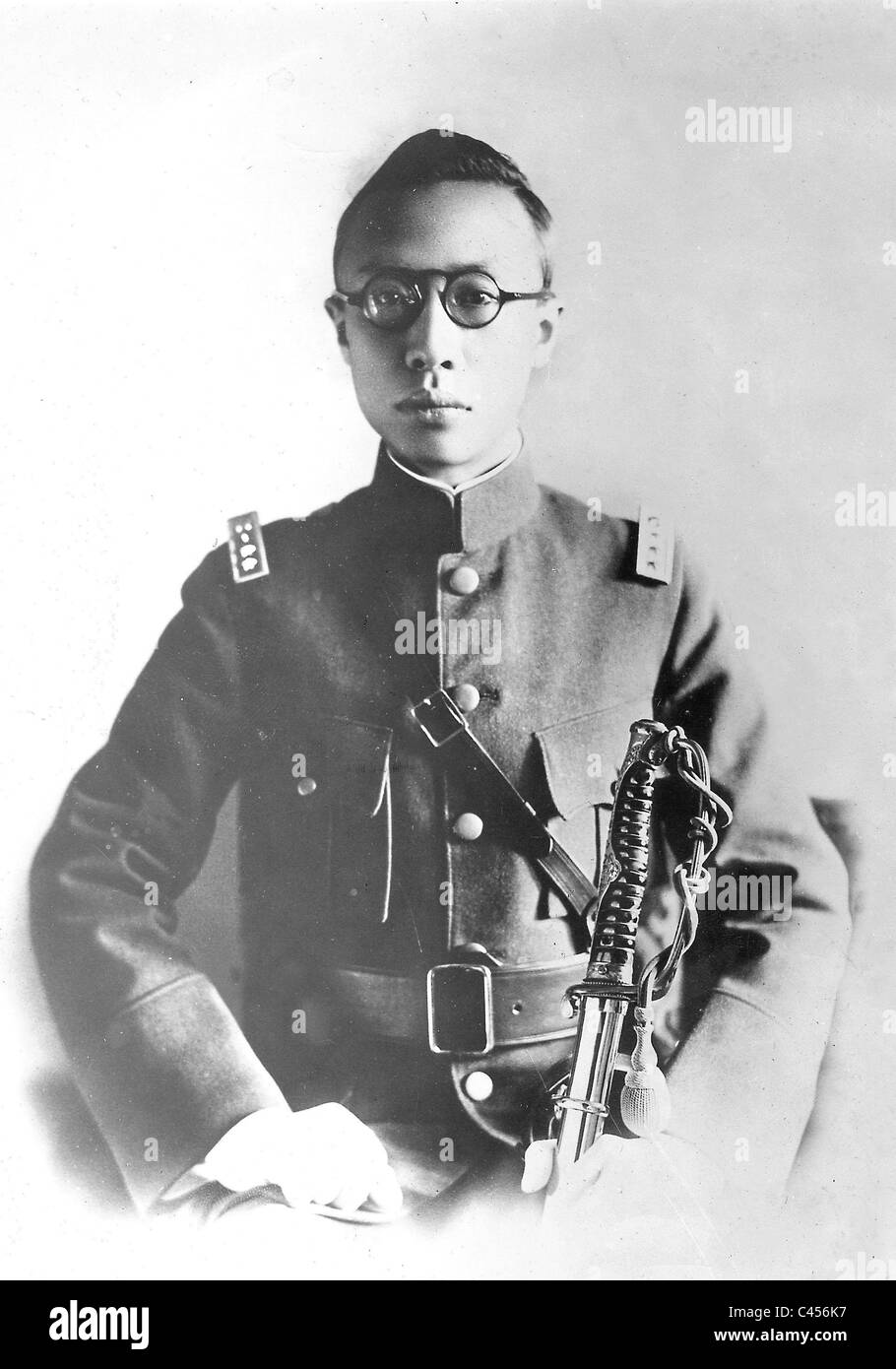 The designated Emperor of Manchukuo, Aisin-Gioro Puyi , 1934 Stock Photohttps://www.alamy.com/image-license-details/?v=1https://www.alamy.com/stock-photo-the-designated-emperor-of-manchukuo-aisin-gioro-puyi-1934-36994363.html
The designated Emperor of Manchukuo, Aisin-Gioro Puyi , 1934 Stock Photohttps://www.alamy.com/image-license-details/?v=1https://www.alamy.com/stock-photo-the-designated-emperor-of-manchukuo-aisin-gioro-puyi-1934-36994363.htmlRMC456K7–The designated Emperor of Manchukuo, Aisin-Gioro Puyi , 1934
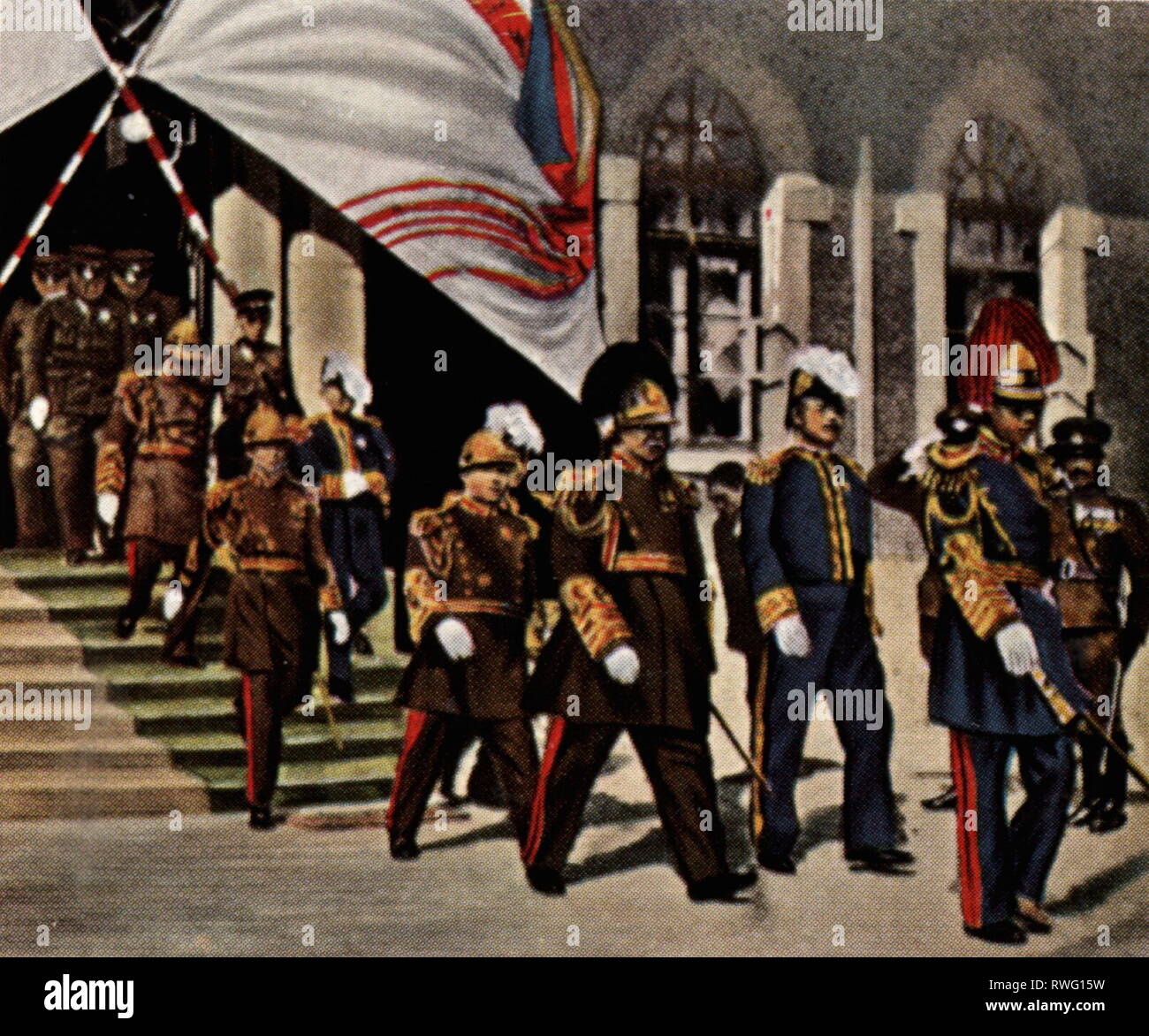 Puyi (Xuantong), 7.2.1906 - 17.10.1967, Emperor of Manchukuo 1.3.1934 - 15.8.1945, full length (on the right), after the coronation, 1.3.1934, coloured photograph, cigarette card, series 'Die Nachkriegszeit', 1935, Additional-Rights-Clearance-Info-Not-Available Stock Photohttps://www.alamy.com/image-license-details/?v=1https://www.alamy.com/puyi-xuantong-721906-17101967-emperor-of-manchukuo-131934-1581945-full-length-on-the-right-after-the-coronation-131934-coloured-photograph-cigarette-card-series-die-nachkriegszeit-1935-additional-rights-clearance-info-not-available-image239453365.html
Puyi (Xuantong), 7.2.1906 - 17.10.1967, Emperor of Manchukuo 1.3.1934 - 15.8.1945, full length (on the right), after the coronation, 1.3.1934, coloured photograph, cigarette card, series 'Die Nachkriegszeit', 1935, Additional-Rights-Clearance-Info-Not-Available Stock Photohttps://www.alamy.com/image-license-details/?v=1https://www.alamy.com/puyi-xuantong-721906-17101967-emperor-of-manchukuo-131934-1581945-full-length-on-the-right-after-the-coronation-131934-coloured-photograph-cigarette-card-series-die-nachkriegszeit-1935-additional-rights-clearance-info-not-available-image239453365.htmlRMRWG15W–Puyi (Xuantong), 7.2.1906 - 17.10.1967, Emperor of Manchukuo 1.3.1934 - 15.8.1945, full length (on the right), after the coronation, 1.3.1934, coloured photograph, cigarette card, series 'Die Nachkriegszeit', 1935, Additional-Rights-Clearance-Info-Not-Available
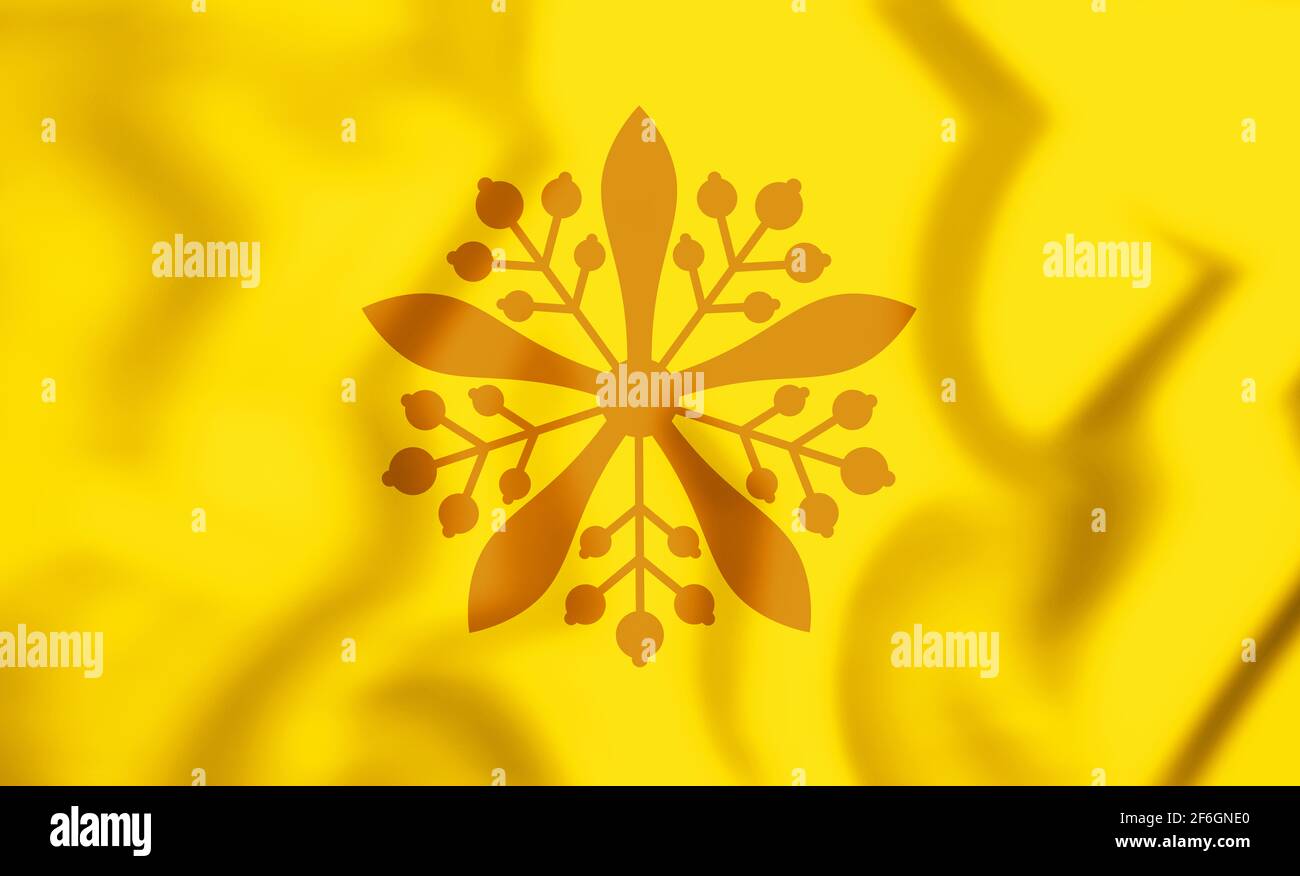 3D Flag of Emperor of Manchukuo. 3D Illustration. Stock Photohttps://www.alamy.com/image-license-details/?v=1https://www.alamy.com/3d-flag-of-emperor-of-manchukuo-3d-illustration-image417104856.html
3D Flag of Emperor of Manchukuo. 3D Illustration. Stock Photohttps://www.alamy.com/image-license-details/?v=1https://www.alamy.com/3d-flag-of-emperor-of-manchukuo-3d-illustration-image417104856.htmlRF2F6GNE0–3D Flag of Emperor of Manchukuo. 3D Illustration.
 Manchukuo Emperor Arrives. . Manchukuo Emperor Kangte, in the Imperial car, is seen as arriving at the Imperial detached palace in Askasaka Ward, from Tokyo station. June 26, 1940. (Photo by The Domei News Photos Service). Stock Photohttps://www.alamy.com/image-license-details/?v=1https://www.alamy.com/manchukuo-emperor-arrives-manchukuo-emperor-kangte-in-the-imperial-car-is-seen-as-arriving-at-the-imperial-detached-palace-in-askasaka-ward-from-tokyo-station-june-26-1940-photo-by-the-domei-news-photos-service-image463566953.html
Manchukuo Emperor Arrives. . Manchukuo Emperor Kangte, in the Imperial car, is seen as arriving at the Imperial detached palace in Askasaka Ward, from Tokyo station. June 26, 1940. (Photo by The Domei News Photos Service). Stock Photohttps://www.alamy.com/image-license-details/?v=1https://www.alamy.com/manchukuo-emperor-arrives-manchukuo-emperor-kangte-in-the-imperial-car-is-seen-as-arriving-at-the-imperial-detached-palace-in-askasaka-ward-from-tokyo-station-june-26-1940-photo-by-the-domei-news-photos-service-image463566953.htmlRM2HX58AH–Manchukuo Emperor Arrives. . Manchukuo Emperor Kangte, in the Imperial car, is seen as arriving at the Imperial detached palace in Askasaka Ward, from Tokyo station. June 26, 1940. (Photo by The Domei News Photos Service).
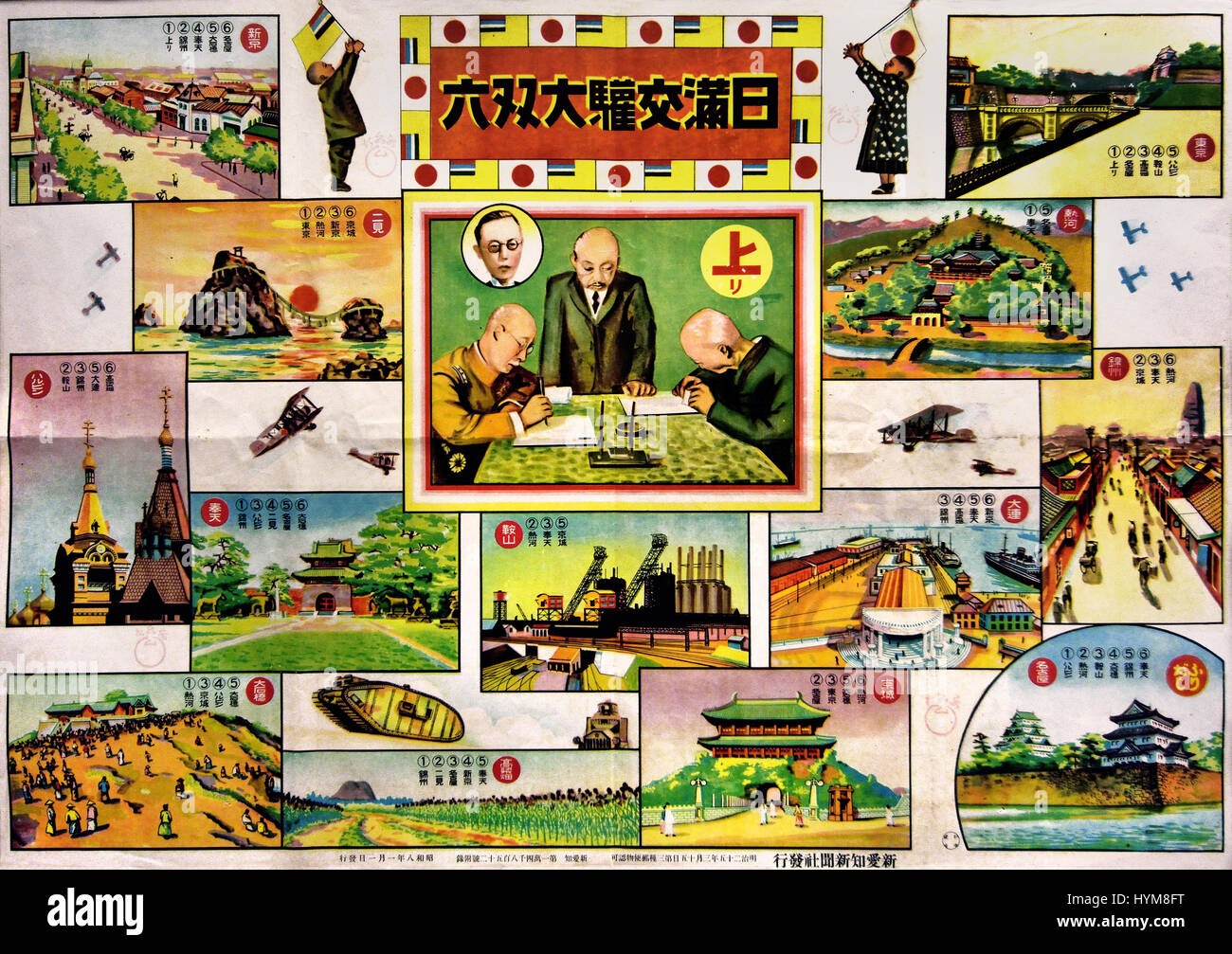 Nichi-man kokan dai-sugoroku (Japan-Manchukuo Fraternity Board Game) Japanese 1933 Published by: Kodansha biographyPrint artist: Sugimoto Kenkichi Stock Photohttps://www.alamy.com/image-license-details/?v=1https://www.alamy.com/stock-photo-nichi-man-kokan-dai-sugoroku-japan-manchukuo-fraternity-board-game-137514044.html
Nichi-man kokan dai-sugoroku (Japan-Manchukuo Fraternity Board Game) Japanese 1933 Published by: Kodansha biographyPrint artist: Sugimoto Kenkichi Stock Photohttps://www.alamy.com/image-license-details/?v=1https://www.alamy.com/stock-photo-nichi-man-kokan-dai-sugoroku-japan-manchukuo-fraternity-board-game-137514044.htmlRMHYM8FT–Nichi-man kokan dai-sugoroku (Japan-Manchukuo Fraternity Board Game) Japanese 1933 Published by: Kodansha biographyPrint artist: Sugimoto Kenkichi
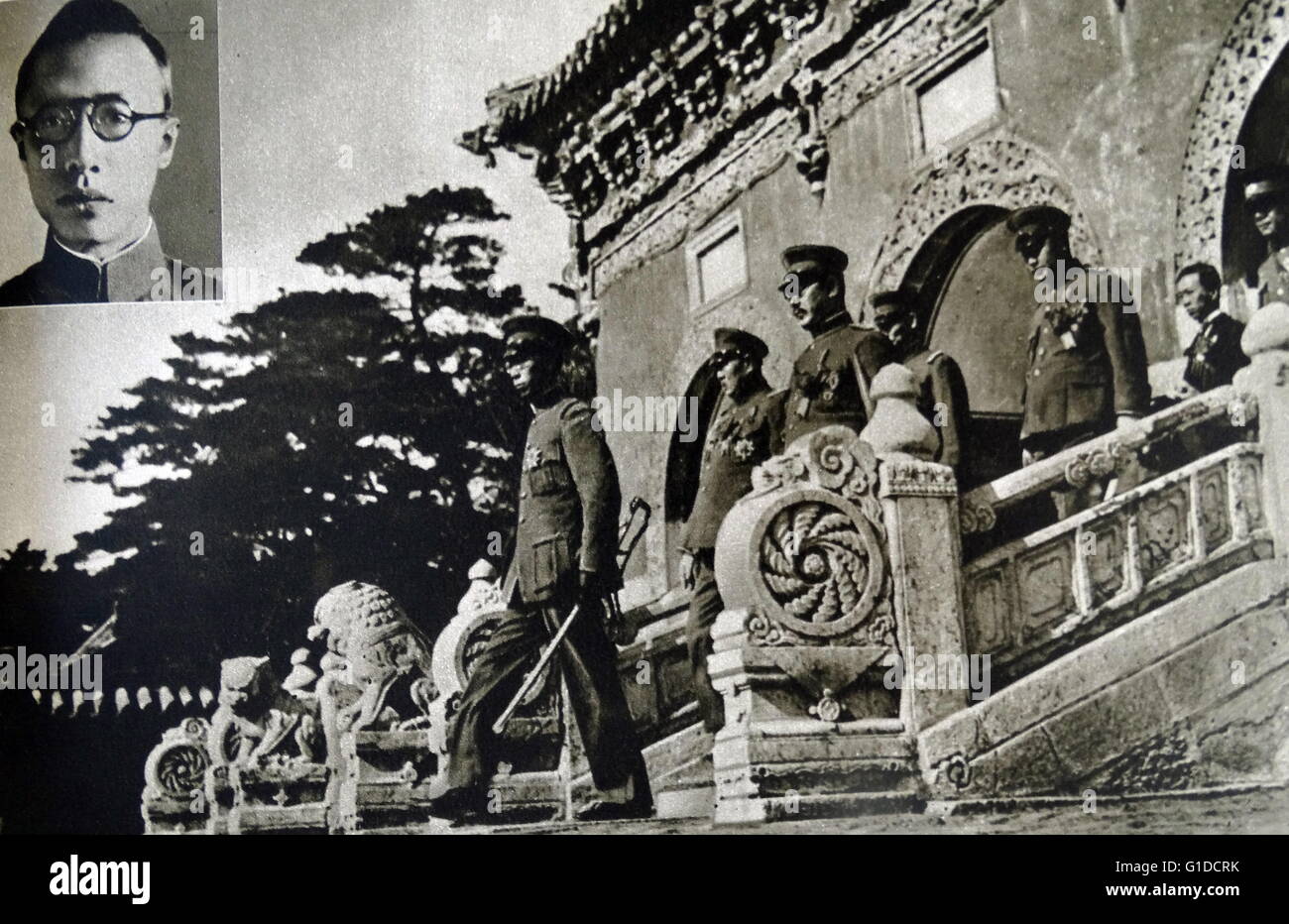 Photographic print of Emperor Puyi's (1906-1967) soldiers in the puppet state of Manchukuo, Mongolia. Dated 20th Century Stock Photohttps://www.alamy.com/image-license-details/?v=1https://www.alamy.com/stock-photo-photographic-print-of-emperor-puyis-1906-1967-soldiers-in-the-puppet-104172311.html
Photographic print of Emperor Puyi's (1906-1967) soldiers in the puppet state of Manchukuo, Mongolia. Dated 20th Century Stock Photohttps://www.alamy.com/image-license-details/?v=1https://www.alamy.com/stock-photo-photographic-print-of-emperor-puyis-1906-1967-soldiers-in-the-puppet-104172311.htmlRMG1DCRK–Photographic print of Emperor Puyi's (1906-1967) soldiers in the puppet state of Manchukuo, Mongolia. Dated 20th Century
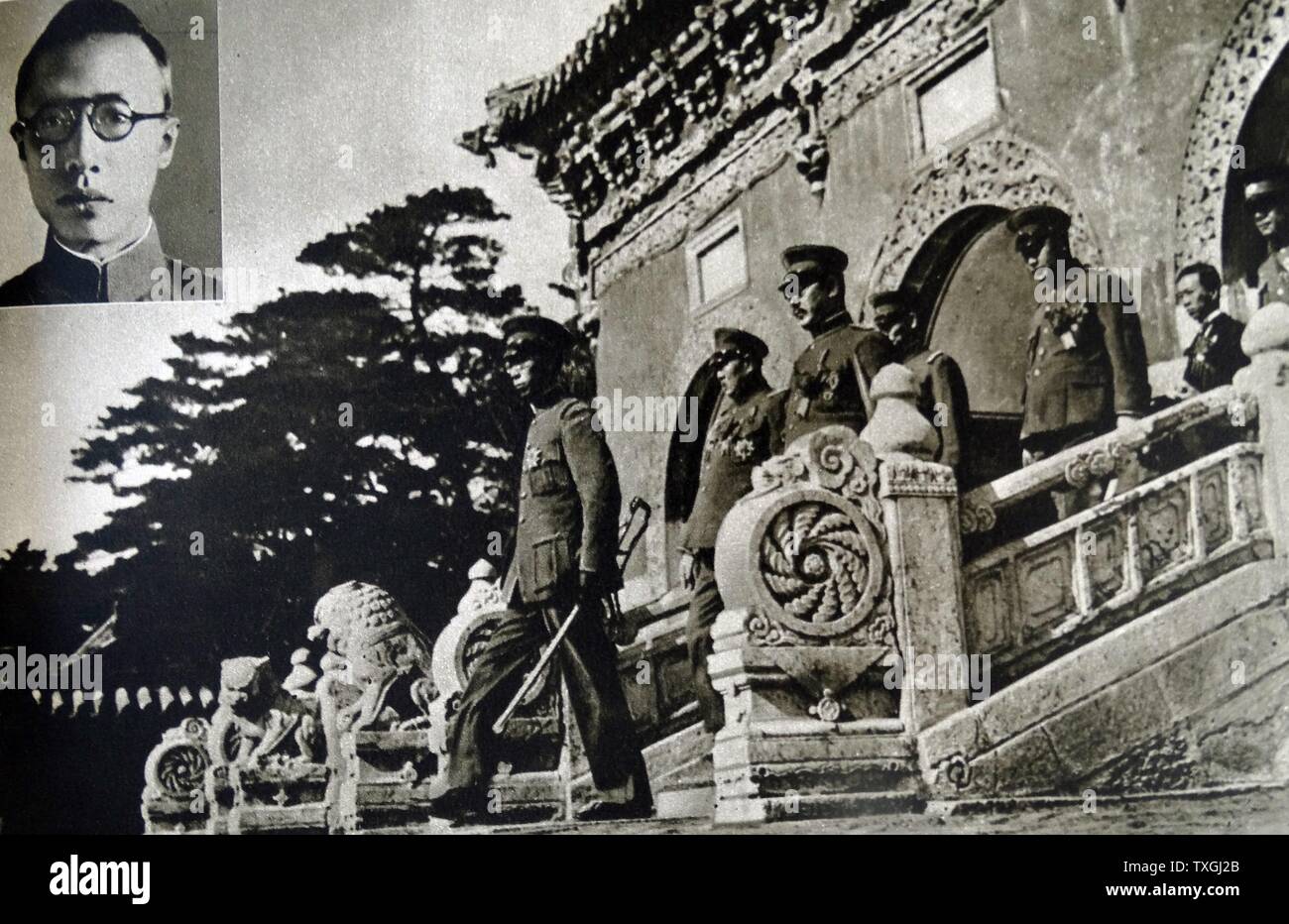 Photographic print of Emperor Puyi's (1906-1967) soldiers in the puppet state of Manchukuo, Mongolia. Dated 20th Century Stock Photohttps://www.alamy.com/image-license-details/?v=1https://www.alamy.com/photographic-print-of-emperor-puyis-1906-1967-soldiers-in-the-puppet-state-of-manchukuo-mongolia-dated-20th-century-image257291619.html
Photographic print of Emperor Puyi's (1906-1967) soldiers in the puppet state of Manchukuo, Mongolia. Dated 20th Century Stock Photohttps://www.alamy.com/image-license-details/?v=1https://www.alamy.com/photographic-print-of-emperor-puyis-1906-1967-soldiers-in-the-puppet-state-of-manchukuo-mongolia-dated-20th-century-image257291619.htmlRMTXGJ2B–Photographic print of Emperor Puyi's (1906-1967) soldiers in the puppet state of Manchukuo, Mongolia. Dated 20th Century
 Manchukuo Emperor... Newest portrait of the Emperor Kangto, who is to visit Japan to congratulate the Imperial family on the 2,600th anniversary of the Japan Empire, in June. May 20, 1940. (Photo by The Domei News Photo Service). Stock Photohttps://www.alamy.com/image-license-details/?v=1https://www.alamy.com/manchukuo-emperor-newest-portrait-of-the-emperor-kangto-who-is-to-visit-japan-to-congratulate-the-imperial-family-on-the-2600th-anniversary-of-the-japan-empire-in-june-may-20-1940-photo-by-the-domei-news-photo-service-image463551639.html
Manchukuo Emperor... Newest portrait of the Emperor Kangto, who is to visit Japan to congratulate the Imperial family on the 2,600th anniversary of the Japan Empire, in June. May 20, 1940. (Photo by The Domei News Photo Service). Stock Photohttps://www.alamy.com/image-license-details/?v=1https://www.alamy.com/manchukuo-emperor-newest-portrait-of-the-emperor-kangto-who-is-to-visit-japan-to-congratulate-the-imperial-family-on-the-2600th-anniversary-of-the-japan-empire-in-june-may-20-1940-photo-by-the-domei-news-photo-service-image463551639.htmlRM2HX4GRK–Manchukuo Emperor... Newest portrait of the Emperor Kangto, who is to visit Japan to congratulate the Imperial family on the 2,600th anniversary of the Japan Empire, in June. May 20, 1940. (Photo by The Domei News Photo Service).
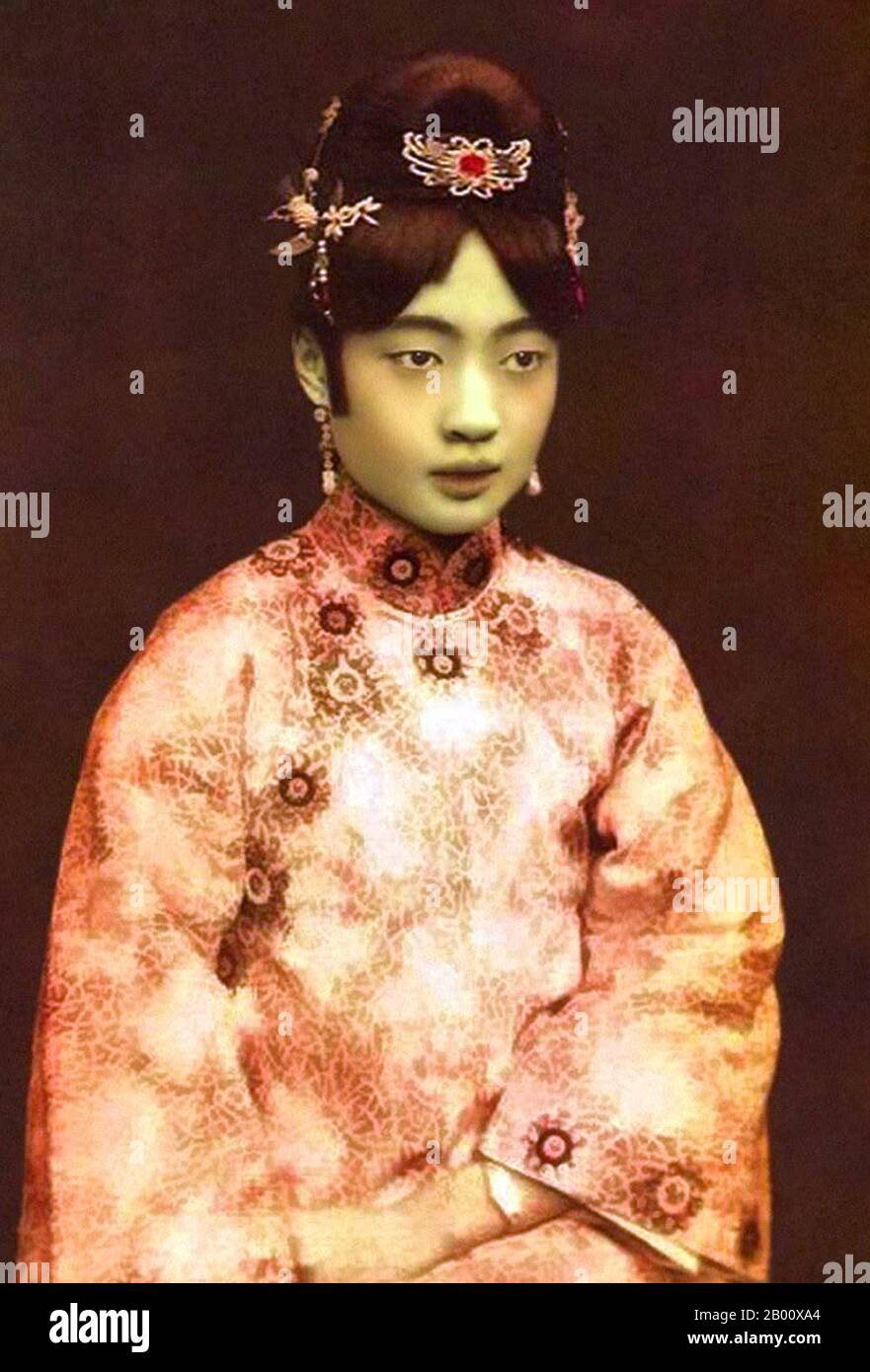 China: Empress Xiao Ke Min, also known as Empress Wan Rong (Wan-Jung) (13 November 1906 – 20 June 1946). Gobulo Wan Rong ('Beautiful Countenance') was the daughter of Rong Yuan, the Minister of Domestic Affairs of the Qing Government and head of one of Manchuria's most prominent, richest families. At the age of 17, Wan Rong was selected from a series of photographs presented to the Xuan Tong Emperor (Puyi). The wedding took place when Puyi reached the age of 16. Wan Rong was the last Empress Consort of the Qing Dynasty in China, and later Empress of Manchukuo (Manchurian Empire). Stock Photohttps://www.alamy.com/image-license-details/?v=1https://www.alamy.com/china-empress-xiao-ke-min-also-known-as-empress-wan-rong-wan-jung-13-november-1906-20-june-1946-gobulo-wan-rong-beautiful-countenance-was-the-daughter-of-rong-yuan-the-minister-of-domestic-affairs-of-the-qing-government-and-head-of-one-of-manchurias-most-prominent-richest-families-at-the-age-of-17-wan-rong-was-selected-from-a-series-of-photographs-presented-to-the-xuan-tong-emperor-puyi-the-wedding-took-place-when-puyi-reached-the-age-of-16-wan-rong-was-the-last-empress-consort-of-the-qing-dynasty-in-china-and-later-empress-of-manchukuo-manchurian-empire-image344228028.html
China: Empress Xiao Ke Min, also known as Empress Wan Rong (Wan-Jung) (13 November 1906 – 20 June 1946). Gobulo Wan Rong ('Beautiful Countenance') was the daughter of Rong Yuan, the Minister of Domestic Affairs of the Qing Government and head of one of Manchuria's most prominent, richest families. At the age of 17, Wan Rong was selected from a series of photographs presented to the Xuan Tong Emperor (Puyi). The wedding took place when Puyi reached the age of 16. Wan Rong was the last Empress Consort of the Qing Dynasty in China, and later Empress of Manchukuo (Manchurian Empire). Stock Photohttps://www.alamy.com/image-license-details/?v=1https://www.alamy.com/china-empress-xiao-ke-min-also-known-as-empress-wan-rong-wan-jung-13-november-1906-20-june-1946-gobulo-wan-rong-beautiful-countenance-was-the-daughter-of-rong-yuan-the-minister-of-domestic-affairs-of-the-qing-government-and-head-of-one-of-manchurias-most-prominent-richest-families-at-the-age-of-17-wan-rong-was-selected-from-a-series-of-photographs-presented-to-the-xuan-tong-emperor-puyi-the-wedding-took-place-when-puyi-reached-the-age-of-16-wan-rong-was-the-last-empress-consort-of-the-qing-dynasty-in-china-and-later-empress-of-manchukuo-manchurian-empire-image344228028.htmlRM2B00XA4–China: Empress Xiao Ke Min, also known as Empress Wan Rong (Wan-Jung) (13 November 1906 – 20 June 1946). Gobulo Wan Rong ('Beautiful Countenance') was the daughter of Rong Yuan, the Minister of Domestic Affairs of the Qing Government and head of one of Manchuria's most prominent, richest families. At the age of 17, Wan Rong was selected from a series of photographs presented to the Xuan Tong Emperor (Puyi). The wedding took place when Puyi reached the age of 16. Wan Rong was the last Empress Consort of the Qing Dynasty in China, and later Empress of Manchukuo (Manchurian Empire).
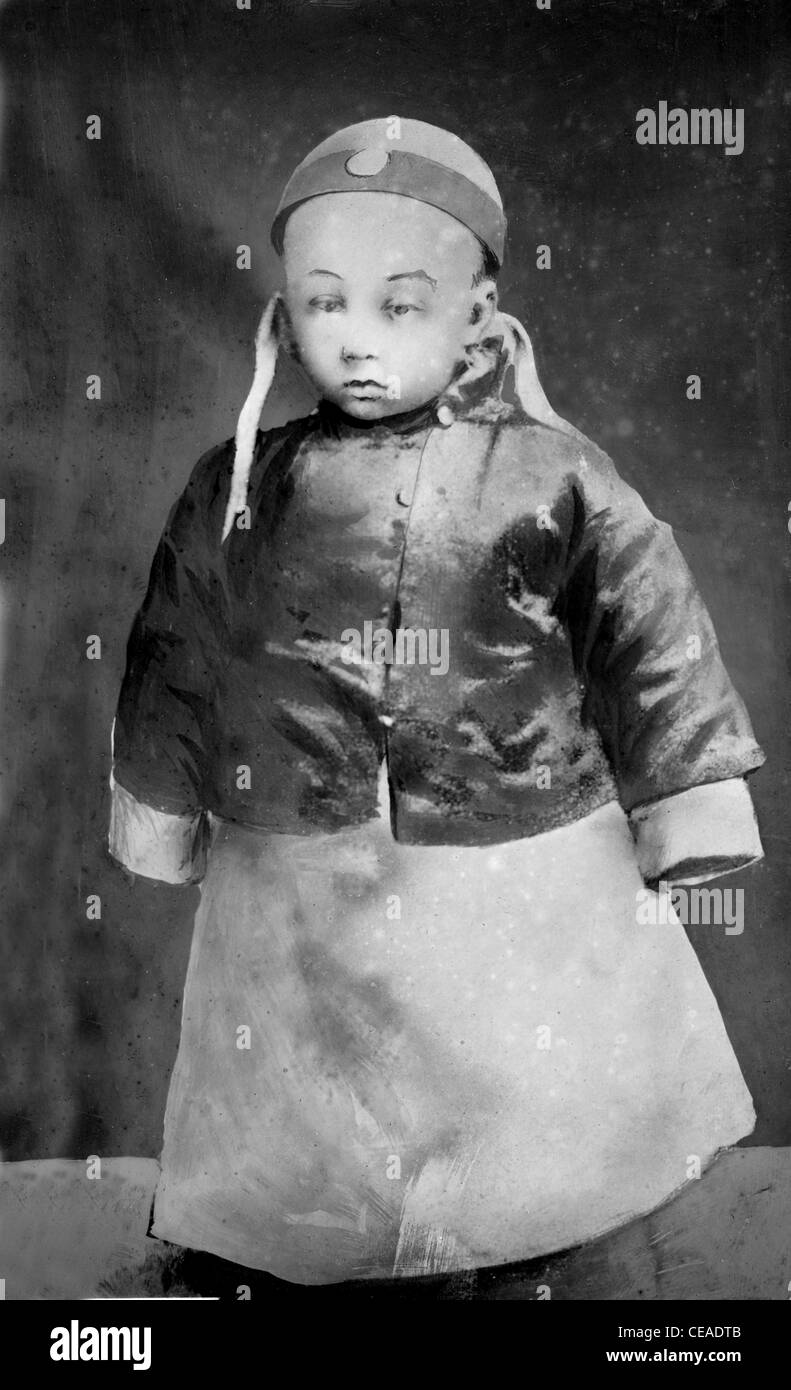 Three year old Emperor of China, Pu Yi. Stock Photohttps://www.alamy.com/image-license-details/?v=1https://www.alamy.com/stock-photo-three-year-old-emperor-of-china-pu-yi-43256315.html
Three year old Emperor of China, Pu Yi. Stock Photohttps://www.alamy.com/image-license-details/?v=1https://www.alamy.com/stock-photo-three-year-old-emperor-of-china-pu-yi-43256315.htmlRMCEADTB–Three year old Emperor of China, Pu Yi.
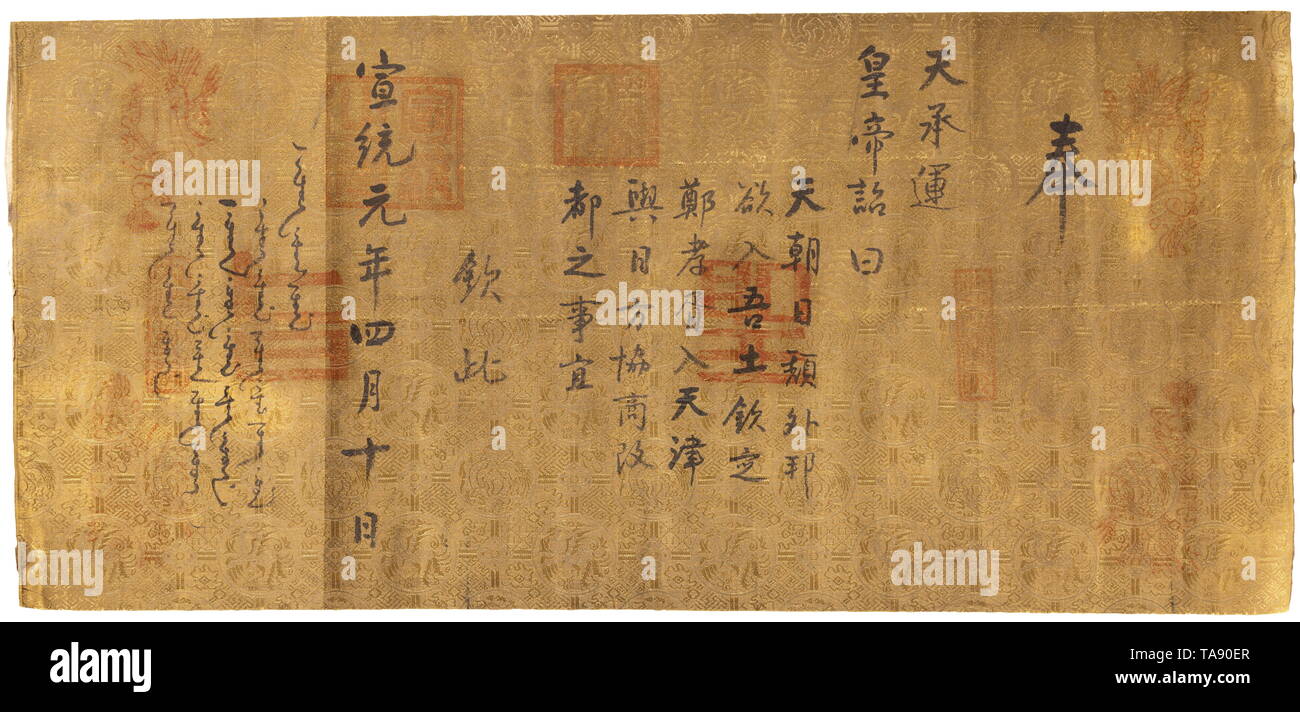 Command issued by the Hsuan-Tung Emperor (1906 - 1967), Qing Dynasty, dated 1909 Command issued by Puyi, the last emperor of the Qing Dynasty, to Zheng Xiaoxu, later the first Prime Minister of Manchukuo, to betake himself to Tianjin for diplomatic talks with Japanese emissaries. Fine calligraphy on yellow brocade, backed with paper. Darkened, signs of age. Dimensions 86 x 39 cm. historic, historical, China, Chinese, 20th century, Additional-Rights-Clearance-Info-Not-Available Stock Photohttps://www.alamy.com/image-license-details/?v=1https://www.alamy.com/command-issued-by-the-hsuan-tung-emperor-1906-1967-qing-dynasty-dated-1909-command-issued-by-puyi-the-last-emperor-of-the-qing-dynasty-to-zheng-xiaoxu-later-the-first-prime-minister-of-manchukuo-to-betake-himself-to-tianjin-for-diplomatic-talks-with-japanese-emissaries-fine-calligraphy-on-yellow-brocade-backed-with-paper-darkened-signs-of-age-dimensions-86-x-39-cm-historic-historical-china-chinese-20th-century-additional-rights-clearance-info-not-available-image247289695.html
Command issued by the Hsuan-Tung Emperor (1906 - 1967), Qing Dynasty, dated 1909 Command issued by Puyi, the last emperor of the Qing Dynasty, to Zheng Xiaoxu, later the first Prime Minister of Manchukuo, to betake himself to Tianjin for diplomatic talks with Japanese emissaries. Fine calligraphy on yellow brocade, backed with paper. Darkened, signs of age. Dimensions 86 x 39 cm. historic, historical, China, Chinese, 20th century, Additional-Rights-Clearance-Info-Not-Available Stock Photohttps://www.alamy.com/image-license-details/?v=1https://www.alamy.com/command-issued-by-the-hsuan-tung-emperor-1906-1967-qing-dynasty-dated-1909-command-issued-by-puyi-the-last-emperor-of-the-qing-dynasty-to-zheng-xiaoxu-later-the-first-prime-minister-of-manchukuo-to-betake-himself-to-tianjin-for-diplomatic-talks-with-japanese-emissaries-fine-calligraphy-on-yellow-brocade-backed-with-paper-darkened-signs-of-age-dimensions-86-x-39-cm-historic-historical-china-chinese-20th-century-additional-rights-clearance-info-not-available-image247289695.htmlRMTA90ER–Command issued by the Hsuan-Tung Emperor (1906 - 1967), Qing Dynasty, dated 1909 Command issued by Puyi, the last emperor of the Qing Dynasty, to Zheng Xiaoxu, later the first Prime Minister of Manchukuo, to betake himself to Tianjin for diplomatic talks with Japanese emissaries. Fine calligraphy on yellow brocade, backed with paper. Darkened, signs of age. Dimensions 86 x 39 cm. historic, historical, China, Chinese, 20th century, Additional-Rights-Clearance-Info-Not-Available
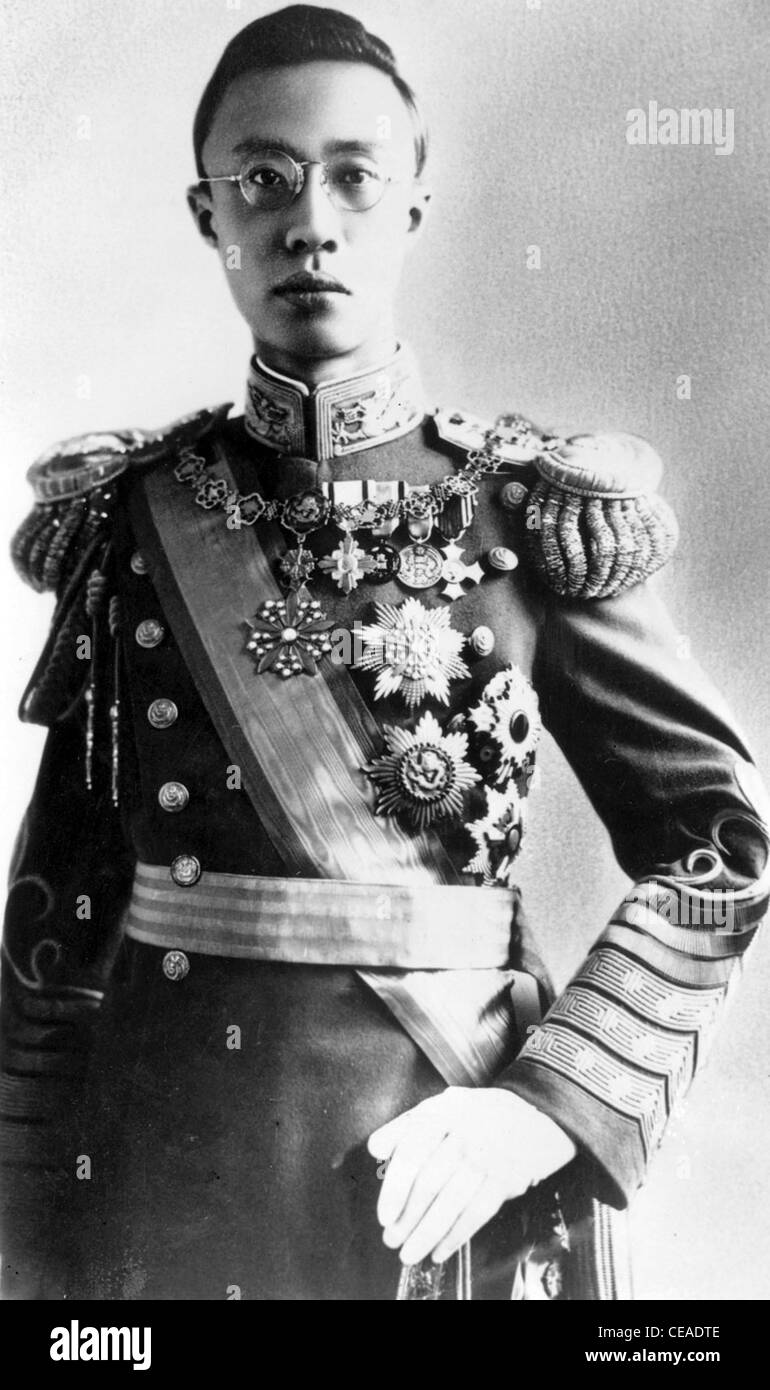 Puyi of the Manchu Aisin Gioro clan, was the last Emperor of China, and the twelfth and final ruler of the Qing Dynasty. Stock Photohttps://www.alamy.com/image-license-details/?v=1https://www.alamy.com/stock-photo-puyi-of-the-manchu-aisin-gioro-clan-was-the-last-emperor-of-china-43256318.html
Puyi of the Manchu Aisin Gioro clan, was the last Emperor of China, and the twelfth and final ruler of the Qing Dynasty. Stock Photohttps://www.alamy.com/image-license-details/?v=1https://www.alamy.com/stock-photo-puyi-of-the-manchu-aisin-gioro-clan-was-the-last-emperor-of-china-43256318.htmlRMCEADTE–Puyi of the Manchu Aisin Gioro clan, was the last Emperor of China, and the twelfth and final ruler of the Qing Dynasty.
 Chinese Prince and Princess leave London for Manchukuo . The Princess Jun Ho and her husband Prince Cheng Tui - ai left Euston station , London , on the Duchess of Richmond boat train for Manchukuo to join the princess ' s brother , Pu Yi , Emperor of Manchukuo . With them was their baby daughter . They have been in England for two yearrs as Mr and Mrs Cheng . Photo shows , the prince and princess and their baby daughter photographed at Euston station before leaving on the boat train . 23 March 1934 Stock Photohttps://www.alamy.com/image-license-details/?v=1https://www.alamy.com/chinese-prince-and-princess-leave-london-for-manchukuo-the-princess-jun-ho-and-her-husband-prince-cheng-tui-ai-left-euston-station-london-on-the-duchess-of-richmond-boat-train-for-manchukuo-to-join-the-princess-s-brother-pu-yi-emperor-of-manchukuo-with-them-was-their-baby-daughter-they-have-been-in-england-for-two-yearrs-as-mr-and-mrs-cheng-photo-shows-the-prince-and-princess-and-their-baby-daughter-photographed-at-euston-station-before-leaving-on-the-boat-train-23-march-1934-image359645526.html
Chinese Prince and Princess leave London for Manchukuo . The Princess Jun Ho and her husband Prince Cheng Tui - ai left Euston station , London , on the Duchess of Richmond boat train for Manchukuo to join the princess ' s brother , Pu Yi , Emperor of Manchukuo . With them was their baby daughter . They have been in England for two yearrs as Mr and Mrs Cheng . Photo shows , the prince and princess and their baby daughter photographed at Euston station before leaving on the boat train . 23 March 1934 Stock Photohttps://www.alamy.com/image-license-details/?v=1https://www.alamy.com/chinese-prince-and-princess-leave-london-for-manchukuo-the-princess-jun-ho-and-her-husband-prince-cheng-tui-ai-left-euston-station-london-on-the-duchess-of-richmond-boat-train-for-manchukuo-to-join-the-princess-s-brother-pu-yi-emperor-of-manchukuo-with-them-was-their-baby-daughter-they-have-been-in-england-for-two-yearrs-as-mr-and-mrs-cheng-photo-shows-the-prince-and-princess-and-their-baby-daughter-photographed-at-euston-station-before-leaving-on-the-boat-train-23-march-1934-image359645526.htmlRM2BW37F2–Chinese Prince and Princess leave London for Manchukuo . The Princess Jun Ho and her husband Prince Cheng Tui - ai left Euston station , London , on the Duchess of Richmond boat train for Manchukuo to join the princess ' s brother , Pu Yi , Emperor of Manchukuo . With them was their baby daughter . They have been in England for two yearrs as Mr and Mrs Cheng . Photo shows , the prince and princess and their baby daughter photographed at Euston station before leaving on the boat train . 23 March 1934
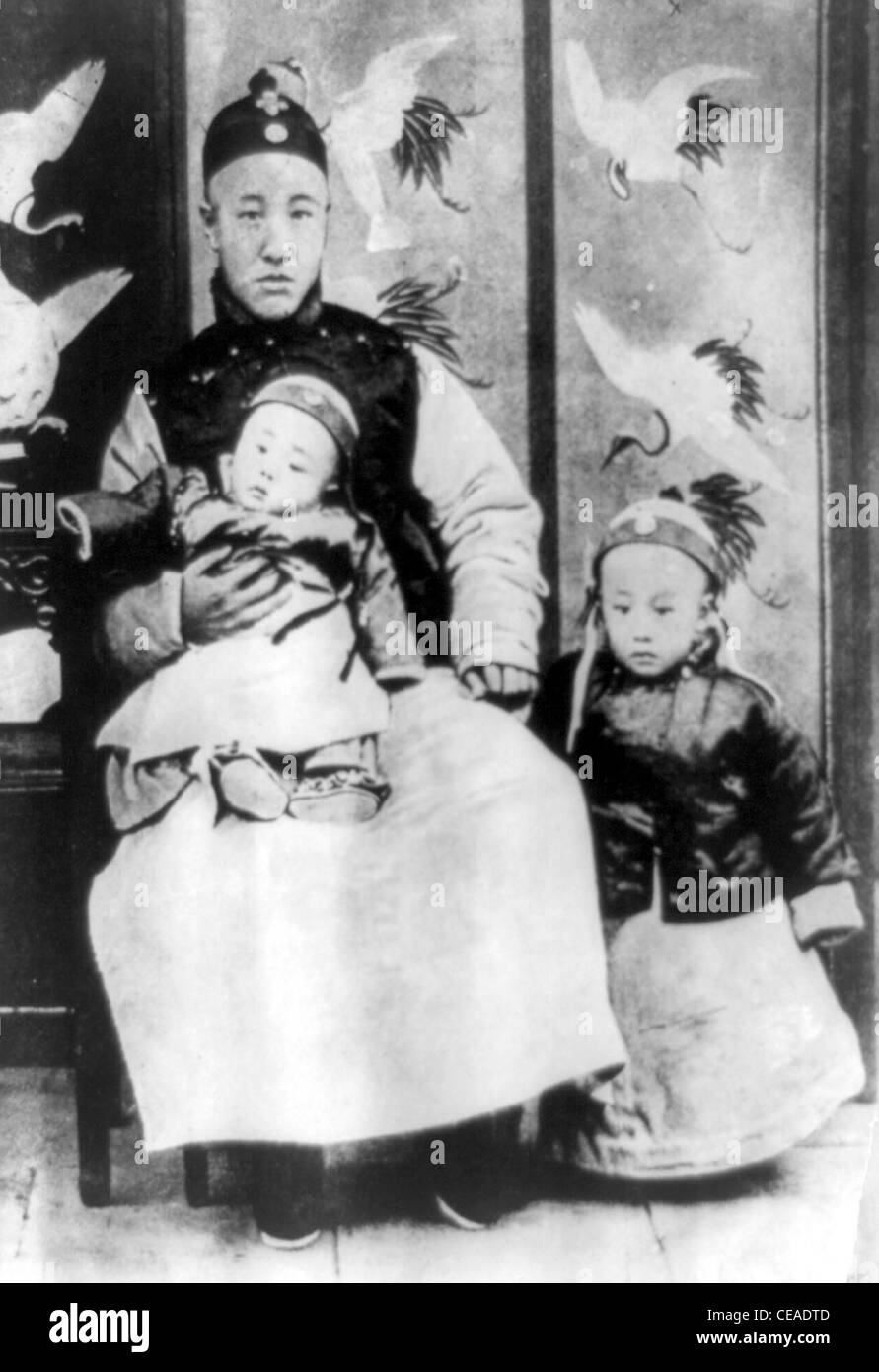 Three year old Emperor of China, Puyi, right, with his father, Prince Chun, the Regent, holding a younger brother. Stock Photohttps://www.alamy.com/image-license-details/?v=1https://www.alamy.com/stock-photo-three-year-old-emperor-of-china-puyi-right-with-his-father-prince-43256317.html
Three year old Emperor of China, Puyi, right, with his father, Prince Chun, the Regent, holding a younger brother. Stock Photohttps://www.alamy.com/image-license-details/?v=1https://www.alamy.com/stock-photo-three-year-old-emperor-of-china-puyi-right-with-his-father-prince-43256317.htmlRMCEADTD–Three year old Emperor of China, Puyi, right, with his father, Prince Chun, the Regent, holding a younger brother.
 Puyi, 7.2.1906 - 17.10.1967, last Emperor of China 1908 - 1912, half length, circa 1930s, ADDITIONAL-RIGHTS-CLEARANCE-INFO-NOT-AVAILABLE Stock Photohttps://www.alamy.com/image-license-details/?v=1https://www.alamy.com/puyi-721906-17101967-last-emperor-of-china-1908-1912-half-length-circa-1930s-additional-rights-clearance-info-not-available-image426397839.html
Puyi, 7.2.1906 - 17.10.1967, last Emperor of China 1908 - 1912, half length, circa 1930s, ADDITIONAL-RIGHTS-CLEARANCE-INFO-NOT-AVAILABLE Stock Photohttps://www.alamy.com/image-license-details/?v=1https://www.alamy.com/puyi-721906-17101967-last-emperor-of-china-1908-1912-half-length-circa-1930s-additional-rights-clearance-info-not-available-image426397839.htmlRM2FNM2P7–Puyi, 7.2.1906 - 17.10.1967, last Emperor of China 1908 - 1912, half length, circa 1930s, ADDITIONAL-RIGHTS-CLEARANCE-INFO-NOT-AVAILABLE
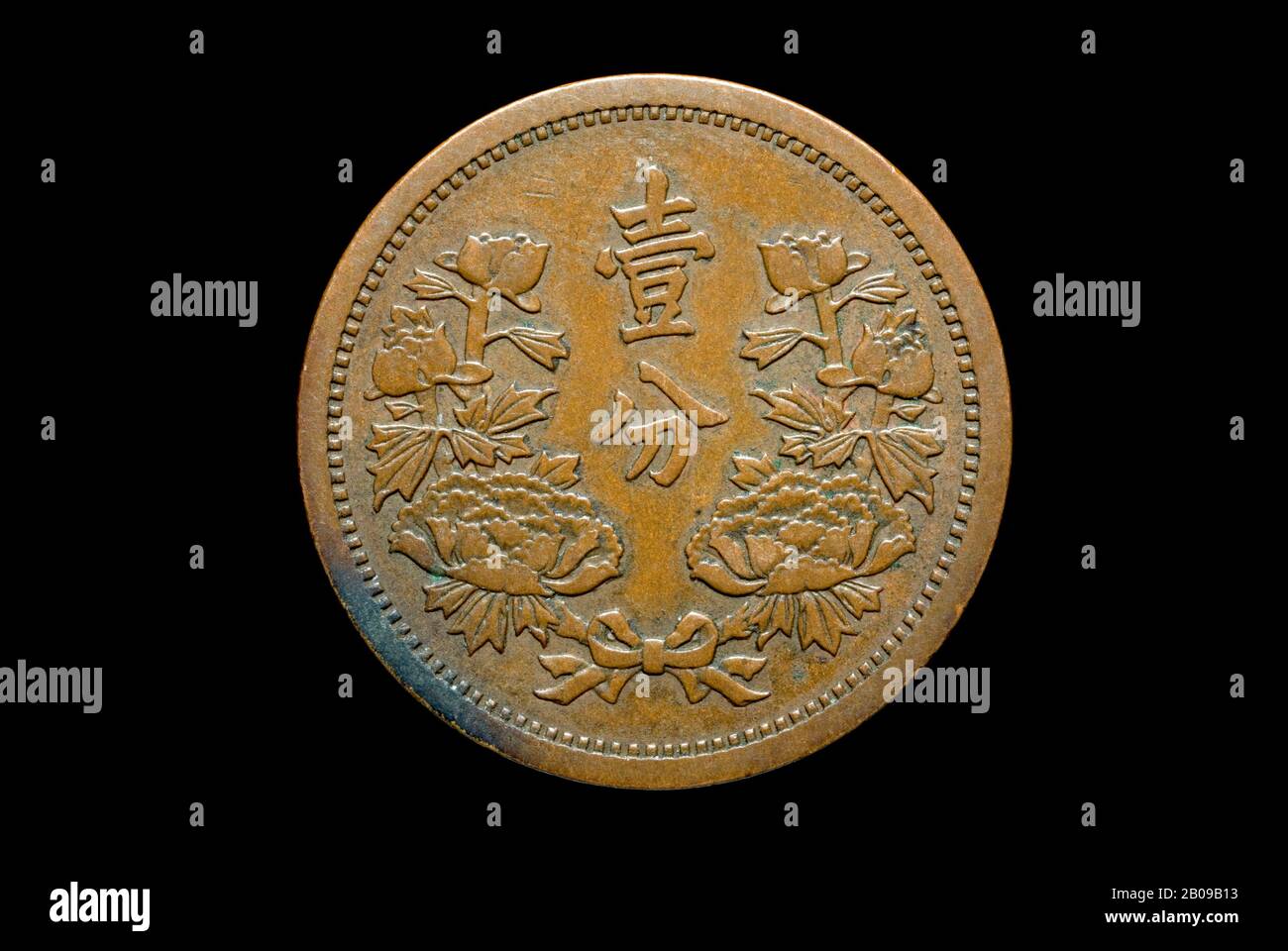 Manchukuo 1 Fen Coin of 1936 Stock Photohttps://www.alamy.com/image-license-details/?v=1https://www.alamy.com/manchukuo-1-fen-coin-of-1936-image344413583.html
Manchukuo 1 Fen Coin of 1936 Stock Photohttps://www.alamy.com/image-license-details/?v=1https://www.alamy.com/manchukuo-1-fen-coin-of-1936-image344413583.htmlRM2B09B13–Manchukuo 1 Fen Coin of 1936
 Puyi, 7.2.1906 - 17.10.1967, last Emperor of China 1908 - 1912, with his brother and his father Ch un, ADDITIONAL-RIGHTS-CLEARANCE-INFO-NOT-AVAILABLE Stock Photohttps://www.alamy.com/image-license-details/?v=1https://www.alamy.com/puyi-721906-17101967-last-emperor-of-china-1908-1912-with-his-brother-and-his-father-ch-un-additional-rights-clearance-info-not-available-image426054885.html
Puyi, 7.2.1906 - 17.10.1967, last Emperor of China 1908 - 1912, with his brother and his father Ch un, ADDITIONAL-RIGHTS-CLEARANCE-INFO-NOT-AVAILABLE Stock Photohttps://www.alamy.com/image-license-details/?v=1https://www.alamy.com/puyi-721906-17101967-last-emperor-of-china-1908-1912-with-his-brother-and-his-father-ch-un-additional-rights-clearance-info-not-available-image426054885.htmlRM2FN4D9W–Puyi, 7.2.1906 - 17.10.1967, last Emperor of China 1908 - 1912, with his brother and his father Ch un, ADDITIONAL-RIGHTS-CLEARANCE-INFO-NOT-AVAILABLE
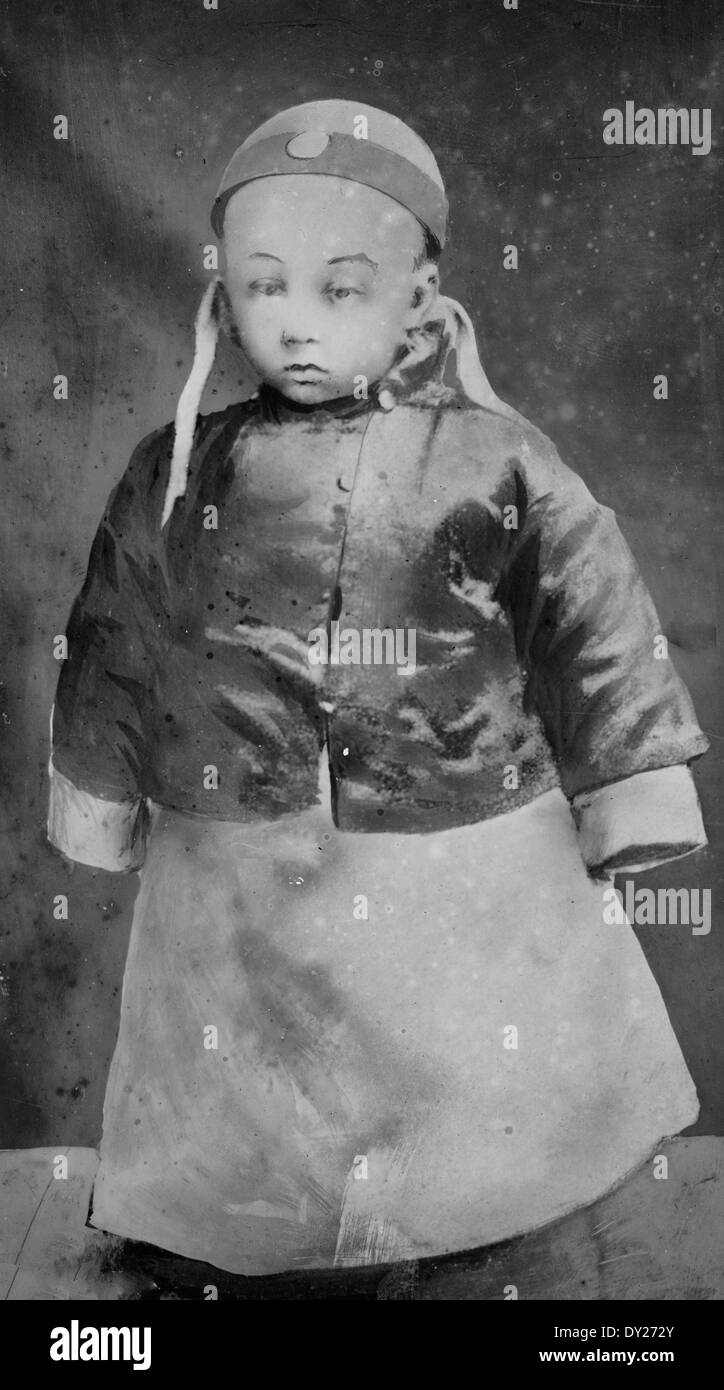 Chinese child Emperor PU-YI, circa 1909 Stock Photohttps://www.alamy.com/image-license-details/?v=1https://www.alamy.com/chinese-child-emperor-pu-yi-circa-1909-image68276291.html
Chinese child Emperor PU-YI, circa 1909 Stock Photohttps://www.alamy.com/image-license-details/?v=1https://www.alamy.com/chinese-child-emperor-pu-yi-circa-1909-image68276291.htmlRMDY272Y–Chinese child Emperor PU-YI, circa 1909
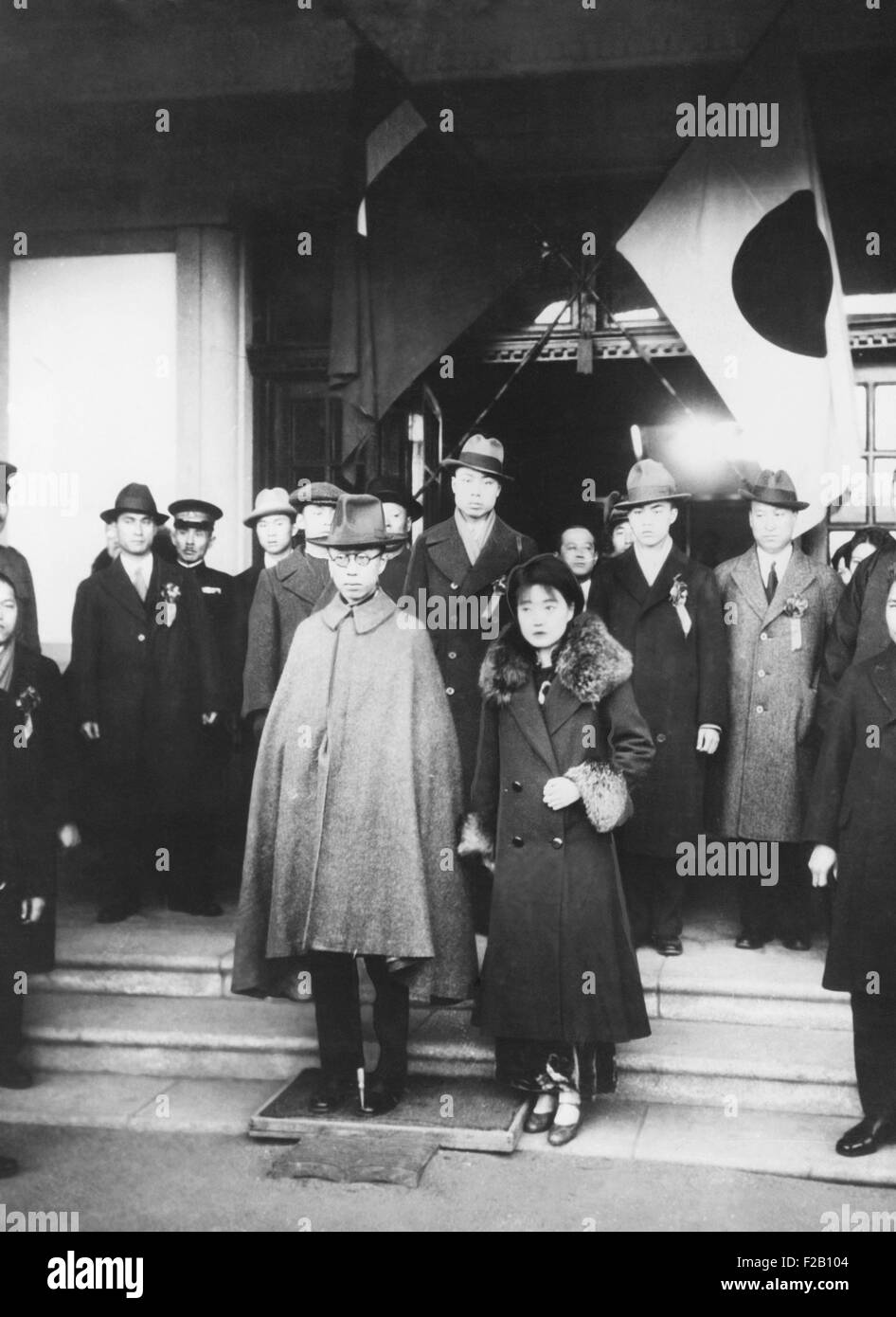 Emperor of Manchukuo, Henry Pu Yi, with his Japanese wife, Jung Vuan Pu-Yi, in Manchukuo. March 1932. The former Xuantong Emperor, headed a Manchurian Government controlled by the Japanese. (CSU 2015 9 1008) Stock Photohttps://www.alamy.com/image-license-details/?v=1https://www.alamy.com/stock-photo-emperor-of-manchukuo-henry-pu-yi-with-his-japanese-wife-jung-vuan-87523412.html
Emperor of Manchukuo, Henry Pu Yi, with his Japanese wife, Jung Vuan Pu-Yi, in Manchukuo. March 1932. The former Xuantong Emperor, headed a Manchurian Government controlled by the Japanese. (CSU 2015 9 1008) Stock Photohttps://www.alamy.com/image-license-details/?v=1https://www.alamy.com/stock-photo-emperor-of-manchukuo-henry-pu-yi-with-his-japanese-wife-jung-vuan-87523412.htmlRMF2B104–Emperor of Manchukuo, Henry Pu Yi, with his Japanese wife, Jung Vuan Pu-Yi, in Manchukuo. March 1932. The former Xuantong Emperor, headed a Manchurian Government controlled by the Japanese. (CSU 2015 9 1008)
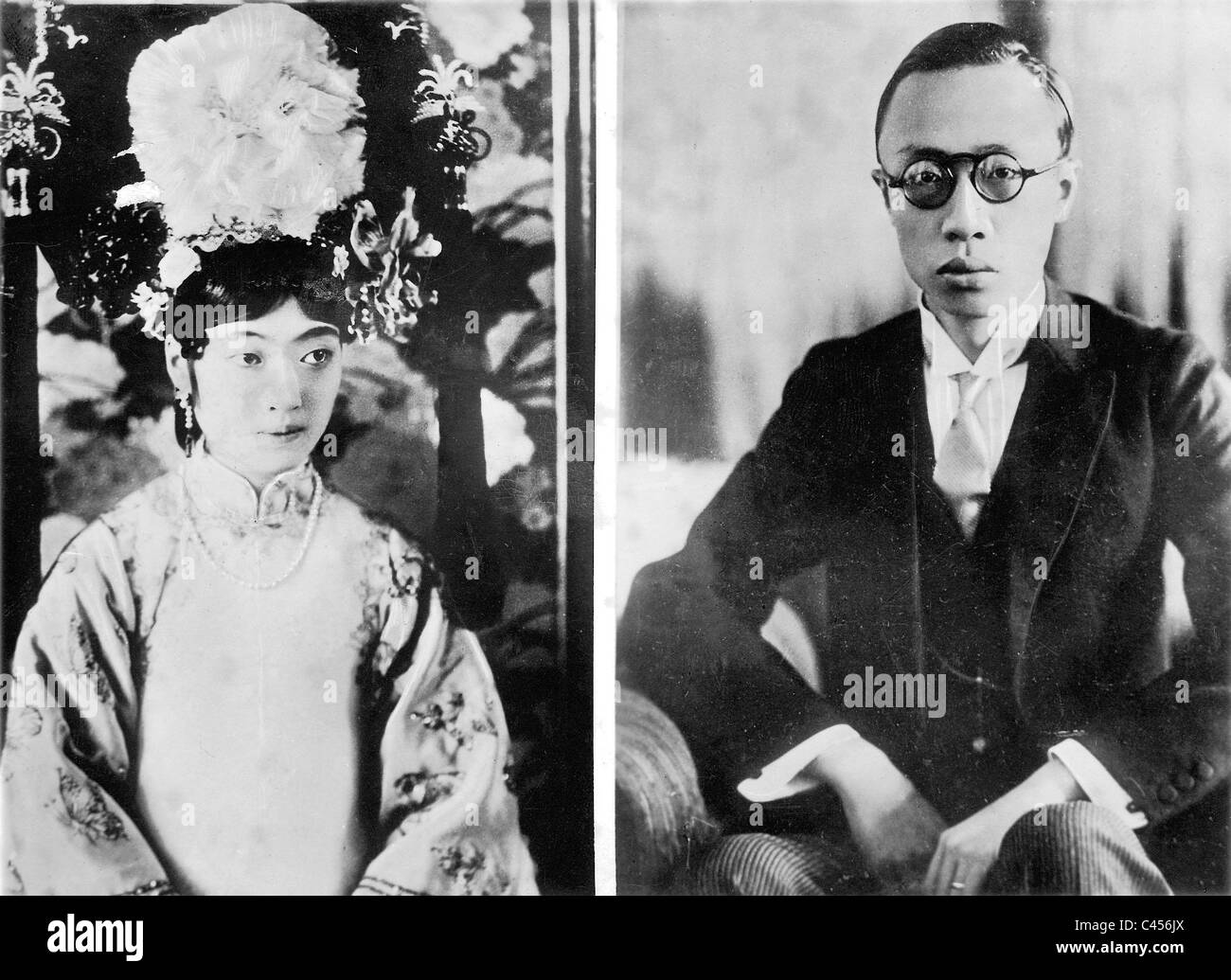 The Emperor of Manchukuo, Aisin-Gioro Puyi, and his wife in 1934 Stock Photohttps://www.alamy.com/image-license-details/?v=1https://www.alamy.com/stock-photo-the-emperor-of-manchukuo-aisin-gioro-puyi-and-his-wife-in-1934-36994354.html
The Emperor of Manchukuo, Aisin-Gioro Puyi, and his wife in 1934 Stock Photohttps://www.alamy.com/image-license-details/?v=1https://www.alamy.com/stock-photo-the-emperor-of-manchukuo-aisin-gioro-puyi-and-his-wife-in-1934-36994354.htmlRMC456JX–The Emperor of Manchukuo, Aisin-Gioro Puyi, and his wife in 1934
 Puyi, 7.2.1906 - 17.10.1967, last Emperor of China 1908 - 1912, half length, his wife, circa 1930s, ADDITIONAL-RIGHTS-CLEARANCE-INFO-NOT-AVAILABLE Stock Photohttps://www.alamy.com/image-license-details/?v=1https://www.alamy.com/puyi-721906-17101967-last-emperor-of-china-1908-1912-half-length-his-wife-circa-1930s-additional-rights-clearance-info-not-available-image426397838.html
Puyi, 7.2.1906 - 17.10.1967, last Emperor of China 1908 - 1912, half length, his wife, circa 1930s, ADDITIONAL-RIGHTS-CLEARANCE-INFO-NOT-AVAILABLE Stock Photohttps://www.alamy.com/image-license-details/?v=1https://www.alamy.com/puyi-721906-17101967-last-emperor-of-china-1908-1912-half-length-his-wife-circa-1930s-additional-rights-clearance-info-not-available-image426397838.htmlRM2FNM2P6–Puyi, 7.2.1906 - 17.10.1967, last Emperor of China 1908 - 1912, half length, his wife, circa 1930s, ADDITIONAL-RIGHTS-CLEARANCE-INFO-NOT-AVAILABLE
 Xuantong Emperor, 3-year old Puyi, in 1909. In Feb. 1912, during the Xinhai Revolution, he was forced to force to abdicate. As an adult, he became the Kangde Emperor, Japanese puppet of Manchukuo, during the Second Sino-Japanese War and World War 2. His life was the subject of the 1987 film, THE LAST EMPEROR, by Bernardo Bertolucci (BSLOC 2017 20 6) Stock Photohttps://www.alamy.com/image-license-details/?v=1https://www.alamy.com/stock-photo-xuantong-emperor-3-year-old-puyi-in-1909-in-feb-1912-during-the-xinhai-170547128.html
Xuantong Emperor, 3-year old Puyi, in 1909. In Feb. 1912, during the Xinhai Revolution, he was forced to force to abdicate. As an adult, he became the Kangde Emperor, Japanese puppet of Manchukuo, during the Second Sino-Japanese War and World War 2. His life was the subject of the 1987 film, THE LAST EMPEROR, by Bernardo Bertolucci (BSLOC 2017 20 6) Stock Photohttps://www.alamy.com/image-license-details/?v=1https://www.alamy.com/stock-photo-xuantong-emperor-3-year-old-puyi-in-1909-in-feb-1912-during-the-xinhai-170547128.htmlRMKWD2GT–Xuantong Emperor, 3-year old Puyi, in 1909. In Feb. 1912, during the Xinhai Revolution, he was forced to force to abdicate. As an adult, he became the Kangde Emperor, Japanese puppet of Manchukuo, during the Second Sino-Japanese War and World War 2. His life was the subject of the 1987 film, THE LAST EMPEROR, by Bernardo Bertolucci (BSLOC 2017 20 6)
 Puyi, 7.2.1906 - 17.10.1967, last Emperor of China 1908 - 1912, prison garden, Bejing, 1959, Stock Photohttps://www.alamy.com/image-license-details/?v=1https://www.alamy.com/stock-photo-puyi-721906-17101967-last-emperor-of-china-1908-1912-prison-garden-28128144.html
Puyi, 7.2.1906 - 17.10.1967, last Emperor of China 1908 - 1912, prison garden, Bejing, 1959, Stock Photohttps://www.alamy.com/image-license-details/?v=1https://www.alamy.com/stock-photo-puyi-721906-17101967-last-emperor-of-china-1908-1912-prison-garden-28128144.htmlRMBHN9MG–Puyi, 7.2.1906 - 17.10.1967, last Emperor of China 1908 - 1912, prison garden, Bejing, 1959,
 3D Flag of Emperor of Manchukuo. 3D Illustration. Stock Photohttps://www.alamy.com/image-license-details/?v=1https://www.alamy.com/3d-flag-of-emperor-of-manchukuo-3d-illustration-image449812033.html
3D Flag of Emperor of Manchukuo. 3D Illustration. Stock Photohttps://www.alamy.com/image-license-details/?v=1https://www.alamy.com/3d-flag-of-emperor-of-manchukuo-3d-illustration-image449812033.htmlRF2H3PKRD–3D Flag of Emperor of Manchukuo. 3D Illustration.
 Puyi, 7.2.1906 - 17.10.1967, last Emperor of China 1908 - 1912, half length, child image, drawing, 1912, Stock Photohttps://www.alamy.com/image-license-details/?v=1https://www.alamy.com/stock-photo-puyi-721906-17101967-last-emperor-of-china-1908-1912-half-length-child-24441997.html
Puyi, 7.2.1906 - 17.10.1967, last Emperor of China 1908 - 1912, half length, child image, drawing, 1912, Stock Photohttps://www.alamy.com/image-license-details/?v=1https://www.alamy.com/stock-photo-puyi-721906-17101967-last-emperor-of-china-1908-1912-half-length-child-24441997.htmlRMBBNC0D–Puyi, 7.2.1906 - 17.10.1967, last Emperor of China 1908 - 1912, half length, child image, drawing, 1912,
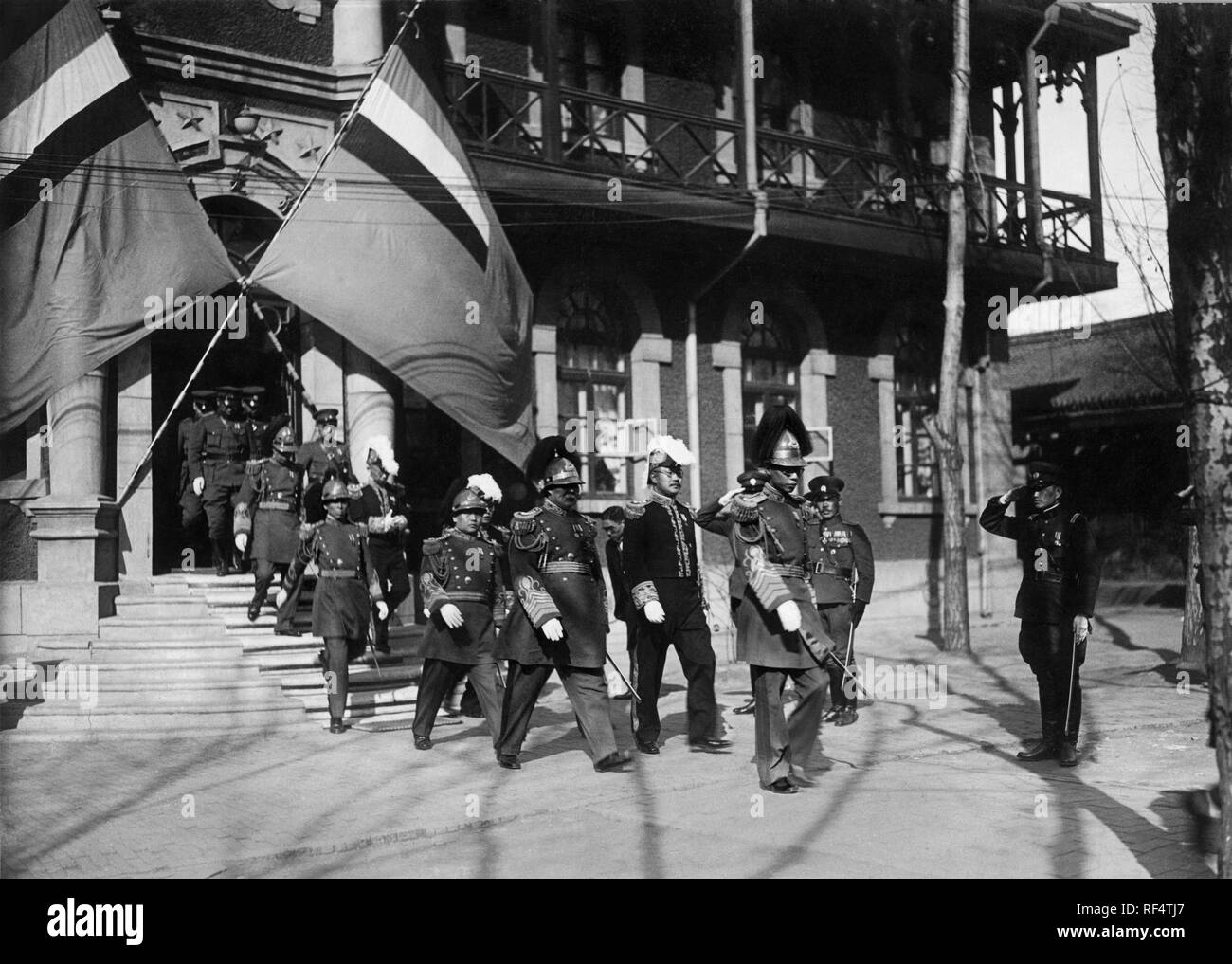 the emperor kang-de leaves the imperial residence, hsinking, manciuria, asia 1930-40 Stock Photohttps://www.alamy.com/image-license-details/?v=1https://www.alamy.com/the-emperor-kang-de-leaves-the-imperial-residence-hsinking-manciuria-asia-1930-40-image233061759.html
the emperor kang-de leaves the imperial residence, hsinking, manciuria, asia 1930-40 Stock Photohttps://www.alamy.com/image-license-details/?v=1https://www.alamy.com/the-emperor-kang-de-leaves-the-imperial-residence-hsinking-manciuria-asia-1930-40-image233061759.htmlRMRF4TJ7–the emperor kang-de leaves the imperial residence, hsinking, manciuria, asia 1930-40
 12/31/1933. Recent portrait of Emperor Kangade of Manchukuo in full dress uniform. Credit: Album / Archivo ABC Stock Photohttps://www.alamy.com/image-license-details/?v=1https://www.alamy.com/12311933-recent-portrait-of-emperor-kangade-of-manchukuo-in-full-dress-uniform-credit-album-archivo-abc-image575686809.html
12/31/1933. Recent portrait of Emperor Kangade of Manchukuo in full dress uniform. Credit: Album / Archivo ABC Stock Photohttps://www.alamy.com/image-license-details/?v=1https://www.alamy.com/12311933-recent-portrait-of-emperor-kangade-of-manchukuo-in-full-dress-uniform-credit-album-archivo-abc-image575686809.htmlRM2TCGPB5–12/31/1933. Recent portrait of Emperor Kangade of Manchukuo in full dress uniform. Credit: Album / Archivo ABC
 China: Empress Xiao Ke Min, also known as Empress Wan Rong (Wan-Jung) (13 November 1906 – 20 June 1946). Gobulo Wan Rong ('Beautiful Countenance') was the daughter of Rong Yuan, the Minister of Domestic Affairs of the Qing Government and head of one of Manchuria's most prominent, richest families. At the age of 17, Wan Rong was selected from a series of photographs presented to the Xuan Tong Emperor (Puyi). The wedding took place when Puyi reached the age of 16. Wan Rong was the last Empress Consort of the Qing Dynasty in China, and later Empress of Manchukuo (Manchurian Empire). Stock Photohttps://www.alamy.com/image-license-details/?v=1https://www.alamy.com/china-empress-xiao-ke-min-also-known-as-empress-wan-rong-wan-jung-13-november-1906-20-june-1946-gobulo-wan-rong-beautiful-countenance-was-the-daughter-of-rong-yuan-the-minister-of-domestic-affairs-of-the-qing-government-and-head-of-one-of-manchurias-most-prominent-richest-families-at-the-age-of-17-wan-rong-was-selected-from-a-series-of-photographs-presented-to-the-xuan-tong-emperor-puyi-the-wedding-took-place-when-puyi-reached-the-age-of-16-wan-rong-was-the-last-empress-consort-of-the-qing-dynasty-in-china-and-later-empress-of-manchukuo-manchurian-empire-image344228029.html
China: Empress Xiao Ke Min, also known as Empress Wan Rong (Wan-Jung) (13 November 1906 – 20 June 1946). Gobulo Wan Rong ('Beautiful Countenance') was the daughter of Rong Yuan, the Minister of Domestic Affairs of the Qing Government and head of one of Manchuria's most prominent, richest families. At the age of 17, Wan Rong was selected from a series of photographs presented to the Xuan Tong Emperor (Puyi). The wedding took place when Puyi reached the age of 16. Wan Rong was the last Empress Consort of the Qing Dynasty in China, and later Empress of Manchukuo (Manchurian Empire). Stock Photohttps://www.alamy.com/image-license-details/?v=1https://www.alamy.com/china-empress-xiao-ke-min-also-known-as-empress-wan-rong-wan-jung-13-november-1906-20-june-1946-gobulo-wan-rong-beautiful-countenance-was-the-daughter-of-rong-yuan-the-minister-of-domestic-affairs-of-the-qing-government-and-head-of-one-of-manchurias-most-prominent-richest-families-at-the-age-of-17-wan-rong-was-selected-from-a-series-of-photographs-presented-to-the-xuan-tong-emperor-puyi-the-wedding-took-place-when-puyi-reached-the-age-of-16-wan-rong-was-the-last-empress-consort-of-the-qing-dynasty-in-china-and-later-empress-of-manchukuo-manchurian-empire-image344228029.htmlRM2B00XA5–China: Empress Xiao Ke Min, also known as Empress Wan Rong (Wan-Jung) (13 November 1906 – 20 June 1946). Gobulo Wan Rong ('Beautiful Countenance') was the daughter of Rong Yuan, the Minister of Domestic Affairs of the Qing Government and head of one of Manchuria's most prominent, richest families. At the age of 17, Wan Rong was selected from a series of photographs presented to the Xuan Tong Emperor (Puyi). The wedding took place when Puyi reached the age of 16. Wan Rong was the last Empress Consort of the Qing Dynasty in China, and later Empress of Manchukuo (Manchurian Empire).
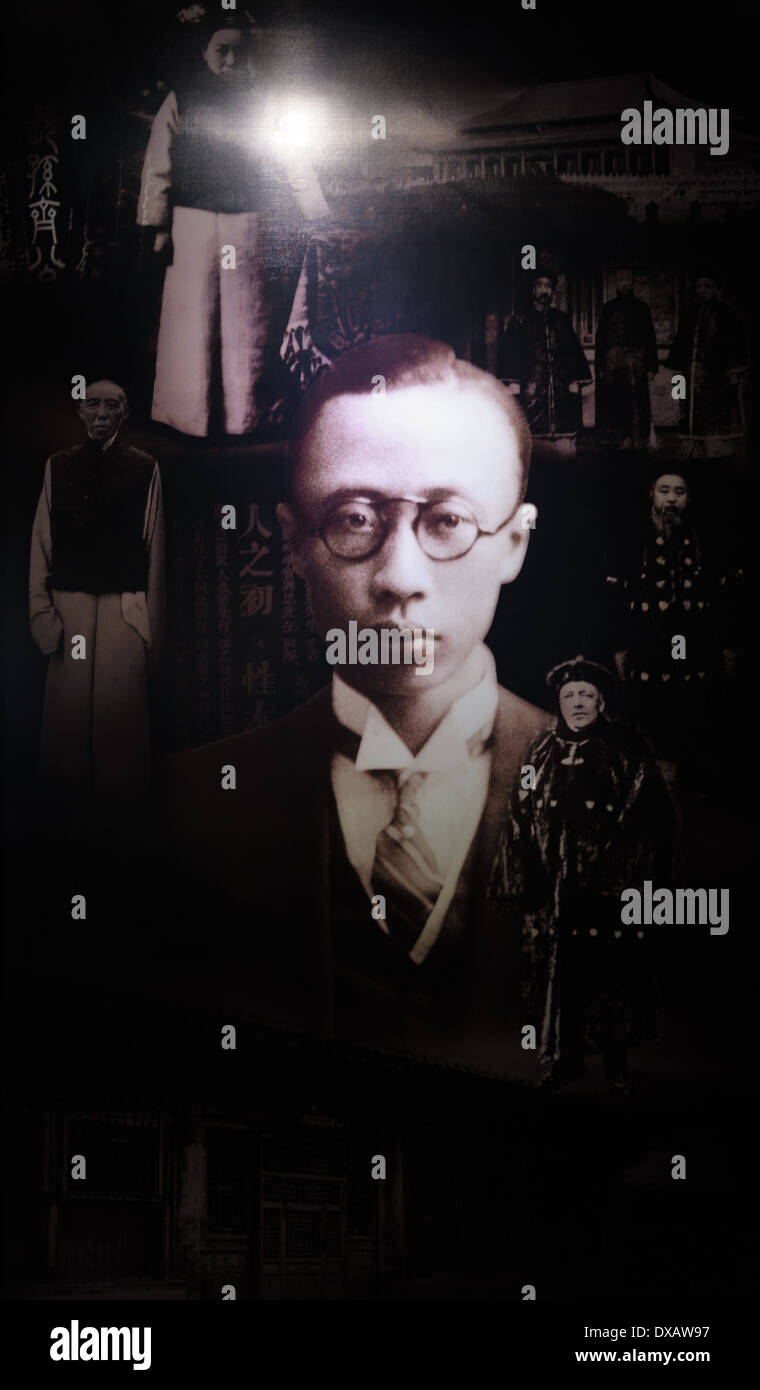 Photo of the Last Qing Emperor Puyi in his twenties. Puppet Emperor's Palace & Exhibition Hall . Changchun.Jilin Province, China Stock Photohttps://www.alamy.com/image-license-details/?v=1https://www.alamy.com/photo-of-the-last-qing-emperor-puyi-in-his-twenties-puppet-emperors-image67851539.html
Photo of the Last Qing Emperor Puyi in his twenties. Puppet Emperor's Palace & Exhibition Hall . Changchun.Jilin Province, China Stock Photohttps://www.alamy.com/image-license-details/?v=1https://www.alamy.com/photo-of-the-last-qing-emperor-puyi-in-his-twenties-puppet-emperors-image67851539.htmlRMDXAW97–Photo of the Last Qing Emperor Puyi in his twenties. Puppet Emperor's Palace & Exhibition Hall . Changchun.Jilin Province, China
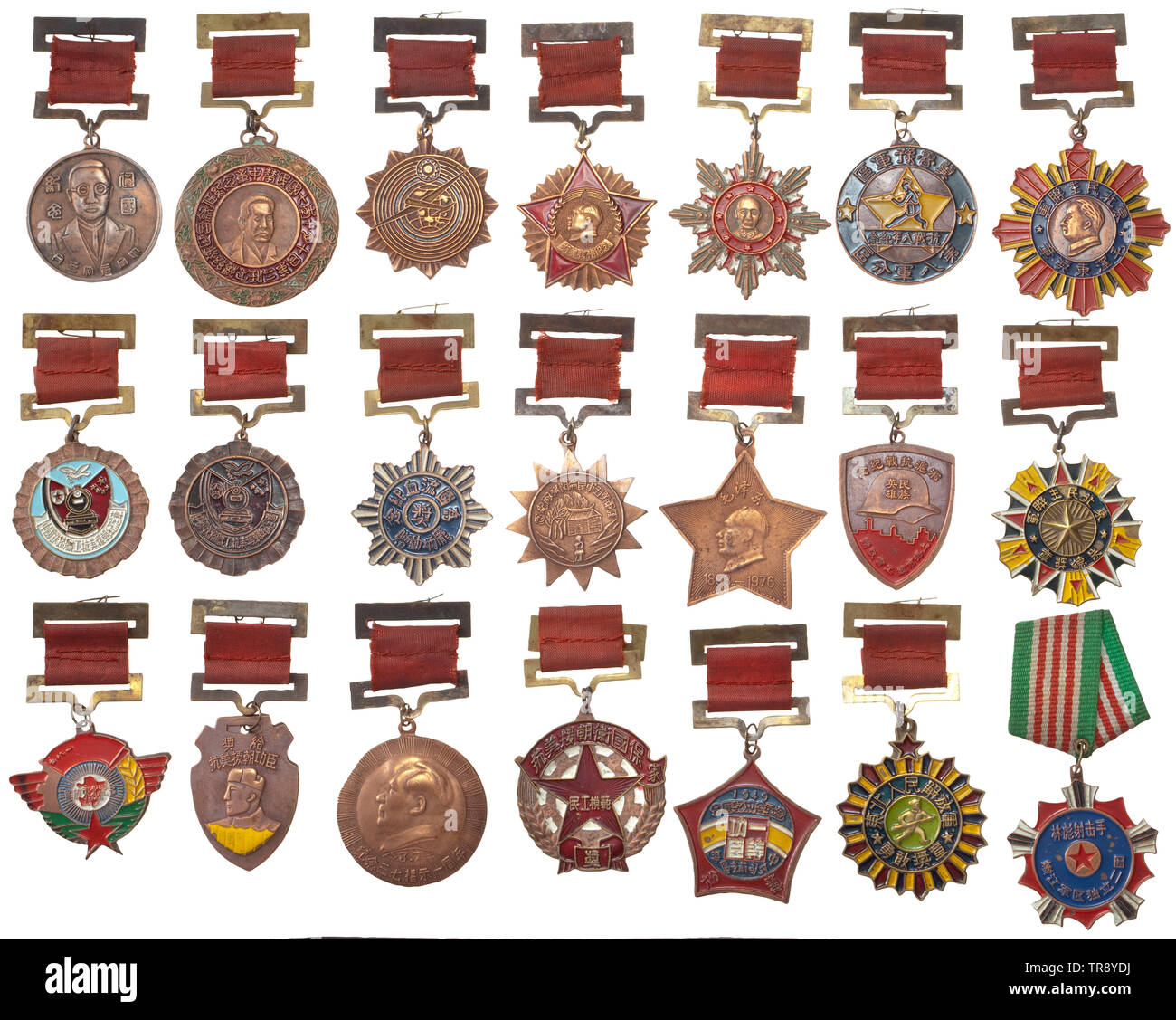 A collection of Chinese decorations/commemorative medals from the period of the Republic and the People's Republic 23 medals predominately made of copper, on single clasps for wear. Included are medals of the second president Xu, Shichang 1918 and Chiang Kai-shek 1937, as well as of Mao Zedong. Also, medals for the liberation of Northern China 1950, Tibet 1952, the Battle of Shanghai 1936 and Pu Yi as emperor of the puppet state of Manchukuo. historic, historical, 20th century, Additional-Rights-Clearance-Info-Not-Available Stock Photohttps://www.alamy.com/image-license-details/?v=1https://www.alamy.com/a-collection-of-chinese-decorationscommemorative-medals-from-the-period-of-the-republic-and-the-peoples-republic-23-medals-predominately-made-of-copper-on-single-clasps-for-wear-included-are-medals-of-the-second-president-xu-shichang-1918-and-chiang-kai-shek-1937-as-well-as-of-mao-zedong-also-medals-for-the-liberation-of-northern-china-1950-tibet-1952-the-battle-of-shanghai-1936-and-pu-yi-as-emperor-of-the-puppet-state-of-manchukuo-historic-historical-20th-century-additional-rights-clearance-info-not-available-image255279406.html
A collection of Chinese decorations/commemorative medals from the period of the Republic and the People's Republic 23 medals predominately made of copper, on single clasps for wear. Included are medals of the second president Xu, Shichang 1918 and Chiang Kai-shek 1937, as well as of Mao Zedong. Also, medals for the liberation of Northern China 1950, Tibet 1952, the Battle of Shanghai 1936 and Pu Yi as emperor of the puppet state of Manchukuo. historic, historical, 20th century, Additional-Rights-Clearance-Info-Not-Available Stock Photohttps://www.alamy.com/image-license-details/?v=1https://www.alamy.com/a-collection-of-chinese-decorationscommemorative-medals-from-the-period-of-the-republic-and-the-peoples-republic-23-medals-predominately-made-of-copper-on-single-clasps-for-wear-included-are-medals-of-the-second-president-xu-shichang-1918-and-chiang-kai-shek-1937-as-well-as-of-mao-zedong-also-medals-for-the-liberation-of-northern-china-1950-tibet-1952-the-battle-of-shanghai-1936-and-pu-yi-as-emperor-of-the-puppet-state-of-manchukuo-historic-historical-20th-century-additional-rights-clearance-info-not-available-image255279406.htmlRMTR8YDJ–A collection of Chinese decorations/commemorative medals from the period of the Republic and the People's Republic 23 medals predominately made of copper, on single clasps for wear. Included are medals of the second president Xu, Shichang 1918 and Chiang Kai-shek 1937, as well as of Mao Zedong. Also, medals for the liberation of Northern China 1950, Tibet 1952, the Battle of Shanghai 1936 and Pu Yi as emperor of the puppet state of Manchukuo. historic, historical, 20th century, Additional-Rights-Clearance-Info-Not-Available
 Manchukuo Prepares For Coronation Of New Emperor: The Imperial Palace -- Imperial tombs of Emperor PU-YI's Ancestors at Mukden, where PU-YI will go after the coronation for purposes of Worship and Veneration. Preparations are going on actively throughout Manchukuo for the celebration of Mr. Pu Yi's 28th Birthday on Monday (Feb 26) and his coronation on Thursday (March 1st). At Changchun, The New Capital of The Japanese Puppet State. Triumphal arches are being erected everywhere, and many military and civil officials are arriving for the festivities. April 24, 1934. (Photo by Associated Press Stock Photohttps://www.alamy.com/image-license-details/?v=1https://www.alamy.com/manchukuo-prepares-for-coronation-of-new-emperor-the-imperial-palace-imperial-tombs-of-emperor-pu-yis-ancestors-at-mukden-where-pu-yi-will-go-after-the-coronation-for-purposes-of-worship-and-veneration-preparations-are-going-on-actively-throughout-manchukuo-for-the-celebration-of-mr-pu-yis-28th-birthday-on-monday-feb-26-and-his-coronation-on-thursday-march-1st-at-changchun-the-new-capital-of-the-japanese-puppet-state-triumphal-arches-are-being-erected-everywhere-and-many-military-and-civil-officials-are-arriving-for-the-festivities-april-24-1934-photo-by-associated-press-image466727364.html
Manchukuo Prepares For Coronation Of New Emperor: The Imperial Palace -- Imperial tombs of Emperor PU-YI's Ancestors at Mukden, where PU-YI will go after the coronation for purposes of Worship and Veneration. Preparations are going on actively throughout Manchukuo for the celebration of Mr. Pu Yi's 28th Birthday on Monday (Feb 26) and his coronation on Thursday (March 1st). At Changchun, The New Capital of The Japanese Puppet State. Triumphal arches are being erected everywhere, and many military and civil officials are arriving for the festivities. April 24, 1934. (Photo by Associated Press Stock Photohttps://www.alamy.com/image-license-details/?v=1https://www.alamy.com/manchukuo-prepares-for-coronation-of-new-emperor-the-imperial-palace-imperial-tombs-of-emperor-pu-yis-ancestors-at-mukden-where-pu-yi-will-go-after-the-coronation-for-purposes-of-worship-and-veneration-preparations-are-going-on-actively-throughout-manchukuo-for-the-celebration-of-mr-pu-yis-28th-birthday-on-monday-feb-26-and-his-coronation-on-thursday-march-1st-at-changchun-the-new-capital-of-the-japanese-puppet-state-triumphal-arches-are-being-erected-everywhere-and-many-military-and-civil-officials-are-arriving-for-the-festivities-april-24-1934-photo-by-associated-press-image466727364.htmlRM2J397EC–Manchukuo Prepares For Coronation Of New Emperor: The Imperial Palace -- Imperial tombs of Emperor PU-YI's Ancestors at Mukden, where PU-YI will go after the coronation for purposes of Worship and Veneration. Preparations are going on actively throughout Manchukuo for the celebration of Mr. Pu Yi's 28th Birthday on Monday (Feb 26) and his coronation on Thursday (March 1st). At Changchun, The New Capital of The Japanese Puppet State. Triumphal arches are being erected everywhere, and many military and civil officials are arriving for the festivities. April 24, 1934. (Photo by Associated Press
 Chinese Prince and Princess leave London for Manchukuo . The Princess Jun Ho and her husband Prince Cheng Tui - ai left Euston station , London , on the Duchess of Richmond boat train for Manchukuo to join the princess ' s brother , Pu Yi , Emperor of Manchukuo . With them was their baby daughter . They have been in England for two yearrs as Mr and Mrs Cheng . Photo shows , the prince and princess and their baby daughter photographed at Euston station before leaving on the boat train . 23 March 1934 Stock Photohttps://www.alamy.com/image-license-details/?v=1https://www.alamy.com/chinese-prince-and-princess-leave-london-for-manchukuo-the-princess-jun-ho-and-her-husband-prince-cheng-tui-ai-left-euston-station-london-on-the-duchess-of-richmond-boat-train-for-manchukuo-to-join-the-princess-s-brother-pu-yi-emperor-of-manchukuo-with-them-was-their-baby-daughter-they-have-been-in-england-for-two-yearrs-as-mr-and-mrs-cheng-photo-shows-the-prince-and-princess-and-their-baby-daughter-photographed-at-euston-station-before-leaving-on-the-boat-train-23-march-1934-image359645514.html
Chinese Prince and Princess leave London for Manchukuo . The Princess Jun Ho and her husband Prince Cheng Tui - ai left Euston station , London , on the Duchess of Richmond boat train for Manchukuo to join the princess ' s brother , Pu Yi , Emperor of Manchukuo . With them was their baby daughter . They have been in England for two yearrs as Mr and Mrs Cheng . Photo shows , the prince and princess and their baby daughter photographed at Euston station before leaving on the boat train . 23 March 1934 Stock Photohttps://www.alamy.com/image-license-details/?v=1https://www.alamy.com/chinese-prince-and-princess-leave-london-for-manchukuo-the-princess-jun-ho-and-her-husband-prince-cheng-tui-ai-left-euston-station-london-on-the-duchess-of-richmond-boat-train-for-manchukuo-to-join-the-princess-s-brother-pu-yi-emperor-of-manchukuo-with-them-was-their-baby-daughter-they-have-been-in-england-for-two-yearrs-as-mr-and-mrs-cheng-photo-shows-the-prince-and-princess-and-their-baby-daughter-photographed-at-euston-station-before-leaving-on-the-boat-train-23-march-1934-image359645514.htmlRM2BW37EJ–Chinese Prince and Princess leave London for Manchukuo . The Princess Jun Ho and her husband Prince Cheng Tui - ai left Euston station , London , on the Duchess of Richmond boat train for Manchukuo to join the princess ' s brother , Pu Yi , Emperor of Manchukuo . With them was their baby daughter . They have been in England for two yearrs as Mr and Mrs Cheng . Photo shows , the prince and princess and their baby daughter photographed at Euston station before leaving on the boat train . 23 March 1934
 New Empress Of Manchukuo. ***** Striking picture of the beautiful Mrs. Henry Pu-Yi, who, ***** will share with her husband, 'the boy-emperor' the honours ***** Emperor and Empress of the new state of Manchukuo. April 11, 1934. (Photo by Keystone) Stock Photohttps://www.alamy.com/image-license-details/?v=1https://www.alamy.com/new-empress-of-manchukuo-striking-picture-of-the-beautiful-mrs-henry-pu-yi-who-will-share-with-her-husband-the-boy-emperor-the-honours-emperor-and-empress-of-the-new-state-of-manchukuo-april-11-1934-photo-by-keystone-image463551577.html
New Empress Of Manchukuo. ***** Striking picture of the beautiful Mrs. Henry Pu-Yi, who, ***** will share with her husband, 'the boy-emperor' the honours ***** Emperor and Empress of the new state of Manchukuo. April 11, 1934. (Photo by Keystone) Stock Photohttps://www.alamy.com/image-license-details/?v=1https://www.alamy.com/new-empress-of-manchukuo-striking-picture-of-the-beautiful-mrs-henry-pu-yi-who-will-share-with-her-husband-the-boy-emperor-the-honours-emperor-and-empress-of-the-new-state-of-manchukuo-april-11-1934-photo-by-keystone-image463551577.htmlRM2HX4GND–New Empress Of Manchukuo. ***** Striking picture of the beautiful Mrs. Henry Pu-Yi, who, ***** will share with her husband, 'the boy-emperor' the honours ***** Emperor and Empress of the new state of Manchukuo. April 11, 1934. (Photo by Keystone)
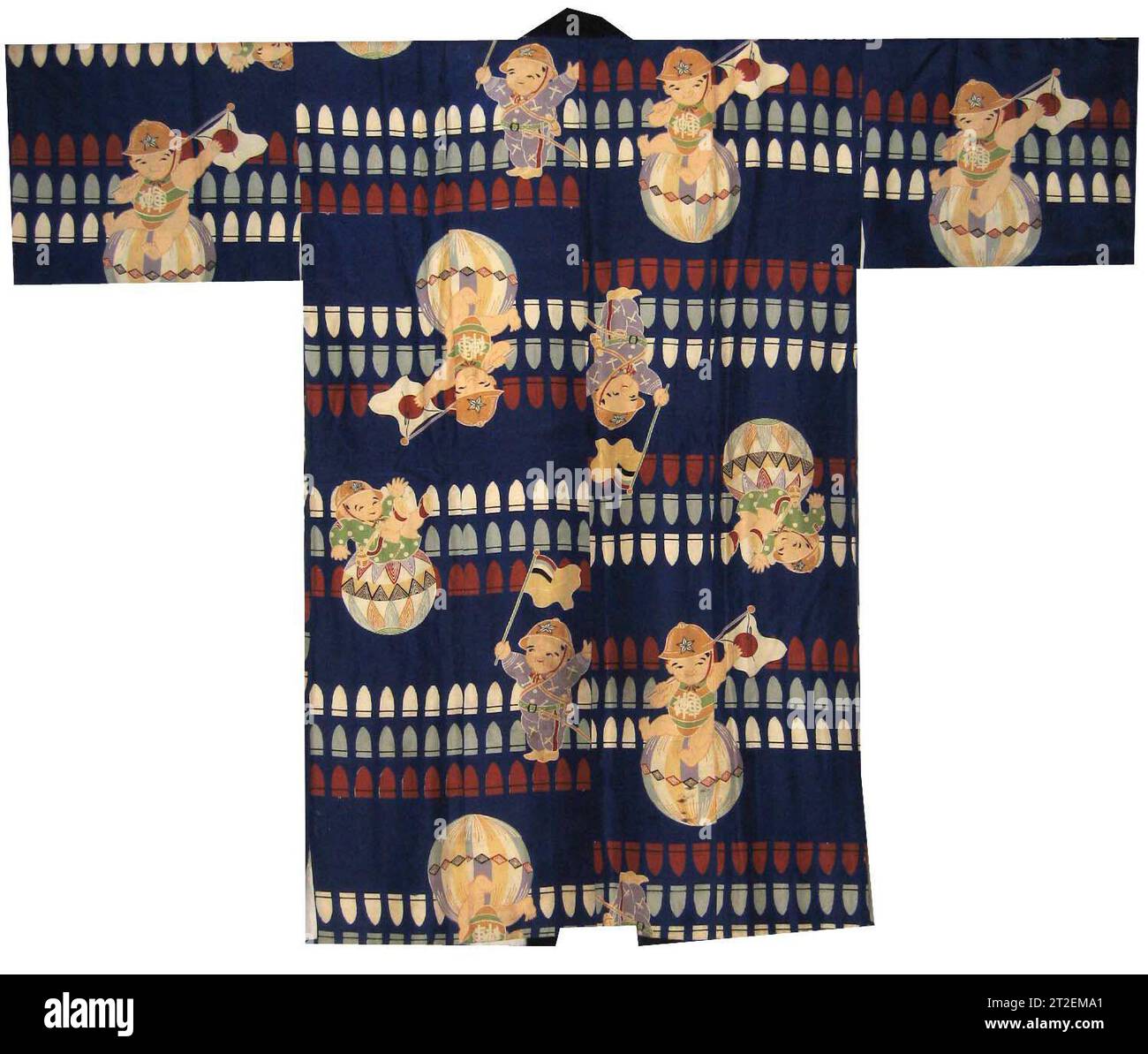 Boy’s Kimono with Lucky Thread Balls (Temari) and Bullets Japan ca. 1940s Boys, some of them sitting on oversized temari (lucky thread balls that Japanese mothers traditionally make for their daughters as New Year’s gifts), are depicted with army helmets. The characters on the chests of those carrying the Japanese flag read shingun, or “Divine Army,” referring to the forces of the emperor. The standing figures whose outfits depict fighter planes carry the flag of Manchukuo. They are shown against an endlessly repeating background of red, blue, and white bullets. View more. Boy’s Kimono with Lu Stock Photohttps://www.alamy.com/image-license-details/?v=1https://www.alamy.com/boys-kimono-with-lucky-thread-balls-temari-and-bullets-japan-ca-1940s-boys-some-of-them-sitting-on-oversized-temari-lucky-thread-balls-that-japanese-mothers-traditionally-make-for-their-daughters-as-new-years-gifts-are-depicted-with-army-helmets-the-characters-on-the-chests-of-those-carrying-the-japanese-flag-read-shingun-or-divine-army-referring-to-the-forces-of-the-emperor-the-standing-figures-whose-outfits-depict-fighter-planes-carry-the-flag-of-manchukuo-they-are-shown-against-an-endlessly-repeating-background-of-red-blue-and-white-bullets-view-more-boys-kimono-with-lu-image569494745.html
Boy’s Kimono with Lucky Thread Balls (Temari) and Bullets Japan ca. 1940s Boys, some of them sitting on oversized temari (lucky thread balls that Japanese mothers traditionally make for their daughters as New Year’s gifts), are depicted with army helmets. The characters on the chests of those carrying the Japanese flag read shingun, or “Divine Army,” referring to the forces of the emperor. The standing figures whose outfits depict fighter planes carry the flag of Manchukuo. They are shown against an endlessly repeating background of red, blue, and white bullets. View more. Boy’s Kimono with Lu Stock Photohttps://www.alamy.com/image-license-details/?v=1https://www.alamy.com/boys-kimono-with-lucky-thread-balls-temari-and-bullets-japan-ca-1940s-boys-some-of-them-sitting-on-oversized-temari-lucky-thread-balls-that-japanese-mothers-traditionally-make-for-their-daughters-as-new-years-gifts-are-depicted-with-army-helmets-the-characters-on-the-chests-of-those-carrying-the-japanese-flag-read-shingun-or-divine-army-referring-to-the-forces-of-the-emperor-the-standing-figures-whose-outfits-depict-fighter-planes-carry-the-flag-of-manchukuo-they-are-shown-against-an-endlessly-repeating-background-of-red-blue-and-white-bullets-view-more-boys-kimono-with-lu-image569494745.htmlRM2T2EMA1–Boy’s Kimono with Lucky Thread Balls (Temari) and Bullets Japan ca. 1940s Boys, some of them sitting on oversized temari (lucky thread balls that Japanese mothers traditionally make for their daughters as New Year’s gifts), are depicted with army helmets. The characters on the chests of those carrying the Japanese flag read shingun, or “Divine Army,” referring to the forces of the emperor. The standing figures whose outfits depict fighter planes carry the flag of Manchukuo. They are shown against an endlessly repeating background of red, blue, and white bullets. View more. Boy’s Kimono with Lu
 Manchukuo 1 Fen Coin of 1936 Stock Photohttps://www.alamy.com/image-license-details/?v=1https://www.alamy.com/manchukuo-1-fen-coin-of-1936-image344413575.html
Manchukuo 1 Fen Coin of 1936 Stock Photohttps://www.alamy.com/image-license-details/?v=1https://www.alamy.com/manchukuo-1-fen-coin-of-1936-image344413575.htmlRM2B09B0R–Manchukuo 1 Fen Coin of 1936
 This is the entrance to the Nigjo detached Palace and its most outside building of the Palace. As the picture shows, this is the most typical wooden building of Palacial building of Japan. H.I.M. the emperor Kwangte of Manchukuo is to take his ouaters in this historical wooden building, during ***** in Kyoto. March 06, 1935. (Photo by The Shimbun Rengo News Photos Service). Stock Photohttps://www.alamy.com/image-license-details/?v=1https://www.alamy.com/this-is-the-entrance-to-the-nigjo-detached-palace-and-its-most-outside-building-of-the-palace-as-the-picture-shows-this-is-the-most-typical-wooden-building-of-palacial-building-of-japan-him-the-emperor-kwangte-of-manchukuo-is-to-take-his-ouaters-in-this-historical-wooden-building-during-in-kyoto-march-06-1935-photo-by-the-shimbun-rengo-news-photos-service-image467218931.html
This is the entrance to the Nigjo detached Palace and its most outside building of the Palace. As the picture shows, this is the most typical wooden building of Palacial building of Japan. H.I.M. the emperor Kwangte of Manchukuo is to take his ouaters in this historical wooden building, during ***** in Kyoto. March 06, 1935. (Photo by The Shimbun Rengo News Photos Service). Stock Photohttps://www.alamy.com/image-license-details/?v=1https://www.alamy.com/this-is-the-entrance-to-the-nigjo-detached-palace-and-its-most-outside-building-of-the-palace-as-the-picture-shows-this-is-the-most-typical-wooden-building-of-palacial-building-of-japan-him-the-emperor-kwangte-of-manchukuo-is-to-take-his-ouaters-in-this-historical-wooden-building-during-in-kyoto-march-06-1935-photo-by-the-shimbun-rengo-news-photos-service-image467218931.htmlRM2J43JEB–This is the entrance to the Nigjo detached Palace and its most outside building of the Palace. As the picture shows, this is the most typical wooden building of Palacial building of Japan. H.I.M. the emperor Kwangte of Manchukuo is to take his ouaters in this historical wooden building, during ***** in Kyoto. March 06, 1935. (Photo by The Shimbun Rengo News Photos Service).
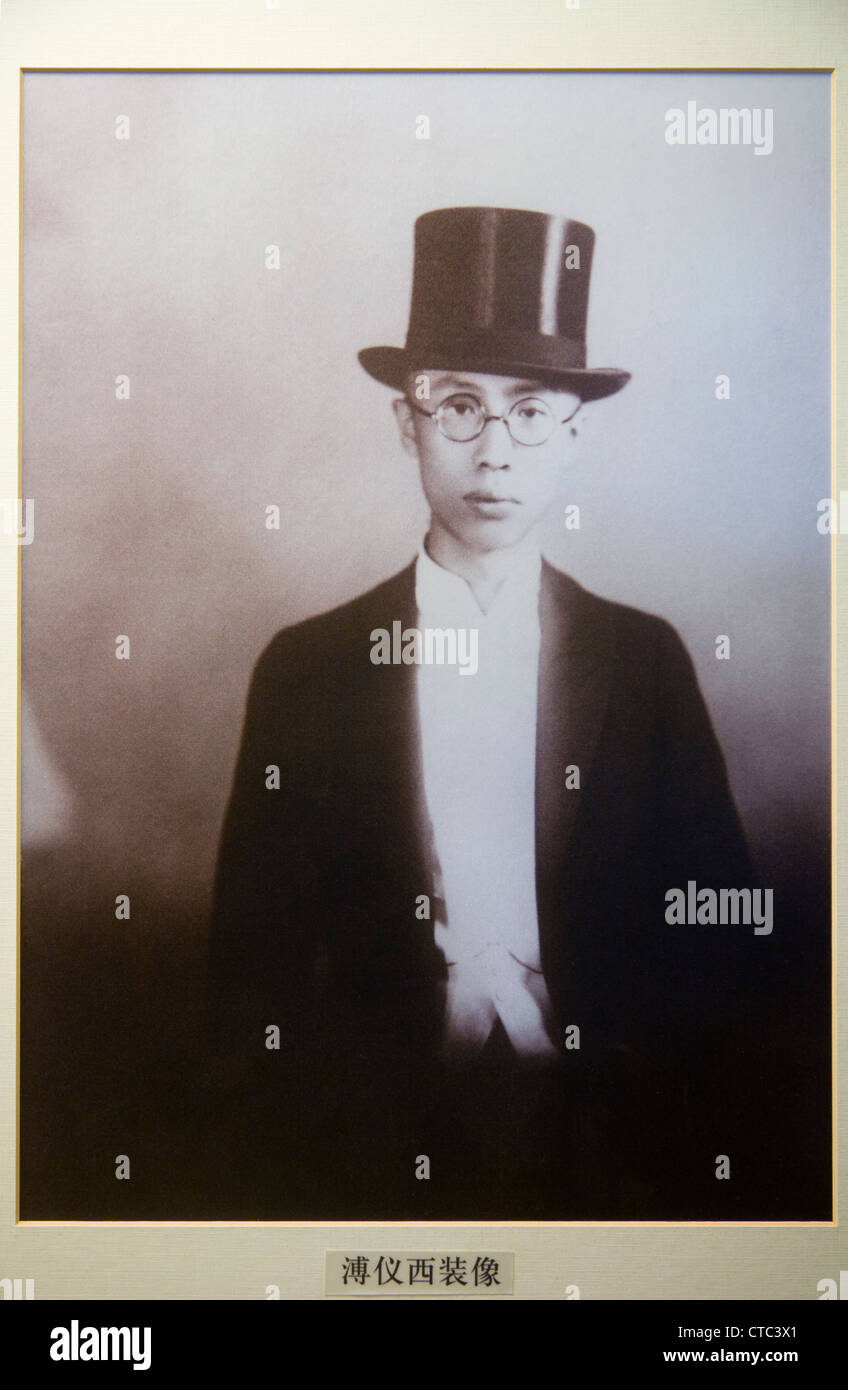 China's Last Emperor Puyi / Pu Yi as a young man, wearing formal attire of (apparently) White Tie evening dress with top hat. Stock Photohttps://www.alamy.com/image-license-details/?v=1https://www.alamy.com/stock-photo-chinas-last-emperor-puyi-pu-yi-as-a-young-man-wearing-formal-attire-49438985.html
China's Last Emperor Puyi / Pu Yi as a young man, wearing formal attire of (apparently) White Tie evening dress with top hat. Stock Photohttps://www.alamy.com/image-license-details/?v=1https://www.alamy.com/stock-photo-chinas-last-emperor-puyi-pu-yi-as-a-young-man-wearing-formal-attire-49438985.htmlRMCTC3X1–China's Last Emperor Puyi / Pu Yi as a young man, wearing formal attire of (apparently) White Tie evening dress with top hat.
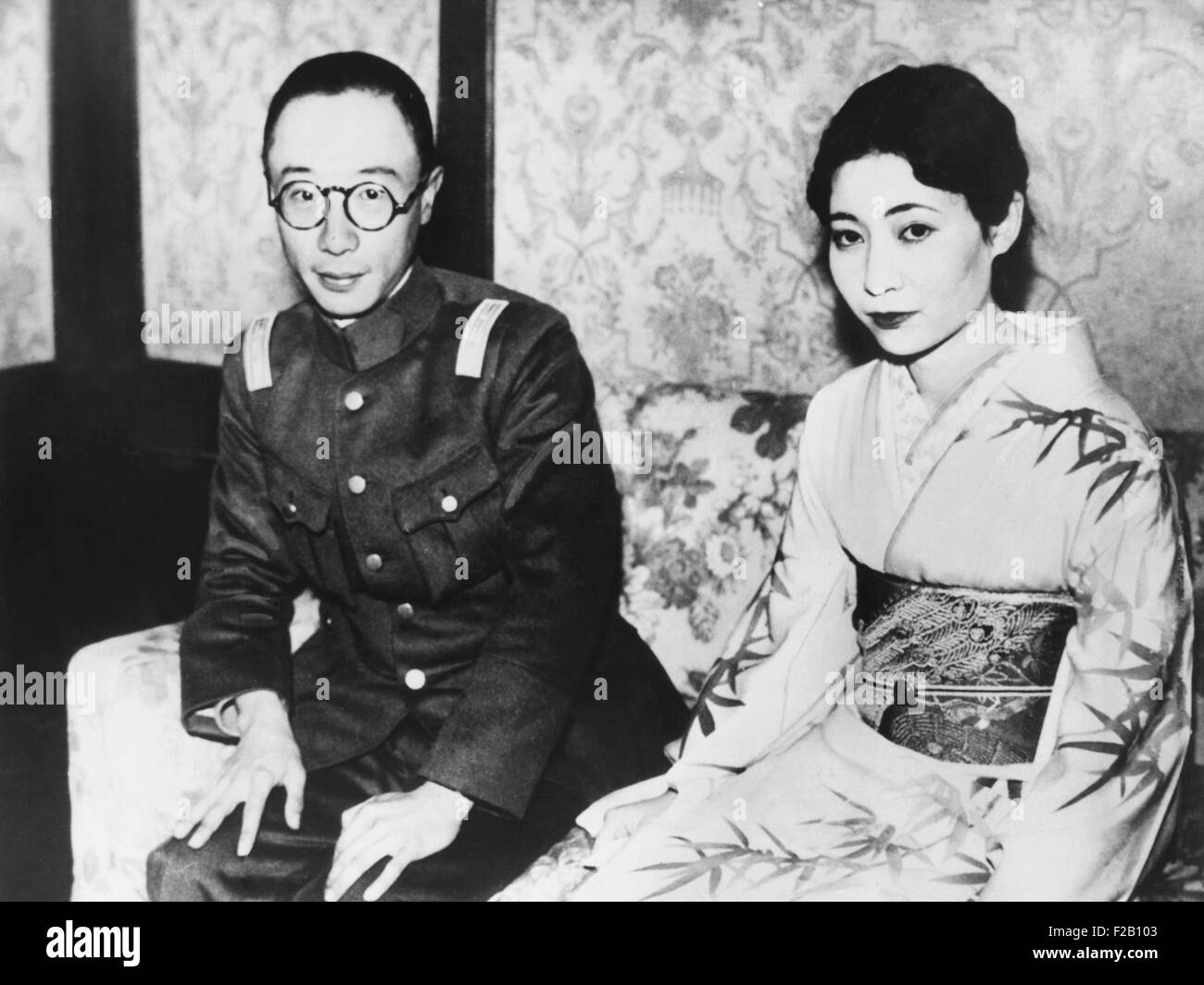 Prince Pu Chieh, younger brother of the Emperor of Manchukuo and his fiance. Miss Hiroko Saga was a daughter of one of Japan's oldest families. March 26, 1935. (CSU 2015 9 1009) Stock Photohttps://www.alamy.com/image-license-details/?v=1https://www.alamy.com/stock-photo-prince-pu-chieh-younger-brother-of-the-emperor-of-manchukuo-and-his-87523411.html
Prince Pu Chieh, younger brother of the Emperor of Manchukuo and his fiance. Miss Hiroko Saga was a daughter of one of Japan's oldest families. March 26, 1935. (CSU 2015 9 1009) Stock Photohttps://www.alamy.com/image-license-details/?v=1https://www.alamy.com/stock-photo-prince-pu-chieh-younger-brother-of-the-emperor-of-manchukuo-and-his-87523411.htmlRMF2B103–Prince Pu Chieh, younger brother of the Emperor of Manchukuo and his fiance. Miss Hiroko Saga was a daughter of one of Japan's oldest families. March 26, 1935. (CSU 2015 9 1009)
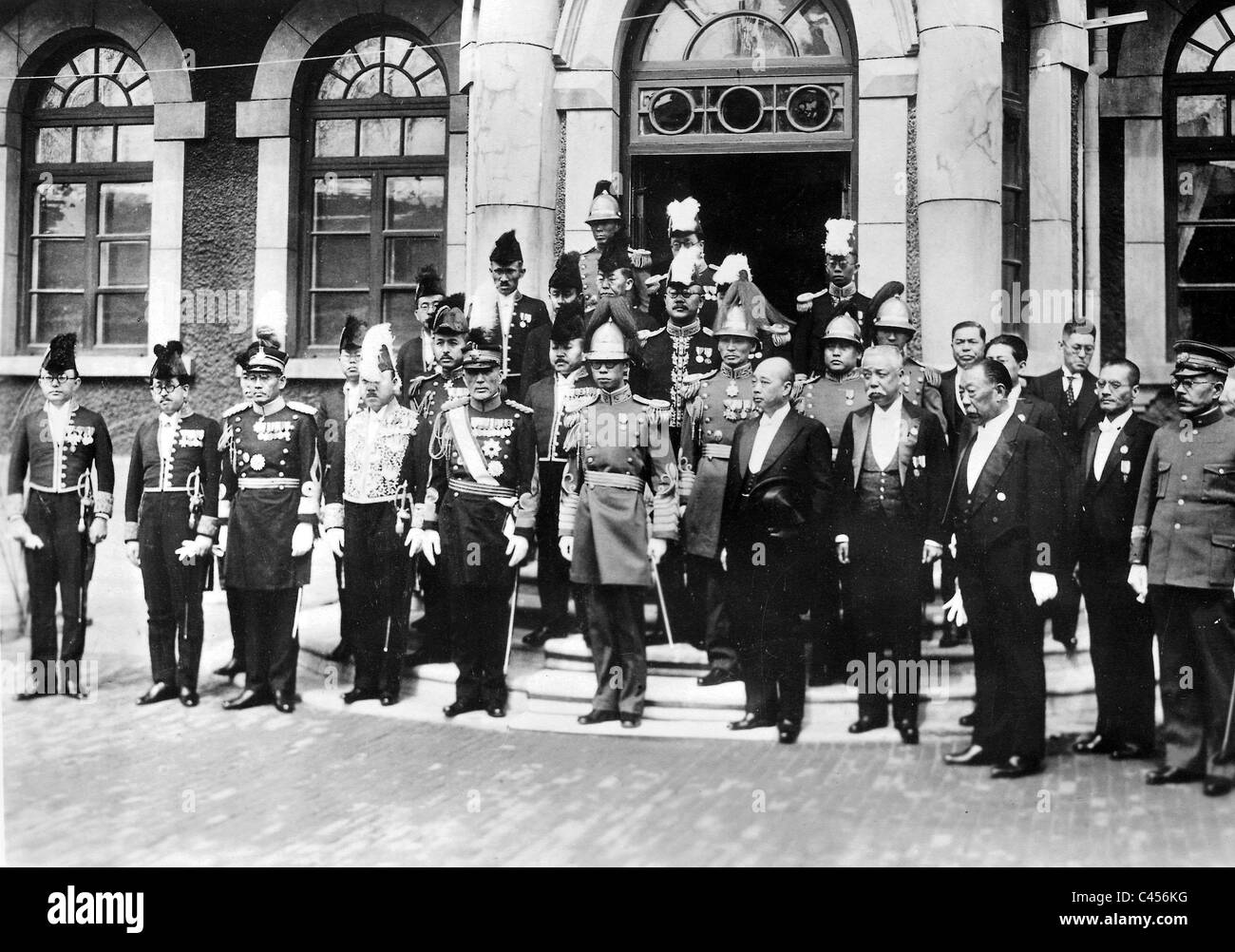 The Emperor of Manchukuo, Aisin-Gioro Puyi , in Hsinking in 1934 Stock Photohttps://www.alamy.com/image-license-details/?v=1https://www.alamy.com/stock-photo-the-emperor-of-manchukuo-aisin-gioro-puyi-in-hsinking-in-1934-36994372.html
The Emperor of Manchukuo, Aisin-Gioro Puyi , in Hsinking in 1934 Stock Photohttps://www.alamy.com/image-license-details/?v=1https://www.alamy.com/stock-photo-the-emperor-of-manchukuo-aisin-gioro-puyi-in-hsinking-in-1934-36994372.htmlRMC456KG–The Emperor of Manchukuo, Aisin-Gioro Puyi , in Hsinking in 1934
 1934 News Chronicle Japan establish oil monopoly in Manchuria Stock Photohttps://www.alamy.com/image-license-details/?v=1https://www.alamy.com/stock-photo-1934-news-chronicle-japan-establish-oil-monopoly-in-manchuria-126466897.html
1934 News Chronicle Japan establish oil monopoly in Manchuria Stock Photohttps://www.alamy.com/image-license-details/?v=1https://www.alamy.com/stock-photo-1934-news-chronicle-japan-establish-oil-monopoly-in-manchuria-126466897.htmlRMH9N1PW–1934 News Chronicle Japan establish oil monopoly in Manchuria
![Japanese Emperor Hirohito with Manchukuo Emperor Puyi on a ride in Tokyo. [automated translation] Stock Photo Japanese Emperor Hirohito with Manchukuo Emperor Puyi on a ride in Tokyo. [automated translation] Stock Photo](https://c8.alamy.com/comp/2T6963K/japanese-emperor-hirohito-with-manchukuo-emperor-puyi-on-a-ride-in-tokyo-automated-translation-2T6963K.jpg) Japanese Emperor Hirohito with Manchukuo Emperor Puyi on a ride in Tokyo. [automated translation] Stock Photohttps://www.alamy.com/image-license-details/?v=1https://www.alamy.com/japanese-emperor-hirohito-with-manchukuo-emperor-puyi-on-a-ride-in-tokyo-automated-translation-image571832455.html
Japanese Emperor Hirohito with Manchukuo Emperor Puyi on a ride in Tokyo. [automated translation] Stock Photohttps://www.alamy.com/image-license-details/?v=1https://www.alamy.com/japanese-emperor-hirohito-with-manchukuo-emperor-puyi-on-a-ride-in-tokyo-automated-translation-image571832455.htmlRM2T6963K–Japanese Emperor Hirohito with Manchukuo Emperor Puyi on a ride in Tokyo. [automated translation]
 Chinese residents of Manchuria read Japanese announcements. They report establishment of the Republic of Manchukuo with Mr. Henry Pu-Yi, as its chief executive. Japan essentially annexed Manchuria and installed the former child Emperor as its puppet ruler. 1934. - (BSLOC 2014 15 157) Stock Photohttps://www.alamy.com/image-license-details/?v=1https://www.alamy.com/stock-photo-chinese-residents-of-manchuria-read-japanese-announcements-they-report-170539970.html
Chinese residents of Manchuria read Japanese announcements. They report establishment of the Republic of Manchukuo with Mr. Henry Pu-Yi, as its chief executive. Japan essentially annexed Manchuria and installed the former child Emperor as its puppet ruler. 1934. - (BSLOC 2014 15 157) Stock Photohttps://www.alamy.com/image-license-details/?v=1https://www.alamy.com/stock-photo-chinese-residents-of-manchuria-read-japanese-announcements-they-report-170539970.htmlRMKWCND6–Chinese residents of Manchuria read Japanese announcements. They report establishment of the Republic of Manchukuo with Mr. Henry Pu-Yi, as its chief executive. Japan essentially annexed Manchuria and installed the former child Emperor as its puppet ruler. 1934. - (BSLOC 2014 15 157)
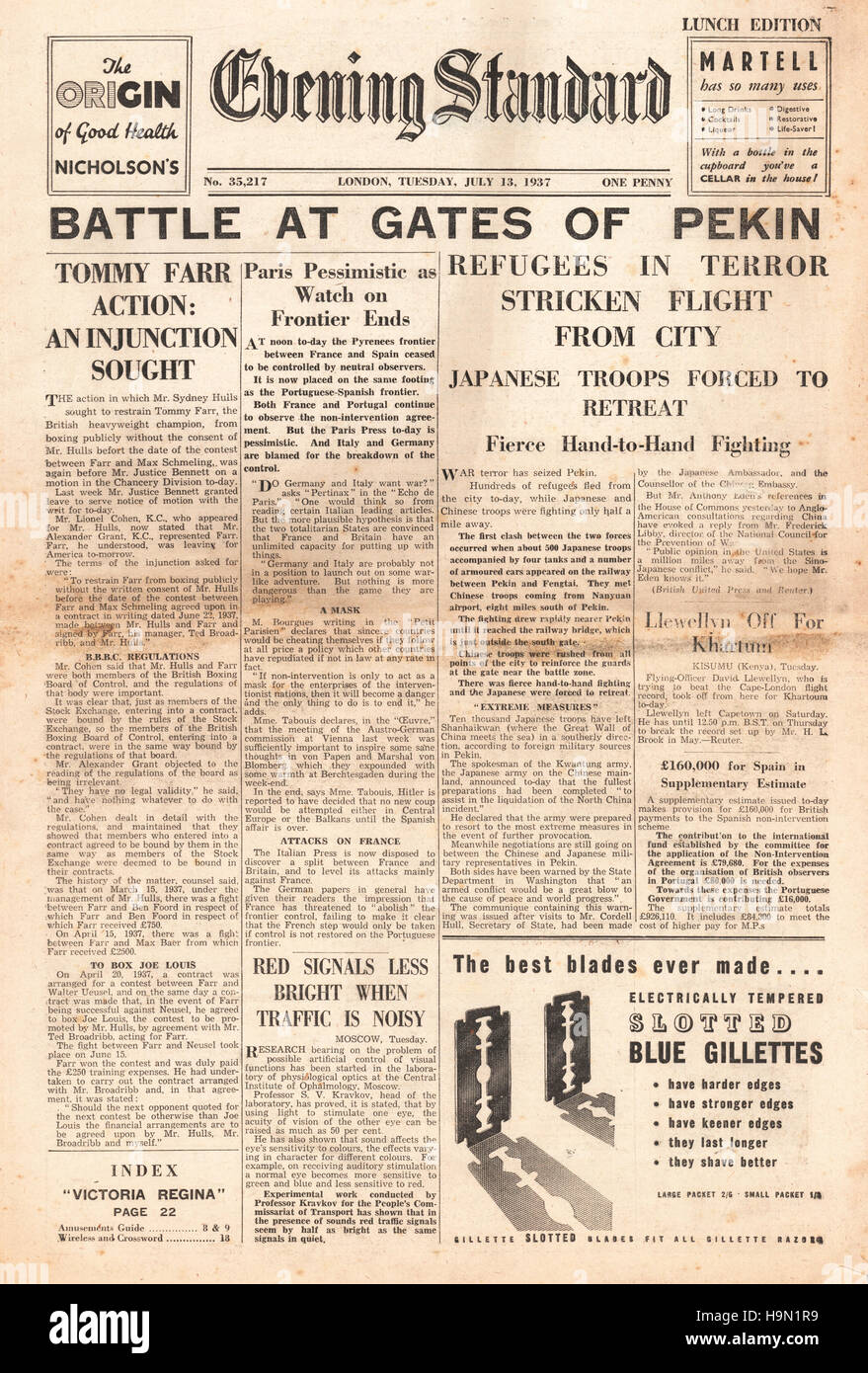 1937 Evening Standard front page Battle for Peking Stock Photohttps://www.alamy.com/image-license-details/?v=1https://www.alamy.com/stock-photo-1937-evening-standard-front-page-battle-for-peking-126466909.html
1937 Evening Standard front page Battle for Peking Stock Photohttps://www.alamy.com/image-license-details/?v=1https://www.alamy.com/stock-photo-1937-evening-standard-front-page-battle-for-peking-126466909.htmlRMH9N1R9–1937 Evening Standard front page Battle for Peking
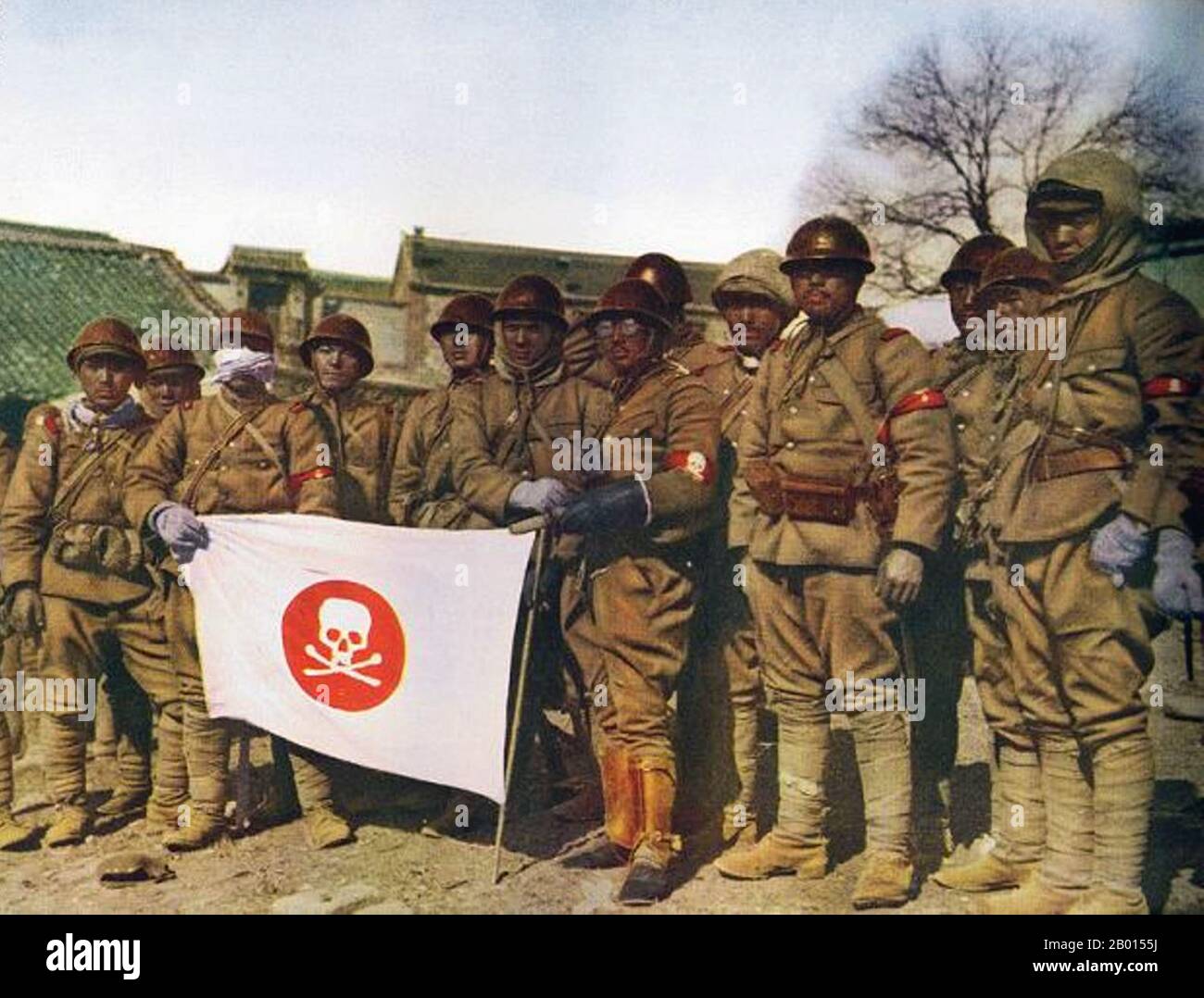 China: Japanese soldiers display a skull and cross-bones flag in occupied Manchuria (Manchukuo), 1933. The Second Sino-Japanese War is usually dated from 1937 to Japan's final defeat in 1945, but in fact Japan and China had been in a state of undeclared war from the time of the Mukden Incident in 1931 when Japan seized Manchuria and set up the puppet state of Manchukuo. The Japanese installed the former Qing Emperor Puyi as Head of State in 1932, and two years later he was declared Emperor of Manchukuo with the era name of Kangde ('Tranquility and Virtue'). Stock Photohttps://www.alamy.com/image-license-details/?v=1https://www.alamy.com/china-japanese-soldiers-display-a-skull-and-cross-bones-flag-in-occupied-manchuria-manchukuo-1933-the-second-sino-japanese-war-is-usually-dated-from-1937-to-japans-final-defeat-in-1945-but-in-fact-japan-and-china-had-been-in-a-state-of-undeclared-war-from-the-time-of-the-mukden-incident-in-1931-when-japan-seized-manchuria-and-set-up-the-puppet-state-of-manchukuo-the-japanese-installed-the-former-qing-emperor-puyi-as-head-of-state-in-1932-and-two-years-later-he-was-declared-emperor-of-manchukuo-with-the-era-name-of-kangde-tranquility-and-virtue-image344233390.html
China: Japanese soldiers display a skull and cross-bones flag in occupied Manchuria (Manchukuo), 1933. The Second Sino-Japanese War is usually dated from 1937 to Japan's final defeat in 1945, but in fact Japan and China had been in a state of undeclared war from the time of the Mukden Incident in 1931 when Japan seized Manchuria and set up the puppet state of Manchukuo. The Japanese installed the former Qing Emperor Puyi as Head of State in 1932, and two years later he was declared Emperor of Manchukuo with the era name of Kangde ('Tranquility and Virtue'). Stock Photohttps://www.alamy.com/image-license-details/?v=1https://www.alamy.com/china-japanese-soldiers-display-a-skull-and-cross-bones-flag-in-occupied-manchuria-manchukuo-1933-the-second-sino-japanese-war-is-usually-dated-from-1937-to-japans-final-defeat-in-1945-but-in-fact-japan-and-china-had-been-in-a-state-of-undeclared-war-from-the-time-of-the-mukden-incident-in-1931-when-japan-seized-manchuria-and-set-up-the-puppet-state-of-manchukuo-the-japanese-installed-the-former-qing-emperor-puyi-as-head-of-state-in-1932-and-two-years-later-he-was-declared-emperor-of-manchukuo-with-the-era-name-of-kangde-tranquility-and-virtue-image344233390.htmlRM2B0155J–China: Japanese soldiers display a skull and cross-bones flag in occupied Manchuria (Manchukuo), 1933. The Second Sino-Japanese War is usually dated from 1937 to Japan's final defeat in 1945, but in fact Japan and China had been in a state of undeclared war from the time of the Mukden Incident in 1931 when Japan seized Manchuria and set up the puppet state of Manchukuo. The Japanese installed the former Qing Emperor Puyi as Head of State in 1932, and two years later he was declared Emperor of Manchukuo with the era name of Kangde ('Tranquility and Virtue').
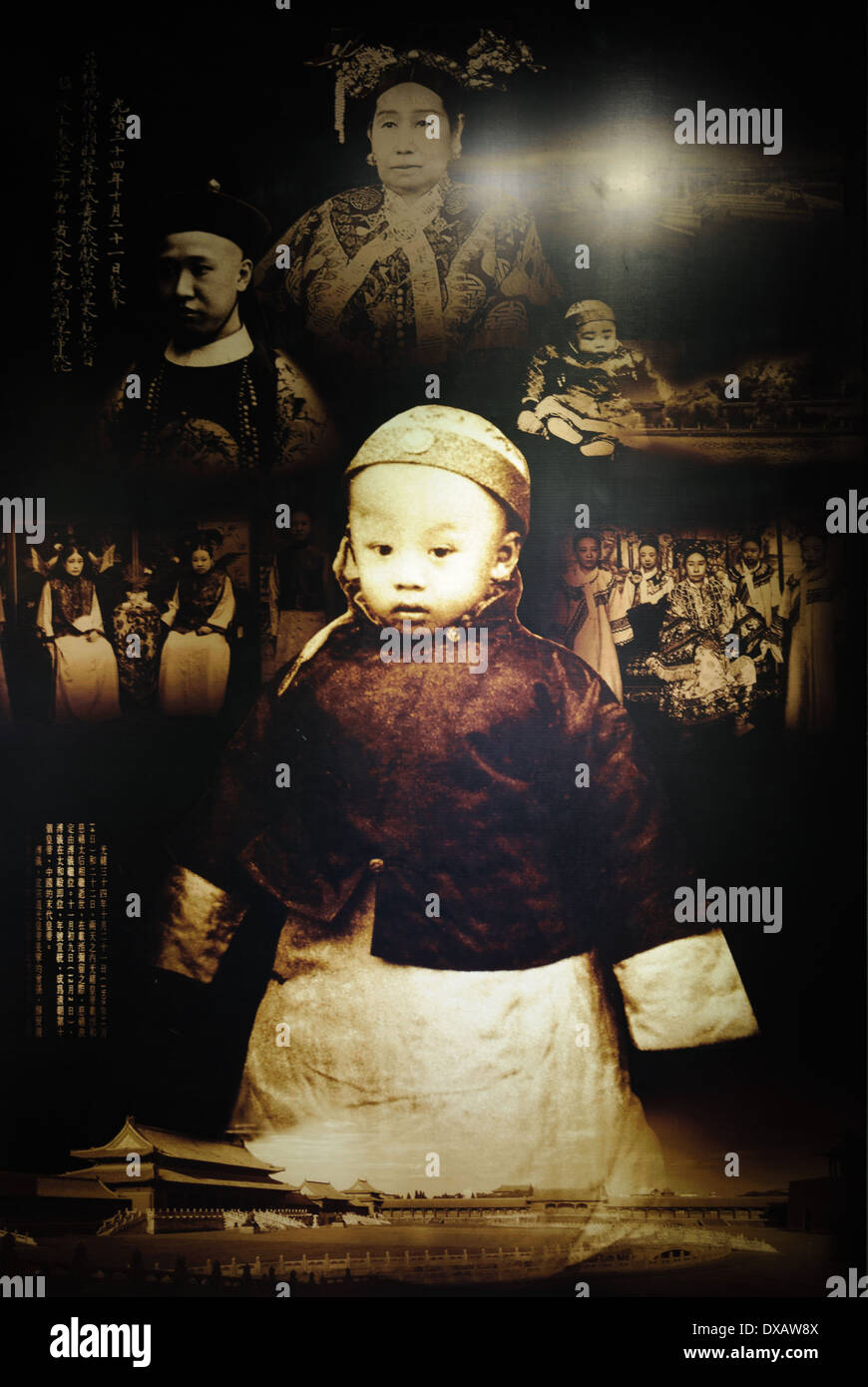 Photo of the Last Qing Emperor Puyi as a child . Puppet Emperor's Palace & Exhibition Hall .Changchun. Jilin Province, China Stock Photohttps://www.alamy.com/image-license-details/?v=1https://www.alamy.com/photo-of-the-last-qing-emperor-puyi-as-a-child-puppet-emperors-palace-image67851530.html
Photo of the Last Qing Emperor Puyi as a child . Puppet Emperor's Palace & Exhibition Hall .Changchun. Jilin Province, China Stock Photohttps://www.alamy.com/image-license-details/?v=1https://www.alamy.com/photo-of-the-last-qing-emperor-puyi-as-a-child-puppet-emperors-palace-image67851530.htmlRMDXAW8X–Photo of the Last Qing Emperor Puyi as a child . Puppet Emperor's Palace & Exhibition Hall .Changchun. Jilin Province, China
 At Euston . Princess Jun Ho , with her husband and baby , on their departure to join the Princess ' brother , Pu Yi , Emperor of Manchukuo . They have been staying in England for two years as Mr and Mrs Cheng , in the care of Sir Reginald Johnston . 23 March 1934 Stock Photohttps://www.alamy.com/image-license-details/?v=1https://www.alamy.com/at-euston-princess-jun-ho-with-her-husband-and-baby-on-their-departure-to-join-the-princess-brother-pu-yi-emperor-of-manchukuo-they-have-been-staying-in-england-for-two-years-as-mr-and-mrs-cheng-in-the-care-of-sir-reginald-johnston-23-march-1934-image359805708.html
At Euston . Princess Jun Ho , with her husband and baby , on their departure to join the Princess ' brother , Pu Yi , Emperor of Manchukuo . They have been staying in England for two years as Mr and Mrs Cheng , in the care of Sir Reginald Johnston . 23 March 1934 Stock Photohttps://www.alamy.com/image-license-details/?v=1https://www.alamy.com/at-euston-princess-jun-ho-with-her-husband-and-baby-on-their-departure-to-join-the-princess-brother-pu-yi-emperor-of-manchukuo-they-have-been-staying-in-england-for-two-years-as-mr-and-mrs-cheng-in-the-care-of-sir-reginald-johnston-23-march-1934-image359805708.htmlRM2BWAFRT–At Euston . Princess Jun Ho , with her husband and baby , on their departure to join the Princess ' brother , Pu Yi , Emperor of Manchukuo . They have been staying in England for two years as Mr and Mrs Cheng , in the care of Sir Reginald Johnston . 23 March 1934
 This is the vain building of the Nijo-Castle Imperial detached Palace of Tokyo where is the Imperial ouaters of H.I.M. the Emperor Kwangte of Manchukuo during his sojourn in Kyoto. This historical wooden building was built by Hideyoshi Taiko in 16th century at first and burning several times tilt. the Meiji restoration age. This is the unique wooden Palacial building now ***** as the national treasury. March 06, 1935. (Photo by The Shimbun Rengo News Photos Service). Stock Photohttps://www.alamy.com/image-license-details/?v=1https://www.alamy.com/this-is-the-vain-building-of-the-nijo-castle-imperial-detached-palace-of-tokyo-where-is-the-imperial-ouaters-of-him-the-emperor-kwangte-of-manchukuo-during-his-sojourn-in-kyoto-this-historical-wooden-building-was-built-by-hideyoshi-taiko-in-16th-century-at-first-and-burning-several-times-tilt-the-meiji-restoration-age-this-is-the-unique-wooden-palacial-building-now-as-the-national-treasury-march-06-1935-photo-by-the-shimbun-rengo-news-photos-service-image467218852.html
This is the vain building of the Nijo-Castle Imperial detached Palace of Tokyo where is the Imperial ouaters of H.I.M. the Emperor Kwangte of Manchukuo during his sojourn in Kyoto. This historical wooden building was built by Hideyoshi Taiko in 16th century at first and burning several times tilt. the Meiji restoration age. This is the unique wooden Palacial building now ***** as the national treasury. March 06, 1935. (Photo by The Shimbun Rengo News Photos Service). Stock Photohttps://www.alamy.com/image-license-details/?v=1https://www.alamy.com/this-is-the-vain-building-of-the-nijo-castle-imperial-detached-palace-of-tokyo-where-is-the-imperial-ouaters-of-him-the-emperor-kwangte-of-manchukuo-during-his-sojourn-in-kyoto-this-historical-wooden-building-was-built-by-hideyoshi-taiko-in-16th-century-at-first-and-burning-several-times-tilt-the-meiji-restoration-age-this-is-the-unique-wooden-palacial-building-now-as-the-national-treasury-march-06-1935-photo-by-the-shimbun-rengo-news-photos-service-image467218852.htmlRM2J43JBG–This is the vain building of the Nijo-Castle Imperial detached Palace of Tokyo where is the Imperial ouaters of H.I.M. the Emperor Kwangte of Manchukuo during his sojourn in Kyoto. This historical wooden building was built by Hideyoshi Taiko in 16th century at first and burning several times tilt. the Meiji restoration age. This is the unique wooden Palacial building now ***** as the national treasury. March 06, 1935. (Photo by The Shimbun Rengo News Photos Service).
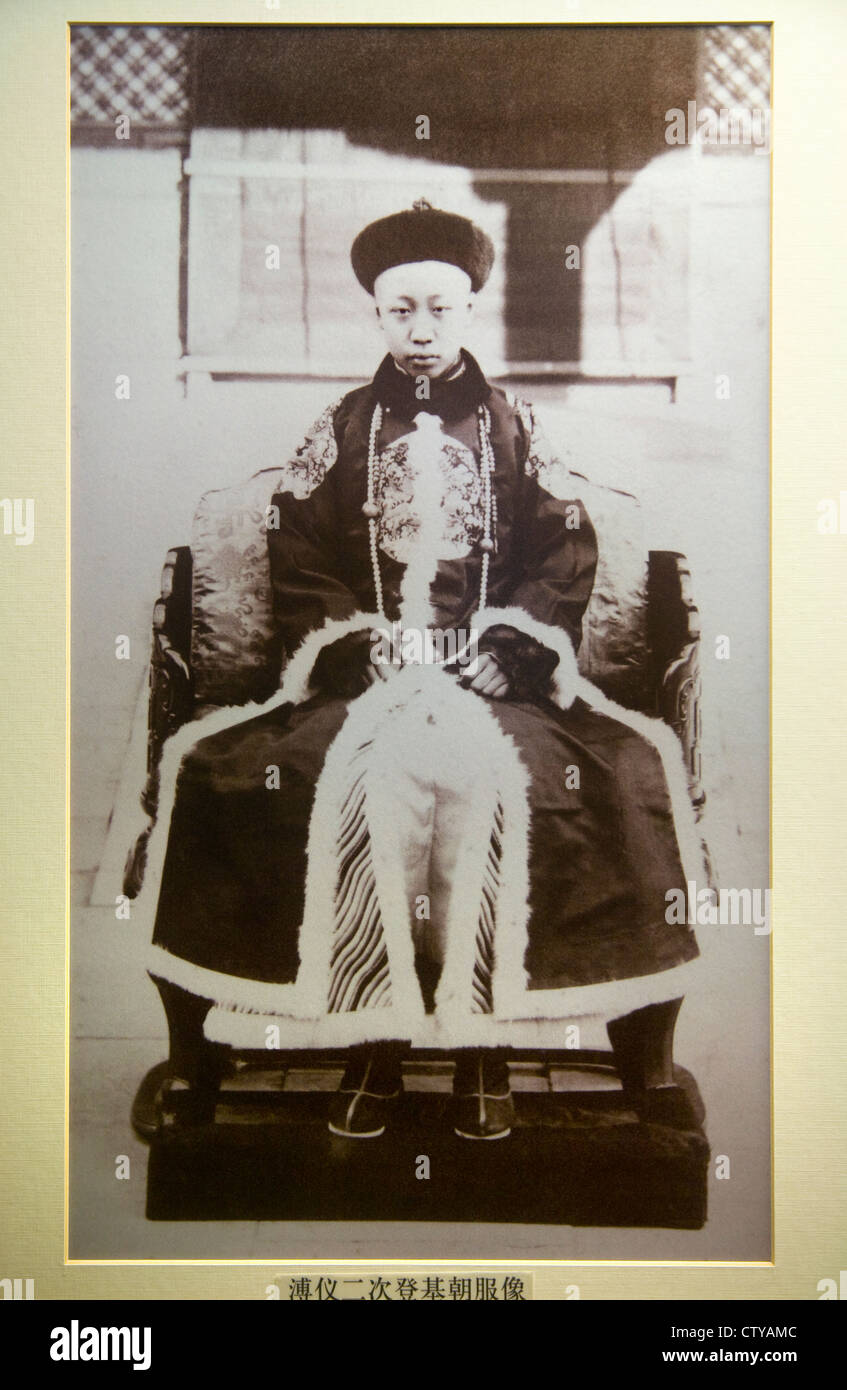 China 's Last Emperor Puyi / Pu Yi as a young man, wearing Chinese Court robe / clothes, fit for a member of the Royal family. Stock Photohttps://www.alamy.com/image-license-details/?v=1https://www.alamy.com/stock-photo-china-s-last-emperor-puyi-pu-yi-as-a-young-man-wearing-chinese-court-49773596.html
China 's Last Emperor Puyi / Pu Yi as a young man, wearing Chinese Court robe / clothes, fit for a member of the Royal family. Stock Photohttps://www.alamy.com/image-license-details/?v=1https://www.alamy.com/stock-photo-china-s-last-emperor-puyi-pu-yi-as-a-young-man-wearing-chinese-court-49773596.htmlRMCTYAMC–China 's Last Emperor Puyi / Pu Yi as a young man, wearing Chinese Court robe / clothes, fit for a member of the Royal family.
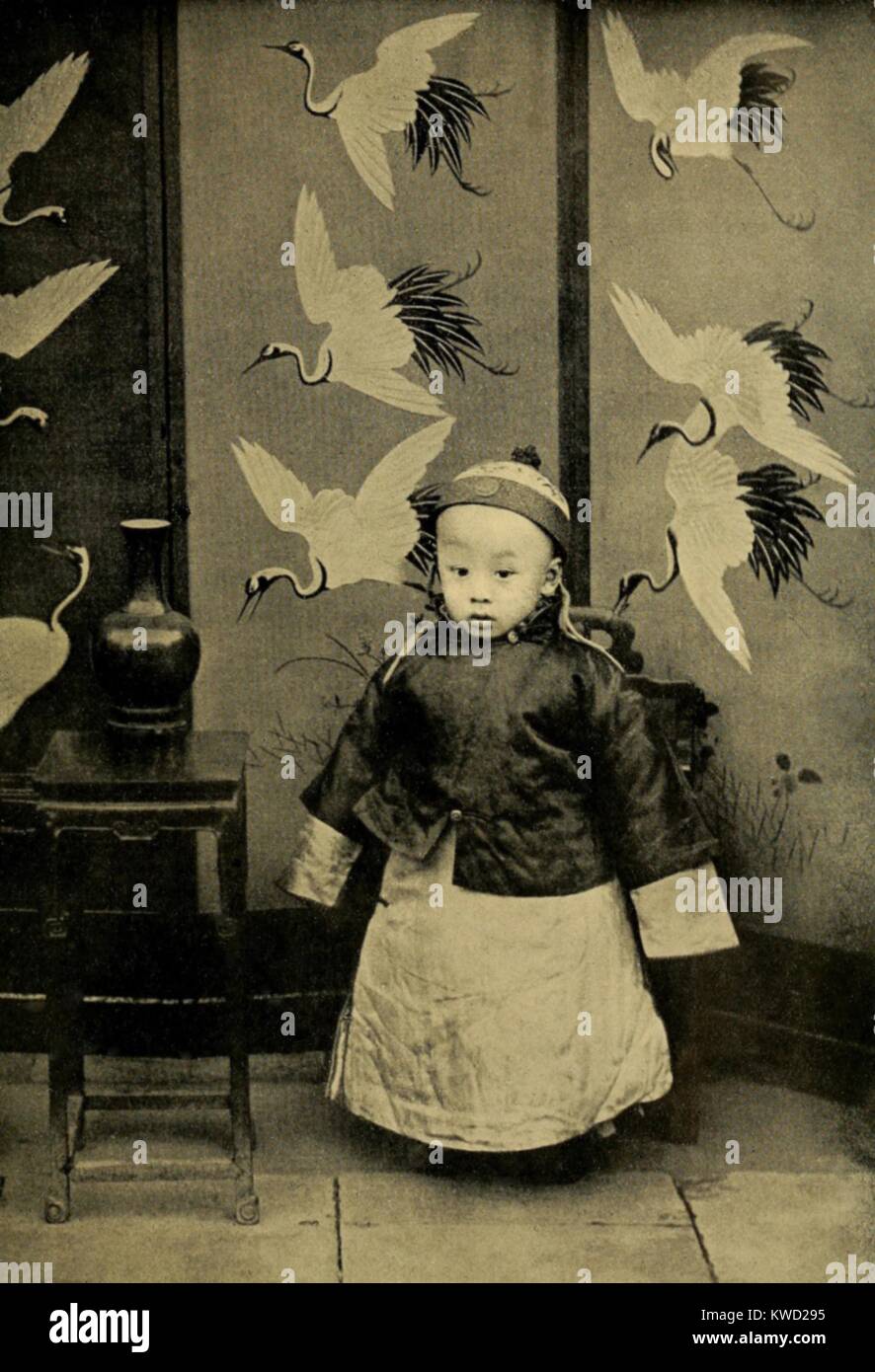 Xuantong Emperor, 3-year old Puyi, in 1909. In Feb. 1912, during the Xinhai Revolution, he was forced to force to abdicate. As an adult, he became the Kangde Emperor, Japanese puppet of Manchukuo, during the Second Sino-Japanese War and World War 2. His life was the subject of the 1987 film, THE LAST EMPEROR, by Bernardo Bertolucci (BSLOC 2017 20 6) Stock Photohttps://www.alamy.com/image-license-details/?v=1https://www.alamy.com/stock-photo-xuantong-emperor-3-year-old-puyi-in-1909-in-feb-1912-during-the-xinhai-170546913.html
Xuantong Emperor, 3-year old Puyi, in 1909. In Feb. 1912, during the Xinhai Revolution, he was forced to force to abdicate. As an adult, he became the Kangde Emperor, Japanese puppet of Manchukuo, during the Second Sino-Japanese War and World War 2. His life was the subject of the 1987 film, THE LAST EMPEROR, by Bernardo Bertolucci (BSLOC 2017 20 6) Stock Photohttps://www.alamy.com/image-license-details/?v=1https://www.alamy.com/stock-photo-xuantong-emperor-3-year-old-puyi-in-1909-in-feb-1912-during-the-xinhai-170546913.htmlRMKWD295–Xuantong Emperor, 3-year old Puyi, in 1909. In Feb. 1912, during the Xinhai Revolution, he was forced to force to abdicate. As an adult, he became the Kangde Emperor, Japanese puppet of Manchukuo, during the Second Sino-Japanese War and World War 2. His life was the subject of the 1987 film, THE LAST EMPEROR, by Bernardo Bertolucci (BSLOC 2017 20 6)
 The Emperor-Elect And The New Capital Of Manchukuo. Our Portrait is of Henry Pu-Yi, the young chief of State of Manchukuo and the former Emperor of Manchukuo on March 1. He posed specially for this photograph which was taken at Hsingking by the Mukden correspondent of the Times. March 26, 1934. Stock Photohttps://www.alamy.com/image-license-details/?v=1https://www.alamy.com/the-emperor-elect-and-the-new-capital-of-manchukuo-our-portrait-is-of-henry-pu-yi-the-young-chief-of-state-of-manchukuo-and-the-former-emperor-of-manchukuo-on-march-1-he-posed-specially-for-this-photograph-which-was-taken-at-hsingking-by-the-mukden-correspondent-of-the-times-march-26-1934-image463551586.html
The Emperor-Elect And The New Capital Of Manchukuo. Our Portrait is of Henry Pu-Yi, the young chief of State of Manchukuo and the former Emperor of Manchukuo on March 1. He posed specially for this photograph which was taken at Hsingking by the Mukden correspondent of the Times. March 26, 1934. Stock Photohttps://www.alamy.com/image-license-details/?v=1https://www.alamy.com/the-emperor-elect-and-the-new-capital-of-manchukuo-our-portrait-is-of-henry-pu-yi-the-young-chief-of-state-of-manchukuo-and-the-former-emperor-of-manchukuo-on-march-1-he-posed-specially-for-this-photograph-which-was-taken-at-hsingking-by-the-mukden-correspondent-of-the-times-march-26-1934-image463551586.htmlRM2HX4GNP–The Emperor-Elect And The New Capital Of Manchukuo. Our Portrait is of Henry Pu-Yi, the young chief of State of Manchukuo and the former Emperor of Manchukuo on March 1. He posed specially for this photograph which was taken at Hsingking by the Mukden correspondent of the Times. March 26, 1934.
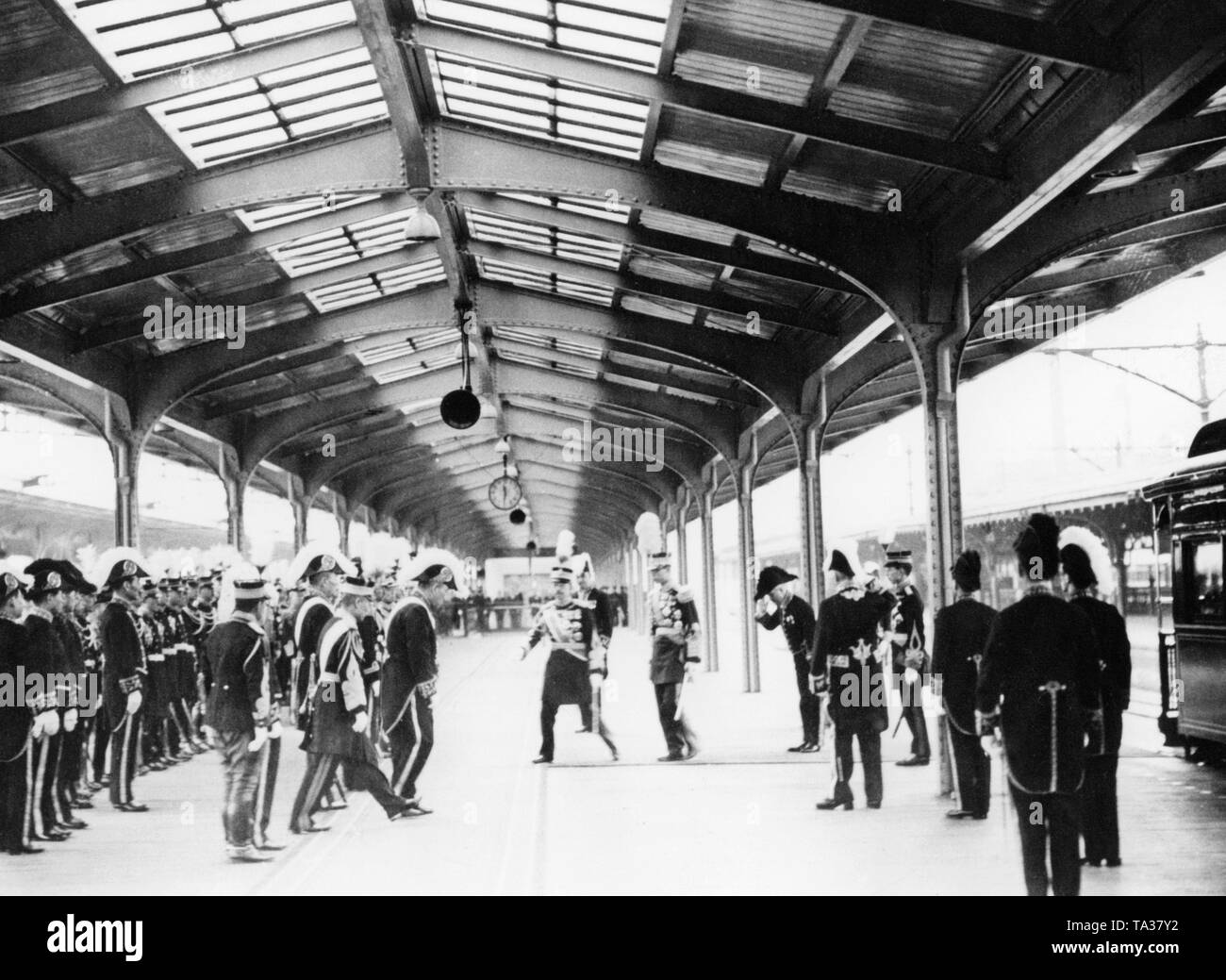 Emperor Puyi (center, right) who was chosen by Japan to become the Emperor of Manchukuo after the occupation of Manchuria and establishment of the state of Manchukuoon, a state visit to Tokyo. The Japanese Emperor Hirohito (center, left) introduces his minister to his guest. Stock Photohttps://www.alamy.com/image-license-details/?v=1https://www.alamy.com/emperor-puyi-center-right-who-was-chosen-by-japan-to-become-the-emperor-of-manchukuo-after-the-occupation-of-manchuria-and-establishment-of-the-state-of-manchukuoon-a-state-visit-to-tokyo-the-japanese-emperor-hirohito-center-left-introduces-his-minister-to-his-guest-image247163814.html
Emperor Puyi (center, right) who was chosen by Japan to become the Emperor of Manchukuo after the occupation of Manchuria and establishment of the state of Manchukuoon, a state visit to Tokyo. The Japanese Emperor Hirohito (center, left) introduces his minister to his guest. Stock Photohttps://www.alamy.com/image-license-details/?v=1https://www.alamy.com/emperor-puyi-center-right-who-was-chosen-by-japan-to-become-the-emperor-of-manchukuo-after-the-occupation-of-manchuria-and-establishment-of-the-state-of-manchukuoon-a-state-visit-to-tokyo-the-japanese-emperor-hirohito-center-left-introduces-his-minister-to-his-guest-image247163814.htmlRMTA37Y2–Emperor Puyi (center, right) who was chosen by Japan to become the Emperor of Manchukuo after the occupation of Manchuria and establishment of the state of Manchukuoon, a state visit to Tokyo. The Japanese Emperor Hirohito (center, left) introduces his minister to his guest.
 Emperor Pu-Yi of Manchukuo with his Japanese 'clients', all in dress uniform. Possibly at the formal recognition of Pu-Yi as Stock Photohttps://www.alamy.com/image-license-details/?v=1https://www.alamy.com/emperor-pu-yi-of-manchukuo-with-his-japanese-clients-all-in-dress-image69739615.html
Emperor Pu-Yi of Manchukuo with his Japanese 'clients', all in dress uniform. Possibly at the formal recognition of Pu-Yi as Stock Photohttps://www.alamy.com/image-license-details/?v=1https://www.alamy.com/emperor-pu-yi-of-manchukuo-with-his-japanese-clients-all-in-dress-image69739615.htmlRME1CWGF–Emperor Pu-Yi of Manchukuo with his Japanese 'clients', all in dress uniform. Possibly at the formal recognition of Pu-Yi as
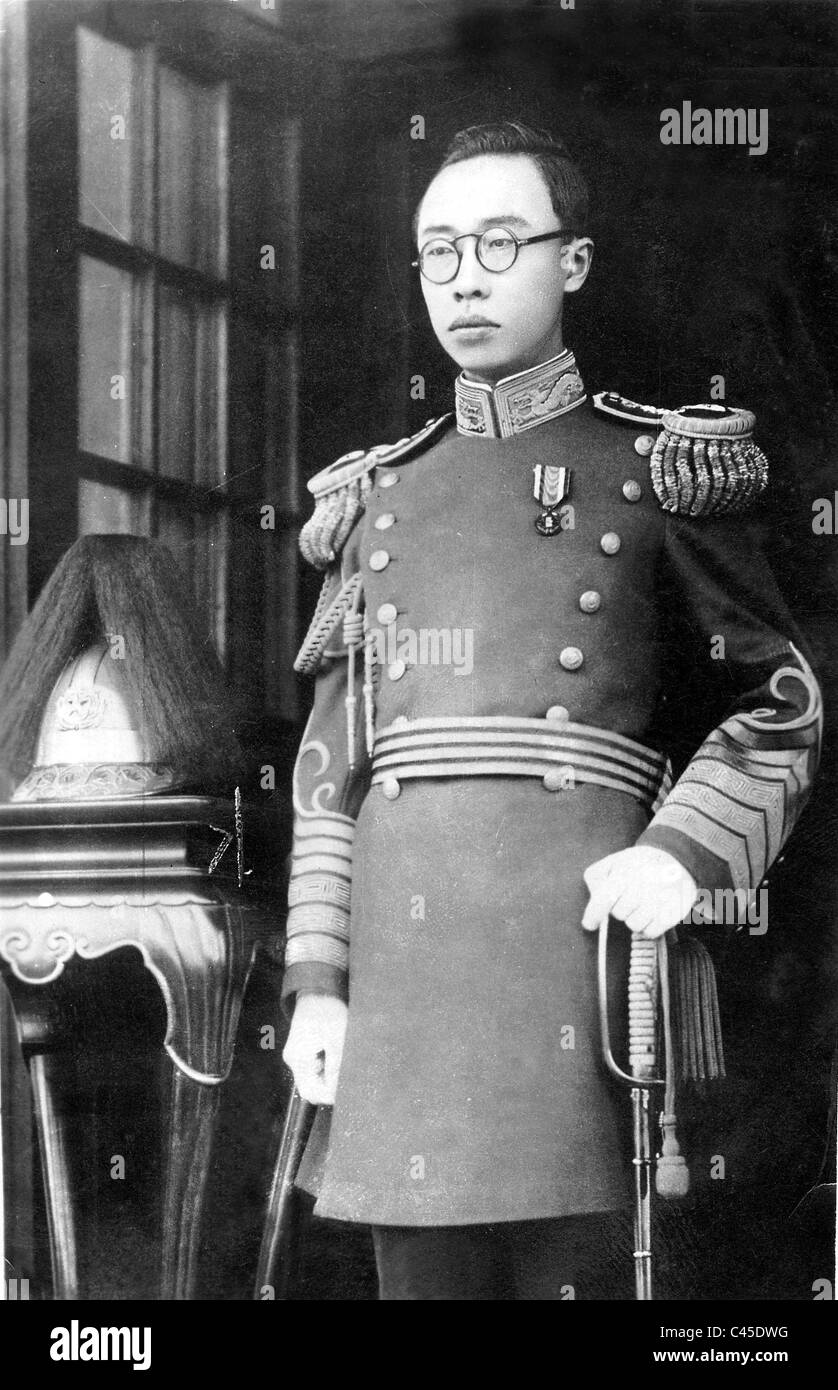 Emperor Puyi in Beijing, 1932 Stock Photohttps://www.alamy.com/image-license-details/?v=1https://www.alamy.com/stock-photo-emperor-puyi-in-beijing-1932-37000028.html
Emperor Puyi in Beijing, 1932 Stock Photohttps://www.alamy.com/image-license-details/?v=1https://www.alamy.com/stock-photo-emperor-puyi-in-beijing-1932-37000028.htmlRMC45DWG–Emperor Puyi in Beijing, 1932
 This is the entrance gate of the Imperial Nijo detached Palace of Tokyo where is the Imperial quarters of H.I.M. the Emperor Kwangte of Manchukuo in his sojourn in Kyoto, The Nijo detached Palace had been formerly the Imperial palace since 16th till the restoration of Meiji period. Now the Palace has been specially reserved as national treasury as the most typical wooden building of the imperial Palace building in Japan. March 06, 1935. (Photo by The Shimbun Rengo News Photos Service). Stock Photohttps://www.alamy.com/image-license-details/?v=1https://www.alamy.com/this-is-the-entrance-gate-of-the-imperial-nijo-detached-palace-of-tokyo-where-is-the-imperial-quarters-of-him-the-emperor-kwangte-of-manchukuo-in-his-sojourn-in-kyoto-the-nijo-detached-palace-had-been-formerly-the-imperial-palace-since-16th-till-the-restoration-of-meiji-period-now-the-palace-has-been-specially-reserved-as-national-treasury-as-the-most-typical-wooden-building-of-the-imperial-palace-building-in-japan-march-06-1935-photo-by-the-shimbun-rengo-news-photos-service-image467218829.html
This is the entrance gate of the Imperial Nijo detached Palace of Tokyo where is the Imperial quarters of H.I.M. the Emperor Kwangte of Manchukuo in his sojourn in Kyoto, The Nijo detached Palace had been formerly the Imperial palace since 16th till the restoration of Meiji period. Now the Palace has been specially reserved as national treasury as the most typical wooden building of the imperial Palace building in Japan. March 06, 1935. (Photo by The Shimbun Rengo News Photos Service). Stock Photohttps://www.alamy.com/image-license-details/?v=1https://www.alamy.com/this-is-the-entrance-gate-of-the-imperial-nijo-detached-palace-of-tokyo-where-is-the-imperial-quarters-of-him-the-emperor-kwangte-of-manchukuo-in-his-sojourn-in-kyoto-the-nijo-detached-palace-had-been-formerly-the-imperial-palace-since-16th-till-the-restoration-of-meiji-period-now-the-palace-has-been-specially-reserved-as-national-treasury-as-the-most-typical-wooden-building-of-the-imperial-palace-building-in-japan-march-06-1935-photo-by-the-shimbun-rengo-news-photos-service-image467218829.htmlRM2J43JAN–This is the entrance gate of the Imperial Nijo detached Palace of Tokyo where is the Imperial quarters of H.I.M. the Emperor Kwangte of Manchukuo in his sojourn in Kyoto, The Nijo detached Palace had been formerly the Imperial palace since 16th till the restoration of Meiji period. Now the Palace has been specially reserved as national treasury as the most typical wooden building of the imperial Palace building in Japan. March 06, 1935. (Photo by The Shimbun Rengo News Photos Service).
![The Japanese Emperor Hirohito receives the Emperor of Manchukuo Puyi at the Tokyo railroad station. It is their first meeting. [automated translation] Stock Photo The Japanese Emperor Hirohito receives the Emperor of Manchukuo Puyi at the Tokyo railroad station. It is their first meeting. [automated translation] Stock Photo](https://c8.alamy.com/comp/2T697R6/the-japanese-emperor-hirohito-receives-the-emperor-of-manchukuo-puyi-at-the-tokyo-railroad-station-it-is-their-first-meeting-automated-translation-2T697R6.jpg) The Japanese Emperor Hirohito receives the Emperor of Manchukuo Puyi at the Tokyo railroad station. It is their first meeting. [automated translation] Stock Photohttps://www.alamy.com/image-license-details/?v=1https://www.alamy.com/the-japanese-emperor-hirohito-receives-the-emperor-of-manchukuo-puyi-at-the-tokyo-railroad-station-it-is-their-first-meeting-automated-translation-image571833786.html
The Japanese Emperor Hirohito receives the Emperor of Manchukuo Puyi at the Tokyo railroad station. It is their first meeting. [automated translation] Stock Photohttps://www.alamy.com/image-license-details/?v=1https://www.alamy.com/the-japanese-emperor-hirohito-receives-the-emperor-of-manchukuo-puyi-at-the-tokyo-railroad-station-it-is-their-first-meeting-automated-translation-image571833786.htmlRM2T697R6–The Japanese Emperor Hirohito receives the Emperor of Manchukuo Puyi at the Tokyo railroad station. It is their first meeting. [automated translation]
 The Future Empress of Manchukuo. A portrait or the Future impose of Manchukuo. March 26, 1934. Stock Photohttps://www.alamy.com/image-license-details/?v=1https://www.alamy.com/the-future-empress-of-manchukuo-a-portrait-or-the-future-impose-of-manchukuo-march-26-1934-image463551567.html
The Future Empress of Manchukuo. A portrait or the Future impose of Manchukuo. March 26, 1934. Stock Photohttps://www.alamy.com/image-license-details/?v=1https://www.alamy.com/the-future-empress-of-manchukuo-a-portrait-or-the-future-impose-of-manchukuo-march-26-1934-image463551567.htmlRM2HX4GN3–The Future Empress of Manchukuo. A portrait or the Future impose of Manchukuo. March 26, 1934.
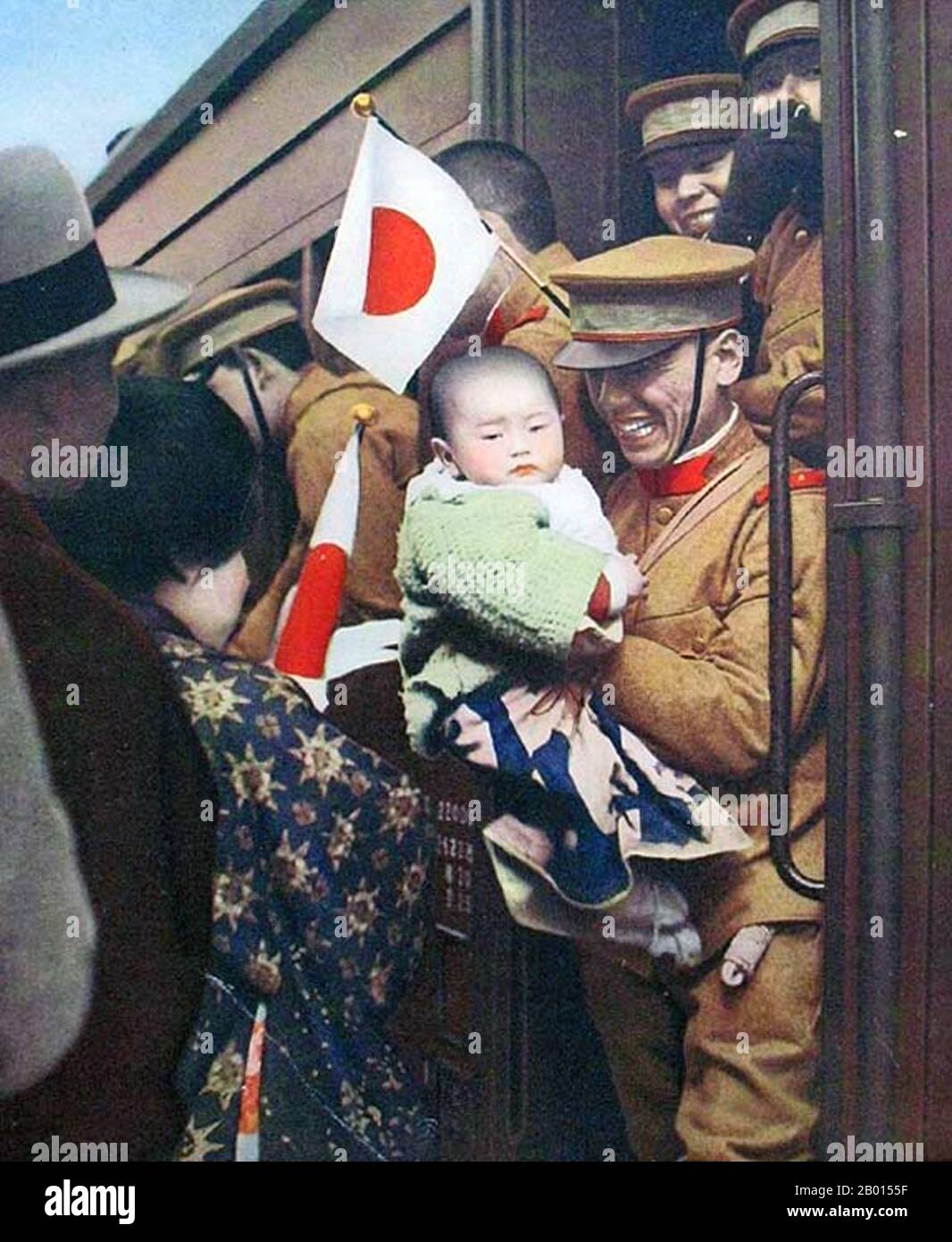 China: A Japanese soldier says goodbye to a young child before boarding a troop train in Manchuria, 1933. The Second Sino-Japanese War is usually dated from 1937 to Japan's final defeat in 1945, but in fact Japan and China had been in a state of undeclared war from the time of the Mukden Incident in 1931 when Japan seized Manchuria and set up the puppet state of Manchukuo. The Japanese installed the former Qing Emperor Puyi as Head of State in 1932, and two years later he was declared Emperor of Manchukuo with the era name of Kangde ('Tranquility and Virtue'). Stock Photohttps://www.alamy.com/image-license-details/?v=1https://www.alamy.com/china-a-japanese-soldier-says-goodbye-to-a-young-child-before-boarding-a-troop-train-in-manchuria-1933-the-second-sino-japanese-war-is-usually-dated-from-1937-to-japans-final-defeat-in-1945-but-in-fact-japan-and-china-had-been-in-a-state-of-undeclared-war-from-the-time-of-the-mukden-incident-in-1931-when-japan-seized-manchuria-and-set-up-the-puppet-state-of-manchukuo-the-japanese-installed-the-former-qing-emperor-puyi-as-head-of-state-in-1932-and-two-years-later-he-was-declared-emperor-of-manchukuo-with-the-era-name-of-kangde-tranquility-and-virtue-image344233387.html
China: A Japanese soldier says goodbye to a young child before boarding a troop train in Manchuria, 1933. The Second Sino-Japanese War is usually dated from 1937 to Japan's final defeat in 1945, but in fact Japan and China had been in a state of undeclared war from the time of the Mukden Incident in 1931 when Japan seized Manchuria and set up the puppet state of Manchukuo. The Japanese installed the former Qing Emperor Puyi as Head of State in 1932, and two years later he was declared Emperor of Manchukuo with the era name of Kangde ('Tranquility and Virtue'). Stock Photohttps://www.alamy.com/image-license-details/?v=1https://www.alamy.com/china-a-japanese-soldier-says-goodbye-to-a-young-child-before-boarding-a-troop-train-in-manchuria-1933-the-second-sino-japanese-war-is-usually-dated-from-1937-to-japans-final-defeat-in-1945-but-in-fact-japan-and-china-had-been-in-a-state-of-undeclared-war-from-the-time-of-the-mukden-incident-in-1931-when-japan-seized-manchuria-and-set-up-the-puppet-state-of-manchukuo-the-japanese-installed-the-former-qing-emperor-puyi-as-head-of-state-in-1932-and-two-years-later-he-was-declared-emperor-of-manchukuo-with-the-era-name-of-kangde-tranquility-and-virtue-image344233387.htmlRM2B0155F–China: A Japanese soldier says goodbye to a young child before boarding a troop train in Manchuria, 1933. The Second Sino-Japanese War is usually dated from 1937 to Japan's final defeat in 1945, but in fact Japan and China had been in a state of undeclared war from the time of the Mukden Incident in 1931 when Japan seized Manchuria and set up the puppet state of Manchukuo. The Japanese installed the former Qing Emperor Puyi as Head of State in 1932, and two years later he was declared Emperor of Manchukuo with the era name of Kangde ('Tranquility and Virtue').
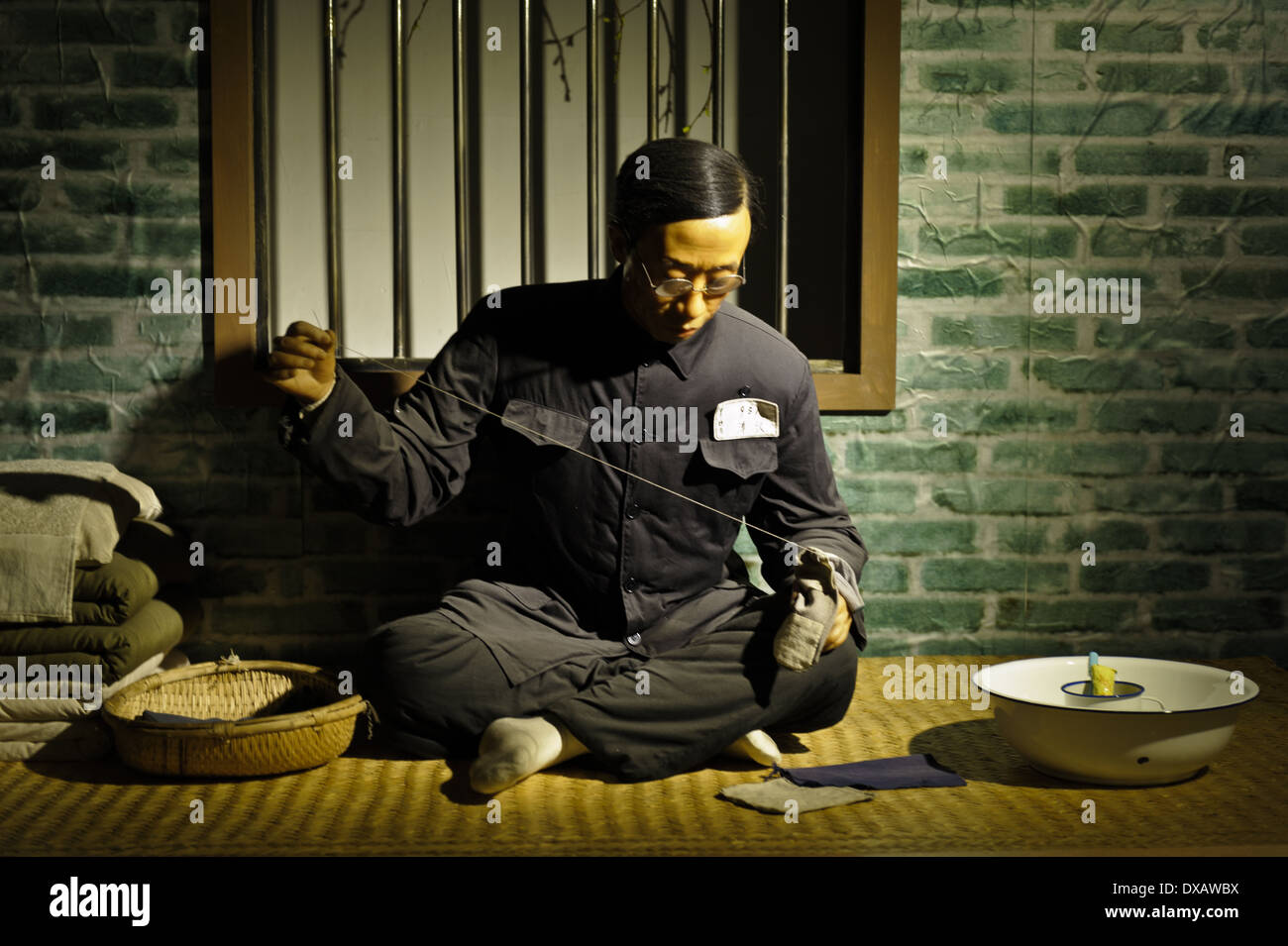 The Last Qing Emperor Puyi as prisoner. Shown in Puppet Emperor's Palace & Exhibition Hall . Changchun.Jilin Province, China Stock Photohttps://www.alamy.com/image-license-details/?v=1https://www.alamy.com/the-last-qing-emperor-puyi-as-prisoner-shown-in-puppet-emperors-palace-image67851614.html
The Last Qing Emperor Puyi as prisoner. Shown in Puppet Emperor's Palace & Exhibition Hall . Changchun.Jilin Province, China Stock Photohttps://www.alamy.com/image-license-details/?v=1https://www.alamy.com/the-last-qing-emperor-puyi-as-prisoner-shown-in-puppet-emperors-palace-image67851614.htmlRMDXAWBX–The Last Qing Emperor Puyi as prisoner. Shown in Puppet Emperor's Palace & Exhibition Hall . Changchun.Jilin Province, China
 The envoy of the Manchukuo empire, Lue-I-Wen (left next to his wife standing) is welcomed by the President of the Reich Radio Chamber Hans Kriegler (shaking his hand) at the party of the Reichsrundfunk. Stock Photohttps://www.alamy.com/image-license-details/?v=1https://www.alamy.com/the-envoy-of-the-manchukuo-empire-lue-i-wen-left-next-to-his-wife-standing-is-welcomed-by-the-president-of-the-reich-radio-chamber-hans-kriegler-shaking-his-hand-at-the-party-of-the-reichsrundfunk-image247117889.html
The envoy of the Manchukuo empire, Lue-I-Wen (left next to his wife standing) is welcomed by the President of the Reich Radio Chamber Hans Kriegler (shaking his hand) at the party of the Reichsrundfunk. Stock Photohttps://www.alamy.com/image-license-details/?v=1https://www.alamy.com/the-envoy-of-the-manchukuo-empire-lue-i-wen-left-next-to-his-wife-standing-is-welcomed-by-the-president-of-the-reich-radio-chamber-hans-kriegler-shaking-his-hand-at-the-party-of-the-reichsrundfunk-image247117889.htmlRMTA15AW–The envoy of the Manchukuo empire, Lue-I-Wen (left next to his wife standing) is welcomed by the President of the Reich Radio Chamber Hans Kriegler (shaking his hand) at the party of the Reichsrundfunk.
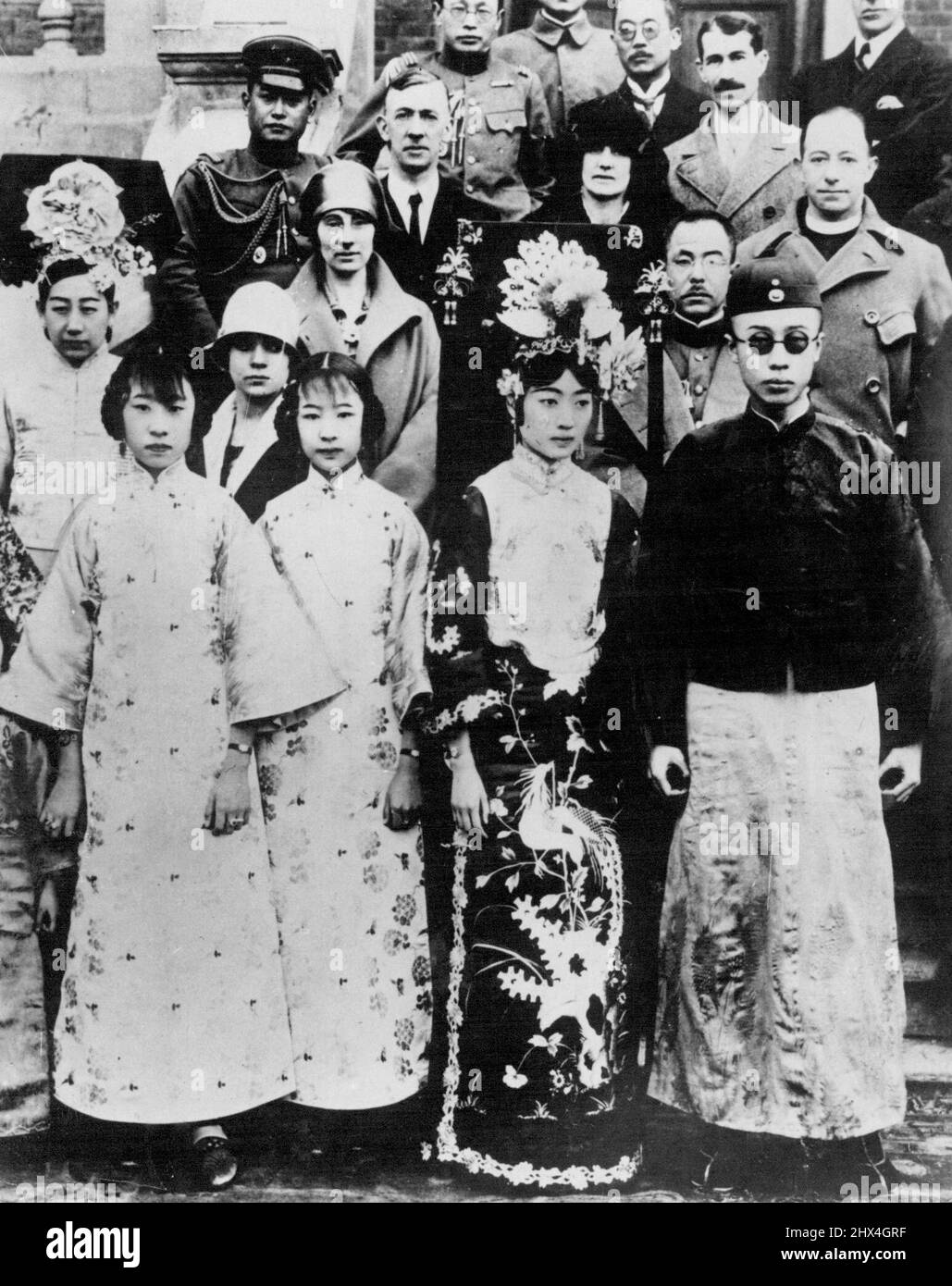 Enthronement of the Emperor of Manchukio.Mr Pu Yi, the former 'Boy Emperor' of China was yesterday enthroned as emperor of Manchukio at hainking, the capital of Manchukio.Previous to this he observed the four days fast in this fast Pu Yi observed the Chew dynasty ritual for purification before invoking heaven and petitioning for an Imperial mandate. For these four days he was not permitted to see the Empress or any female relatives.Part of the coronation ceremonies took place in a sacred temple enclosure. Here, in the presence of only six people, he mounted three tiers of earth and turned to t Stock Photohttps://www.alamy.com/image-license-details/?v=1https://www.alamy.com/enthronement-of-the-emperor-of-manchukiomr-pu-yi-the-former-boy-emperor-of-china-was-yesterday-enthroned-as-emperor-of-manchukio-at-hainking-the-capital-of-manchukioprevious-to-this-he-observed-the-four-days-fast-in-this-fast-pu-yi-observed-the-chew-dynasty-ritual-for-purification-before-invoking-heaven-and-petitioning-for-an-imperial-mandate-for-these-four-days-he-was-not-permitted-to-see-the-empress-or-any-female-relativespart-of-the-coronation-ceremonies-took-place-in-a-sacred-temple-enclosure-here-in-the-presence-of-only-six-people-he-mounted-three-tiers-of-earth-and-turned-to-t-image463551635.html
Enthronement of the Emperor of Manchukio.Mr Pu Yi, the former 'Boy Emperor' of China was yesterday enthroned as emperor of Manchukio at hainking, the capital of Manchukio.Previous to this he observed the four days fast in this fast Pu Yi observed the Chew dynasty ritual for purification before invoking heaven and petitioning for an Imperial mandate. For these four days he was not permitted to see the Empress or any female relatives.Part of the coronation ceremonies took place in a sacred temple enclosure. Here, in the presence of only six people, he mounted three tiers of earth and turned to t Stock Photohttps://www.alamy.com/image-license-details/?v=1https://www.alamy.com/enthronement-of-the-emperor-of-manchukiomr-pu-yi-the-former-boy-emperor-of-china-was-yesterday-enthroned-as-emperor-of-manchukio-at-hainking-the-capital-of-manchukioprevious-to-this-he-observed-the-four-days-fast-in-this-fast-pu-yi-observed-the-chew-dynasty-ritual-for-purification-before-invoking-heaven-and-petitioning-for-an-imperial-mandate-for-these-four-days-he-was-not-permitted-to-see-the-empress-or-any-female-relativespart-of-the-coronation-ceremonies-took-place-in-a-sacred-temple-enclosure-here-in-the-presence-of-only-six-people-he-mounted-three-tiers-of-earth-and-turned-to-t-image463551635.htmlRM2HX4GRF–Enthronement of the Emperor of Manchukio.Mr Pu Yi, the former 'Boy Emperor' of China was yesterday enthroned as emperor of Manchukio at hainking, the capital of Manchukio.Previous to this he observed the four days fast in this fast Pu Yi observed the Chew dynasty ritual for purification before invoking heaven and petitioning for an Imperial mandate. For these four days he was not permitted to see the Empress or any female relatives.Part of the coronation ceremonies took place in a sacred temple enclosure. Here, in the presence of only six people, he mounted three tiers of earth and turned to t
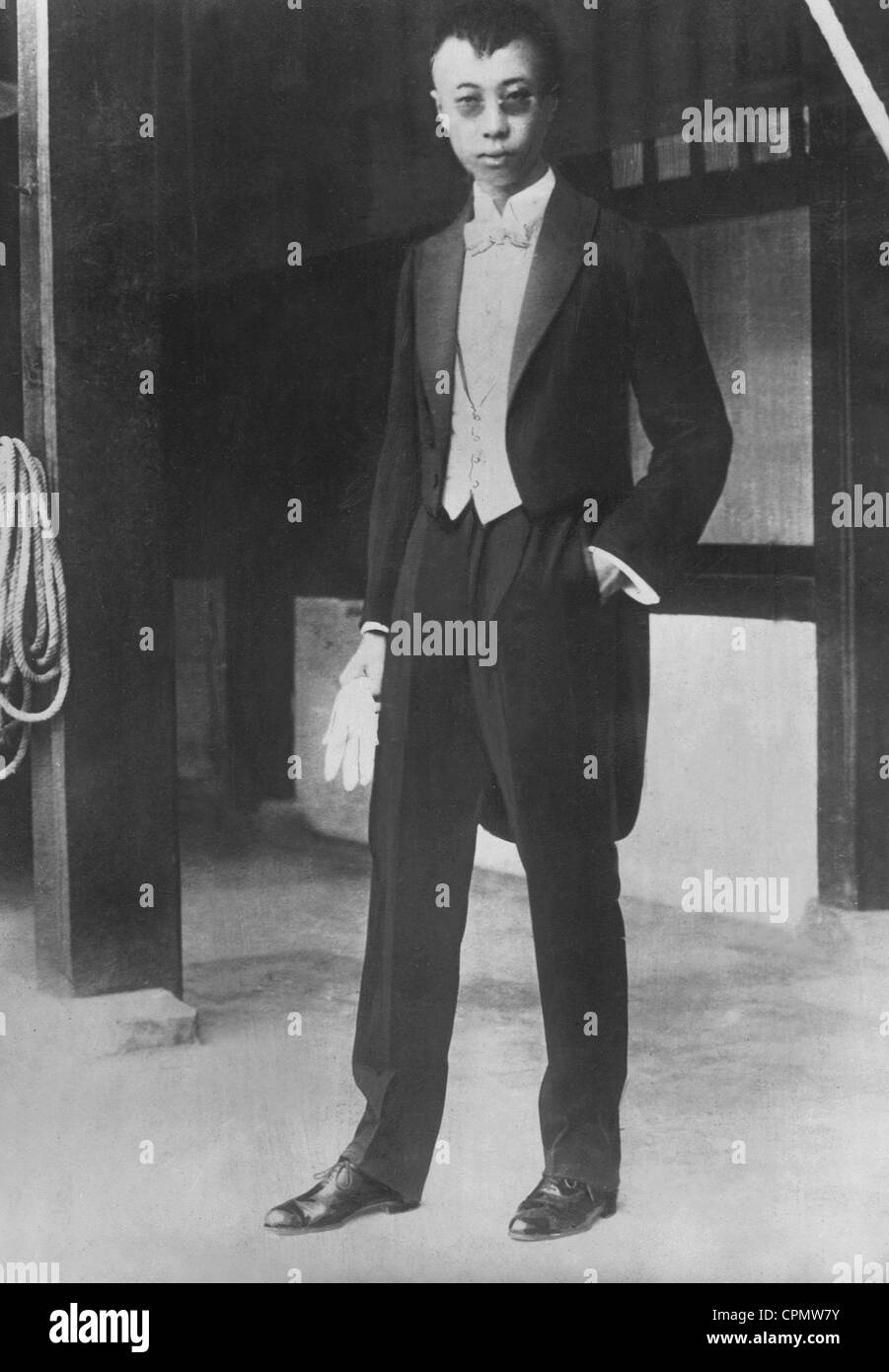 Pu-Yi, 1928 Stock Photohttps://www.alamy.com/image-license-details/?v=1https://www.alamy.com/stock-photo-pu-yi-1928-48402031.html
Pu-Yi, 1928 Stock Photohttps://www.alamy.com/image-license-details/?v=1https://www.alamy.com/stock-photo-pu-yi-1928-48402031.htmlRMCPMW7Y–Pu-Yi, 1928
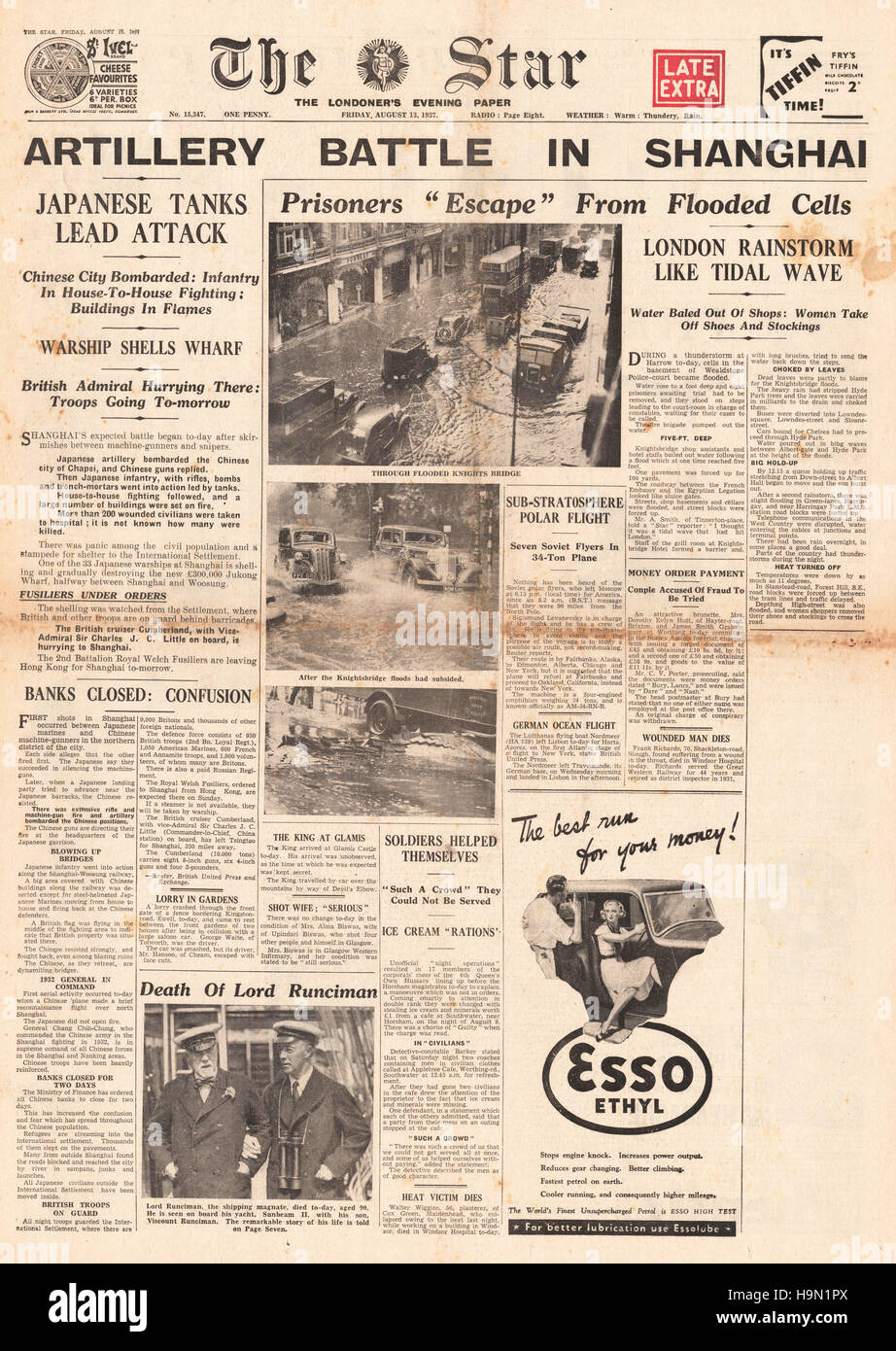 1937 The Star (London) front page Battle for Shanghai Stock Photohttps://www.alamy.com/image-license-details/?v=1https://www.alamy.com/stock-photo-1937-the-star-london-front-page-battle-for-shanghai-126466898.html
1937 The Star (London) front page Battle for Shanghai Stock Photohttps://www.alamy.com/image-license-details/?v=1https://www.alamy.com/stock-photo-1937-the-star-london-front-page-battle-for-shanghai-126466898.htmlRMH9N1PX–1937 The Star (London) front page Battle for Shanghai
 Delegation of the League with Henry Puyi, 1932 Stock Photohttps://www.alamy.com/image-license-details/?v=1https://www.alamy.com/stock-photo-delegation-of-the-league-with-henry-puyi-1932-48398160.html
Delegation of the League with Henry Puyi, 1932 Stock Photohttps://www.alamy.com/image-license-details/?v=1https://www.alamy.com/stock-photo-delegation-of-the-league-with-henry-puyi-1932-48398160.htmlRMCPMM9M–Delegation of the League with Henry Puyi, 1932
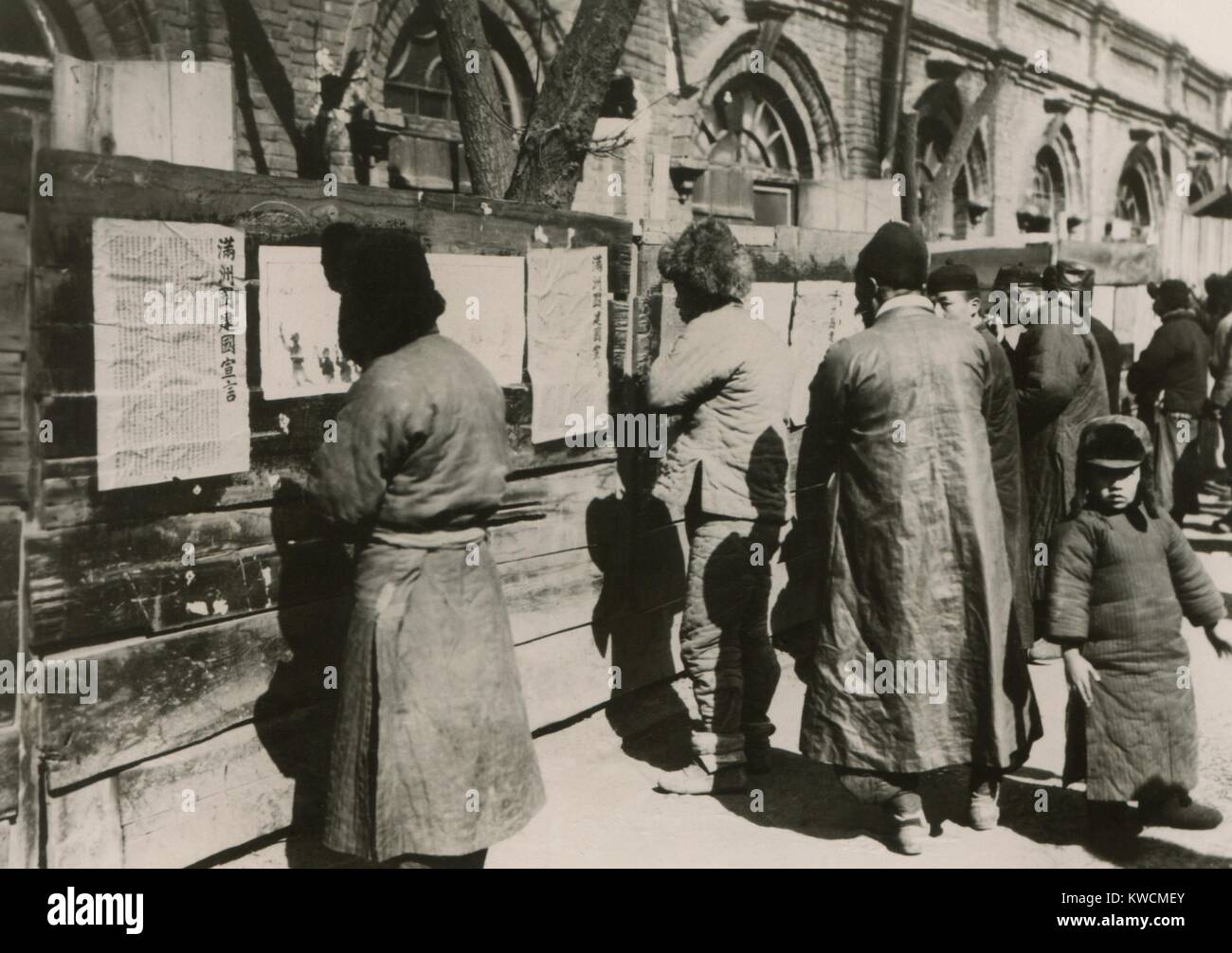 Chinese residents of Manchuria read Japanese announcements. They report establishment of the Republic of Manchukuo with Mr. Henry Pu-Yi, as its chief executive. Japan essentially annexed Manchuria and installed the former child Emperor as its puppet ruler. 1934. - (BSLOC 2014 15 157) Stock Photohttps://www.alamy.com/image-license-details/?v=1https://www.alamy.com/stock-photo-chinese-residents-of-manchuria-read-japanese-announcements-they-report-170539235.html
Chinese residents of Manchuria read Japanese announcements. They report establishment of the Republic of Manchukuo with Mr. Henry Pu-Yi, as its chief executive. Japan essentially annexed Manchuria and installed the former child Emperor as its puppet ruler. 1934. - (BSLOC 2014 15 157) Stock Photohttps://www.alamy.com/image-license-details/?v=1https://www.alamy.com/stock-photo-chinese-residents-of-manchuria-read-japanese-announcements-they-report-170539235.htmlRMKWCMEY–Chinese residents of Manchuria read Japanese announcements. They report establishment of the Republic of Manchukuo with Mr. Henry Pu-Yi, as its chief executive. Japan essentially annexed Manchuria and installed the former child Emperor as its puppet ruler. 1934. - (BSLOC 2014 15 157)
 Emperor Pu-Yi of Manchukuo with his Japanese 'clients', all in dress uniform. Possibly at the formal recognition of Pu-Yi as Stock Photohttps://www.alamy.com/image-license-details/?v=1https://www.alamy.com/emperor-pu-yi-of-manchukuo-with-his-japanese-clients-all-in-dress-image69739614.html
Emperor Pu-Yi of Manchukuo with his Japanese 'clients', all in dress uniform. Possibly at the formal recognition of Pu-Yi as Stock Photohttps://www.alamy.com/image-license-details/?v=1https://www.alamy.com/emperor-pu-yi-of-manchukuo-with-his-japanese-clients-all-in-dress-image69739614.htmlRME1CWGE–Emperor Pu-Yi of Manchukuo with his Japanese 'clients', all in dress uniform. Possibly at the formal recognition of Pu-Yi as
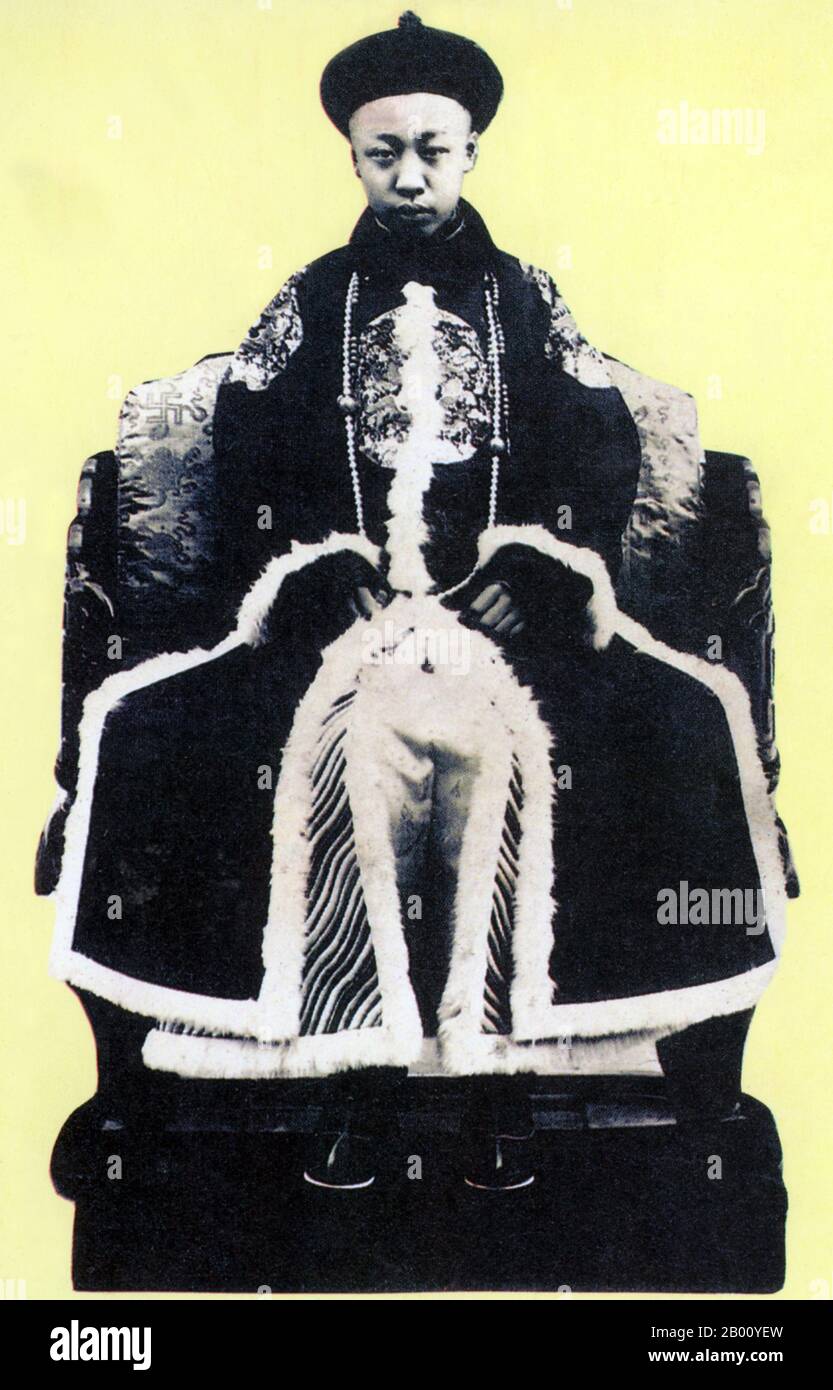 China: Emperor Puyi (1906-1967), the last emperor of China, early 20th century. Aisin-Gioro Pu Yi (7 February 1906 – 17 October 1967), of the Manchu Aisin Gioro ruling family, was the last Emperor of China. He ruled in two periods between 1908 and 1917, firstly as the Xuantong Emperor from 1908 to 1912, and nominally as a non-ruling puppet emperor for twelve days in 1917. He was the twelfth and final member of the Qing Dynasty to rule over China proper. Stock Photohttps://www.alamy.com/image-license-details/?v=1https://www.alamy.com/china-emperor-puyi-1906-1967-the-last-emperor-of-china-early-20th-century-aisin-gioro-pu-yi-7-february-1906-17-october-1967-of-the-manchu-aisin-gioro-ruling-family-was-the-last-emperor-of-china-he-ruled-in-two-periods-between-1908-and-1917-firstly-as-the-xuantong-emperor-from-1908-to-1912-and-nominally-as-a-non-ruling-puppet-emperor-for-twelve-days-in-1917-he-was-the-twelfth-and-final-member-of-the-qing-dynasty-to-rule-over-china-proper-image344228945.html
China: Emperor Puyi (1906-1967), the last emperor of China, early 20th century. Aisin-Gioro Pu Yi (7 February 1906 – 17 October 1967), of the Manchu Aisin Gioro ruling family, was the last Emperor of China. He ruled in two periods between 1908 and 1917, firstly as the Xuantong Emperor from 1908 to 1912, and nominally as a non-ruling puppet emperor for twelve days in 1917. He was the twelfth and final member of the Qing Dynasty to rule over China proper. Stock Photohttps://www.alamy.com/image-license-details/?v=1https://www.alamy.com/china-emperor-puyi-1906-1967-the-last-emperor-of-china-early-20th-century-aisin-gioro-pu-yi-7-february-1906-17-october-1967-of-the-manchu-aisin-gioro-ruling-family-was-the-last-emperor-of-china-he-ruled-in-two-periods-between-1908-and-1917-firstly-as-the-xuantong-emperor-from-1908-to-1912-and-nominally-as-a-non-ruling-puppet-emperor-for-twelve-days-in-1917-he-was-the-twelfth-and-final-member-of-the-qing-dynasty-to-rule-over-china-proper-image344228945.htmlRM2B00YEW–China: Emperor Puyi (1906-1967), the last emperor of China, early 20th century. Aisin-Gioro Pu Yi (7 February 1906 – 17 October 1967), of the Manchu Aisin Gioro ruling family, was the last Emperor of China. He ruled in two periods between 1908 and 1917, firstly as the Xuantong Emperor from 1908 to 1912, and nominally as a non-ruling puppet emperor for twelve days in 1917. He was the twelfth and final member of the Qing Dynasty to rule over China proper.
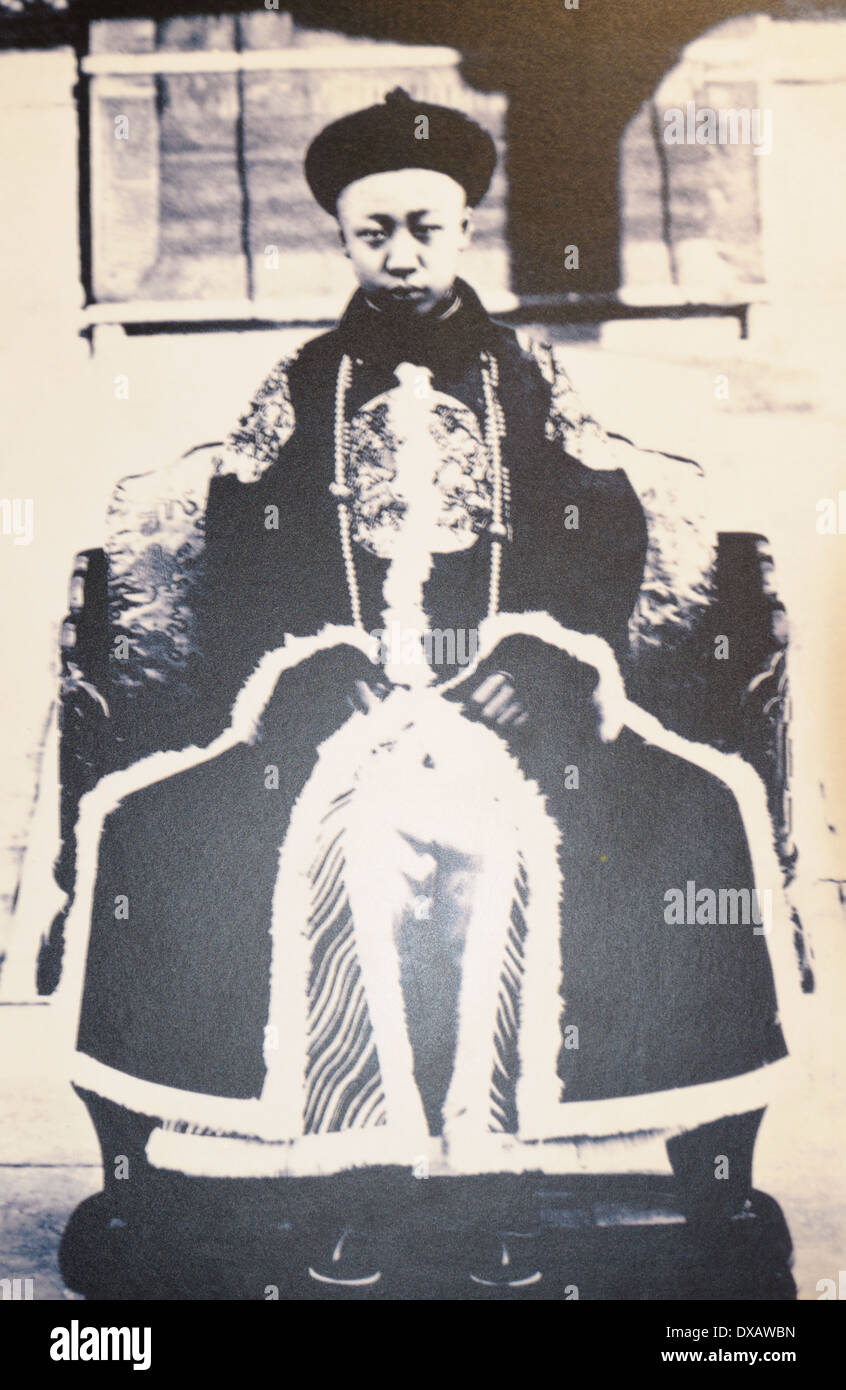 Photo of the Last Qing Emperor Puyi ias a youngster. Puppet Emperor's Palace & Exhibition Hall . Changchun.Jilin Province, China Stock Photohttps://www.alamy.com/image-license-details/?v=1https://www.alamy.com/photo-of-the-last-qing-emperor-puyi-ias-a-youngster-puppet-emperors-image67851609.html
Photo of the Last Qing Emperor Puyi ias a youngster. Puppet Emperor's Palace & Exhibition Hall . Changchun.Jilin Province, China Stock Photohttps://www.alamy.com/image-license-details/?v=1https://www.alamy.com/photo-of-the-last-qing-emperor-puyi-ias-a-youngster-puppet-emperors-image67851609.htmlRMDXAWBN–Photo of the Last Qing Emperor Puyi ias a youngster. Puppet Emperor's Palace & Exhibition Hall . Changchun.Jilin Province, China
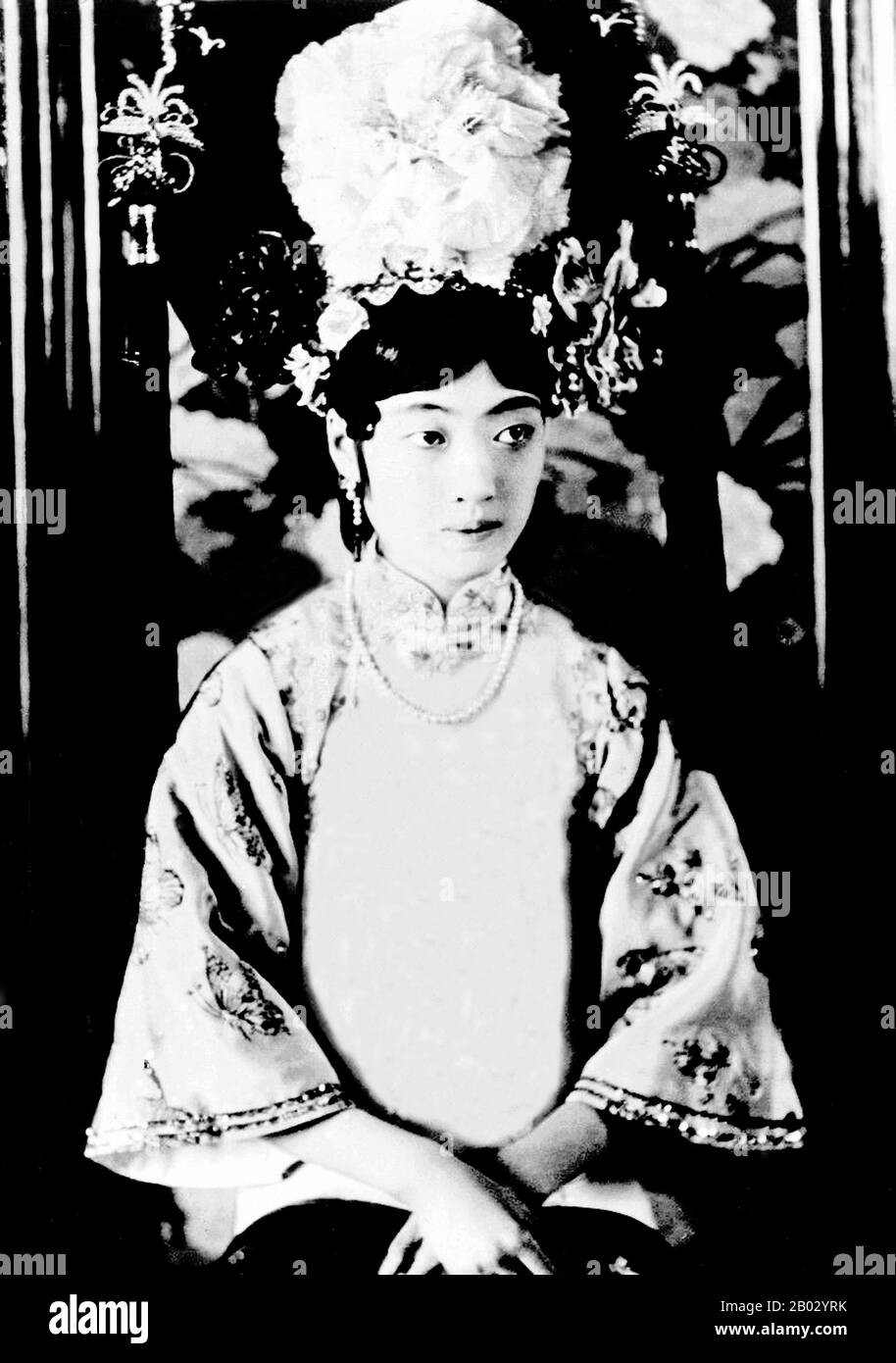 Gobulo Wan Rong ('Beautiful Countenance') was the daughter of Rong Yuan, the Minister of Domestic Affairs of the Qing Government and head of one of Manchuria's most prominent, richest families. At the age of 17, Wan Rong was selected from a series of photographs presented to the Xuan Tong Emperor (Puyi). The wedding took place when Puyi reached the age of 16. Wan Rong was the last Empress Consort of the Qing Dynasty in China, and later Empress of Manchukuo (also known as the Manchurian Empire). Empress Wan Rong died of malnutrition and opium addiction in prison in Jilin. Stock Photohttps://www.alamy.com/image-license-details/?v=1https://www.alamy.com/gobulo-wan-rong-beautiful-countenance-was-the-daughter-of-rong-yuan-the-minister-of-domestic-affairs-of-the-qing-government-and-head-of-one-of-manchurias-most-prominent-richest-families-at-the-age-of-17-wan-rong-was-selected-from-a-series-of-photographs-presented-to-the-xuan-tong-emperor-puyi-the-wedding-took-place-when-puyi-reached-the-age-of-16-wan-rong-was-the-last-empress-consort-of-the-qing-dynasty-in-china-and-later-empress-of-manchukuo-also-known-as-the-manchurian-empire-empress-wan-rong-died-of-malnutrition-and-opium-addiction-in-prison-in-jilin-image344273095.html
Gobulo Wan Rong ('Beautiful Countenance') was the daughter of Rong Yuan, the Minister of Domestic Affairs of the Qing Government and head of one of Manchuria's most prominent, richest families. At the age of 17, Wan Rong was selected from a series of photographs presented to the Xuan Tong Emperor (Puyi). The wedding took place when Puyi reached the age of 16. Wan Rong was the last Empress Consort of the Qing Dynasty in China, and later Empress of Manchukuo (also known as the Manchurian Empire). Empress Wan Rong died of malnutrition and opium addiction in prison in Jilin. Stock Photohttps://www.alamy.com/image-license-details/?v=1https://www.alamy.com/gobulo-wan-rong-beautiful-countenance-was-the-daughter-of-rong-yuan-the-minister-of-domestic-affairs-of-the-qing-government-and-head-of-one-of-manchurias-most-prominent-richest-families-at-the-age-of-17-wan-rong-was-selected-from-a-series-of-photographs-presented-to-the-xuan-tong-emperor-puyi-the-wedding-took-place-when-puyi-reached-the-age-of-16-wan-rong-was-the-last-empress-consort-of-the-qing-dynasty-in-china-and-later-empress-of-manchukuo-also-known-as-the-manchurian-empire-empress-wan-rong-died-of-malnutrition-and-opium-addiction-in-prison-in-jilin-image344273095.htmlRM2B02YRK–Gobulo Wan Rong ('Beautiful Countenance') was the daughter of Rong Yuan, the Minister of Domestic Affairs of the Qing Government and head of one of Manchuria's most prominent, richest families. At the age of 17, Wan Rong was selected from a series of photographs presented to the Xuan Tong Emperor (Puyi). The wedding took place when Puyi reached the age of 16. Wan Rong was the last Empress Consort of the Qing Dynasty in China, and later Empress of Manchukuo (also known as the Manchurian Empire). Empress Wan Rong died of malnutrition and opium addiction in prison in Jilin.
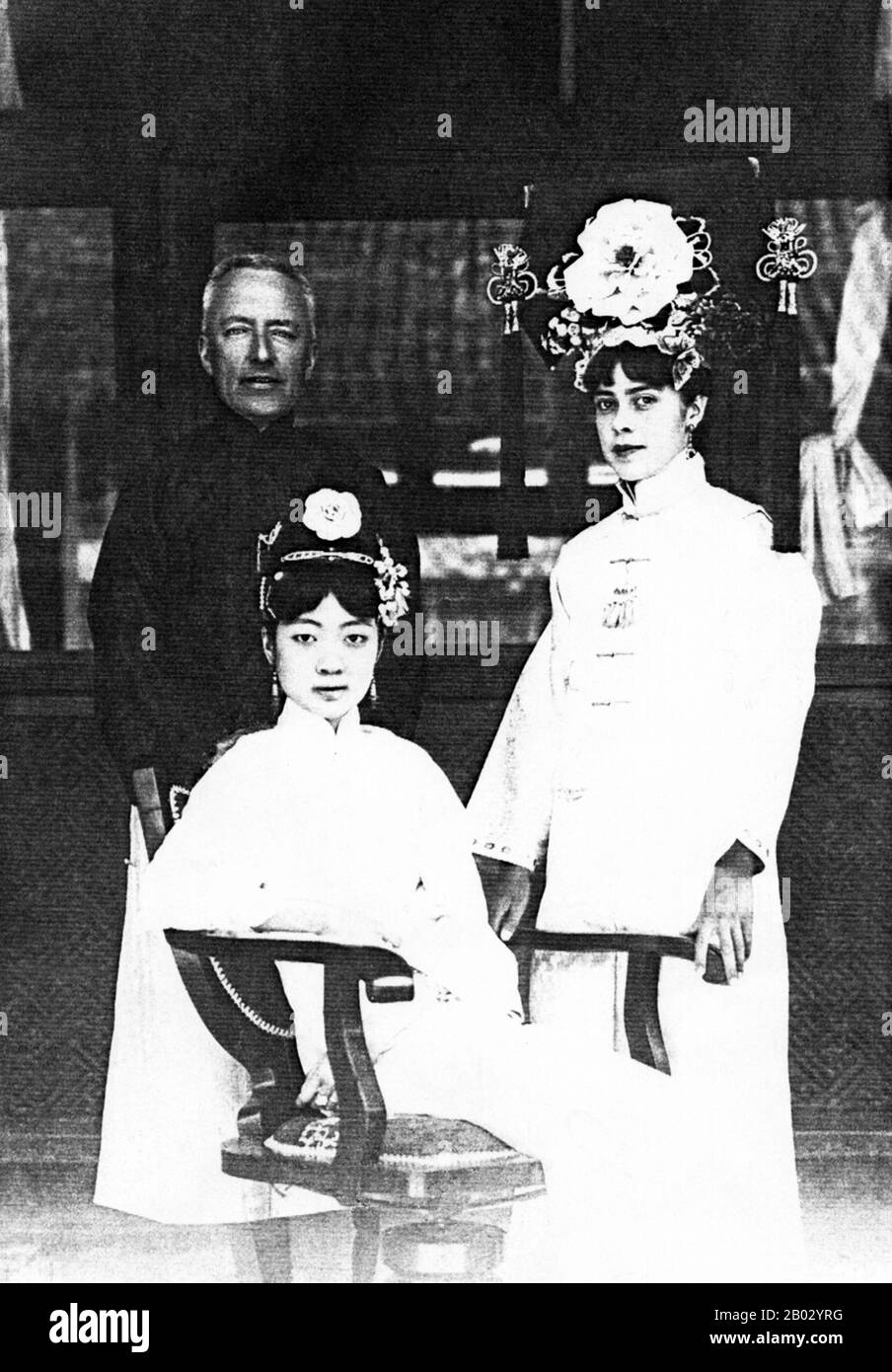 Gobulo Wan Rong ('Beautiful Countenance') was the daughter of Rong Yuan, the Minister of Domestic Affairs of the Qing Government and head of one of Manchuria's most prominent, richest families. At the age of 17, Wan Rong was selected from a series of photographs presented to the Xuan Tong Emperor (Puyi). The wedding took place when Puyi reached the age of 16. Wan Rong was the last Empress Consort of the Qing Dynasty in China, and later Empress of Manchukuo (also known as the Manchurian Empire). Empress Wan Rong died of malnutrition and opium addiction in prison in Jilin. Sir Reginald Fleming Stock Photohttps://www.alamy.com/image-license-details/?v=1https://www.alamy.com/gobulo-wan-rong-beautiful-countenance-was-the-daughter-of-rong-yuan-the-minister-of-domestic-affairs-of-the-qing-government-and-head-of-one-of-manchurias-most-prominent-richest-families-at-the-age-of-17-wan-rong-was-selected-from-a-series-of-photographs-presented-to-the-xuan-tong-emperor-puyi-the-wedding-took-place-when-puyi-reached-the-age-of-16-wan-rong-was-the-last-empress-consort-of-the-qing-dynasty-in-china-and-later-empress-of-manchukuo-also-known-as-the-manchurian-empire-empress-wan-rong-died-of-malnutrition-and-opium-addiction-in-prison-in-jilin-sir-reginald-fleming-image344273092.html
Gobulo Wan Rong ('Beautiful Countenance') was the daughter of Rong Yuan, the Minister of Domestic Affairs of the Qing Government and head of one of Manchuria's most prominent, richest families. At the age of 17, Wan Rong was selected from a series of photographs presented to the Xuan Tong Emperor (Puyi). The wedding took place when Puyi reached the age of 16. Wan Rong was the last Empress Consort of the Qing Dynasty in China, and later Empress of Manchukuo (also known as the Manchurian Empire). Empress Wan Rong died of malnutrition and opium addiction in prison in Jilin. Sir Reginald Fleming Stock Photohttps://www.alamy.com/image-license-details/?v=1https://www.alamy.com/gobulo-wan-rong-beautiful-countenance-was-the-daughter-of-rong-yuan-the-minister-of-domestic-affairs-of-the-qing-government-and-head-of-one-of-manchurias-most-prominent-richest-families-at-the-age-of-17-wan-rong-was-selected-from-a-series-of-photographs-presented-to-the-xuan-tong-emperor-puyi-the-wedding-took-place-when-puyi-reached-the-age-of-16-wan-rong-was-the-last-empress-consort-of-the-qing-dynasty-in-china-and-later-empress-of-manchukuo-also-known-as-the-manchurian-empire-empress-wan-rong-died-of-malnutrition-and-opium-addiction-in-prison-in-jilin-sir-reginald-fleming-image344273092.htmlRM2B02YRG–Gobulo Wan Rong ('Beautiful Countenance') was the daughter of Rong Yuan, the Minister of Domestic Affairs of the Qing Government and head of one of Manchuria's most prominent, richest families. At the age of 17, Wan Rong was selected from a series of photographs presented to the Xuan Tong Emperor (Puyi). The wedding took place when Puyi reached the age of 16. Wan Rong was the last Empress Consort of the Qing Dynasty in China, and later Empress of Manchukuo (also known as the Manchurian Empire). Empress Wan Rong died of malnutrition and opium addiction in prison in Jilin. Sir Reginald Fleming
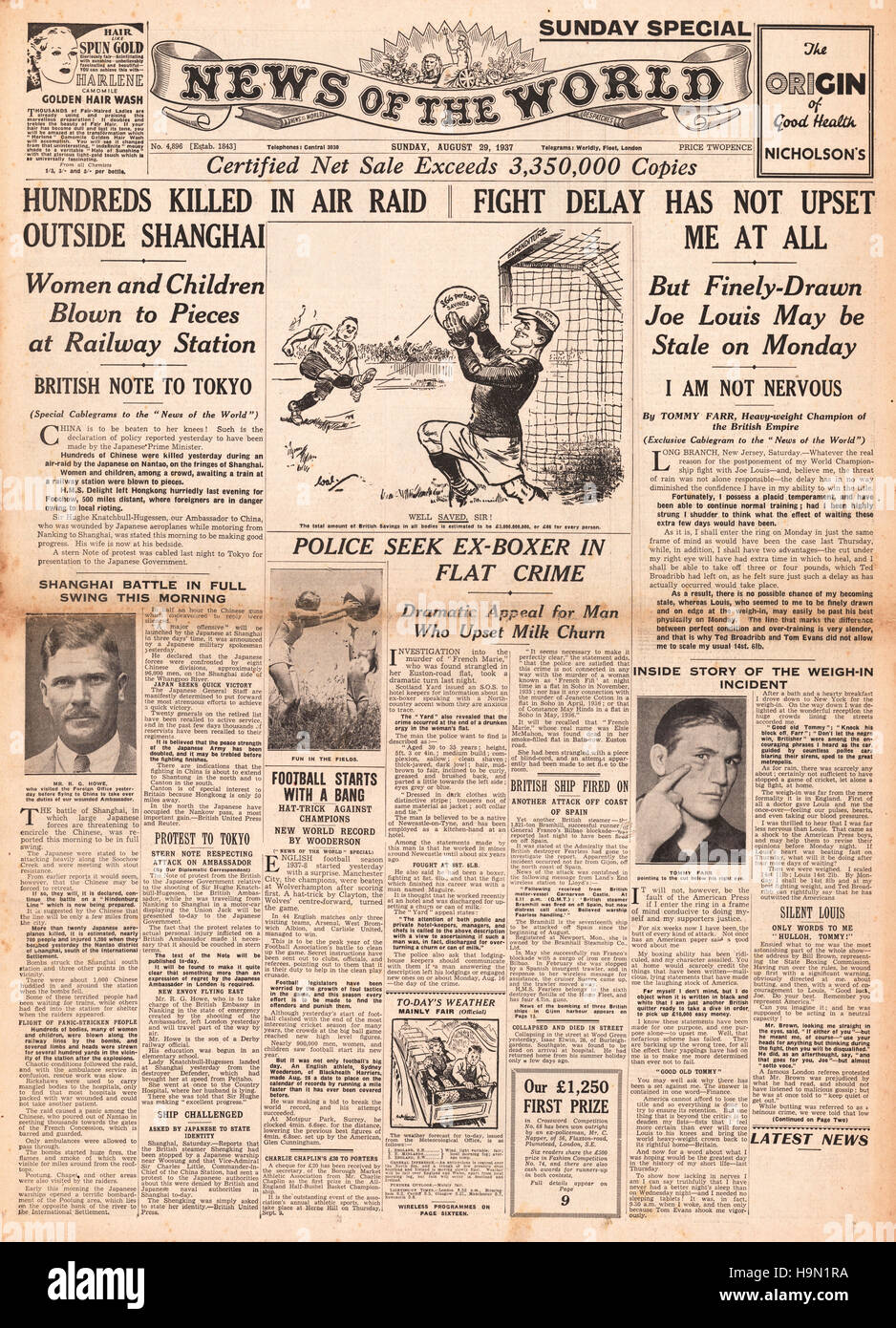 1937 News of the World front page Bombing of Shanghai Stock Photohttps://www.alamy.com/image-license-details/?v=1https://www.alamy.com/stock-photo-1937-news-of-the-world-front-page-bombing-of-shanghai-126466910.html
1937 News of the World front page Bombing of Shanghai Stock Photohttps://www.alamy.com/image-license-details/?v=1https://www.alamy.com/stock-photo-1937-news-of-the-world-front-page-bombing-of-shanghai-126466910.htmlRMH9N1RA–1937 News of the World front page Bombing of Shanghai
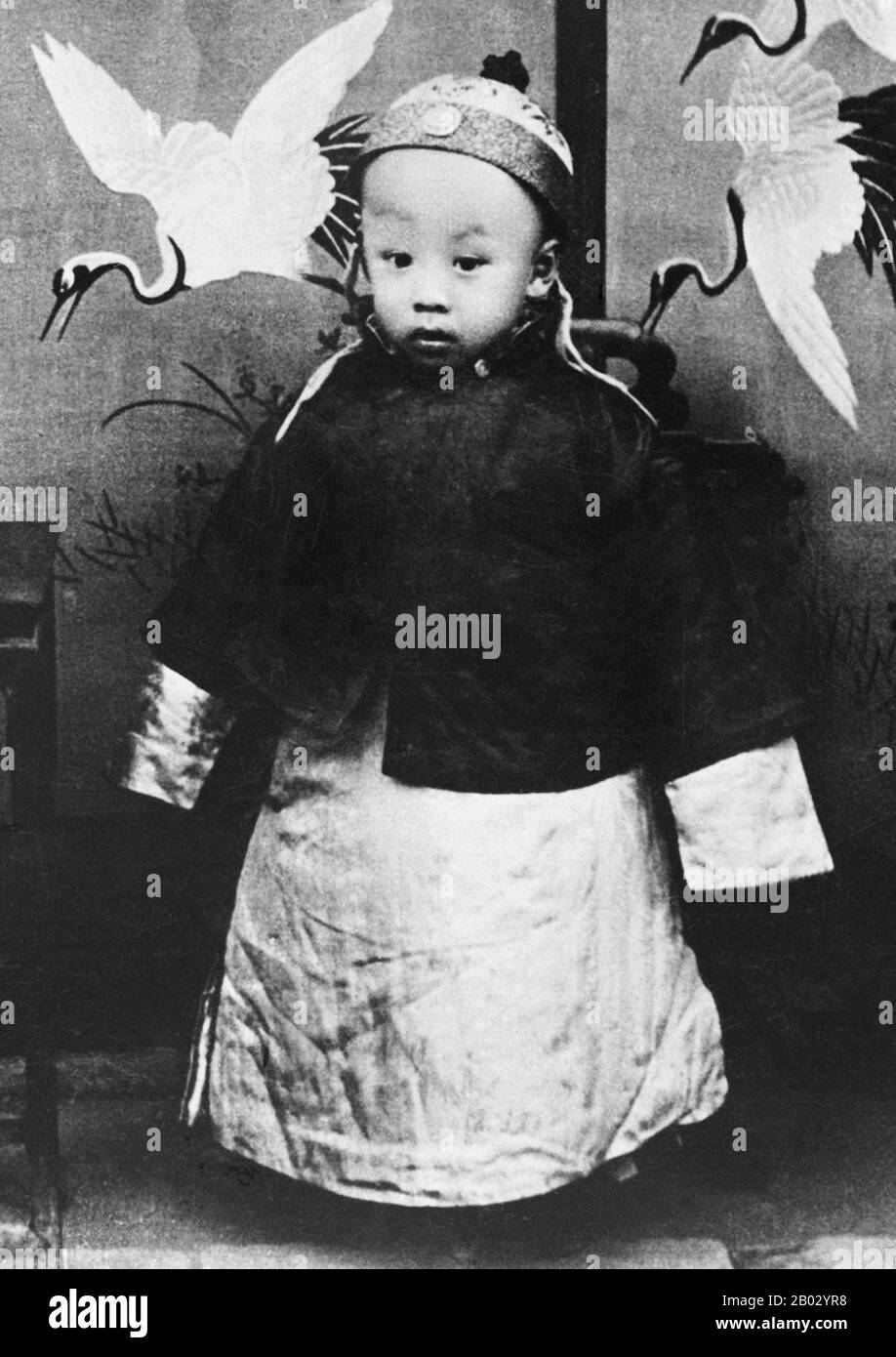 Aisin-Gioro Pu Yi (7 February 1906 – 17 October 1967), of the Manchu Aisin Gioro ruling family, was the last Emperor of China. He ruled in two periods between 1908 and 1917, firstly as the Xuantong Emperor from 1908 to 1912, and nominally as a non-ruling puppet emperor for twelve days in 1917. He was the twelfth and final member of the Qing Dynasty to rule over China proper. Stock Photohttps://www.alamy.com/image-license-details/?v=1https://www.alamy.com/aisin-gioro-pu-yi-7-february-1906-17-october-1967-of-the-manchu-aisin-gioro-ruling-family-was-the-last-emperor-of-china-he-ruled-in-two-periods-between-1908-and-1917-firstly-as-the-xuantong-emperor-from-1908-to-1912-and-nominally-as-a-non-ruling-puppet-emperor-for-twelve-days-in-1917-he-was-the-twelfth-and-final-member-of-the-qing-dynasty-to-rule-over-china-proper-image344273084.html
Aisin-Gioro Pu Yi (7 February 1906 – 17 October 1967), of the Manchu Aisin Gioro ruling family, was the last Emperor of China. He ruled in two periods between 1908 and 1917, firstly as the Xuantong Emperor from 1908 to 1912, and nominally as a non-ruling puppet emperor for twelve days in 1917. He was the twelfth and final member of the Qing Dynasty to rule over China proper. Stock Photohttps://www.alamy.com/image-license-details/?v=1https://www.alamy.com/aisin-gioro-pu-yi-7-february-1906-17-october-1967-of-the-manchu-aisin-gioro-ruling-family-was-the-last-emperor-of-china-he-ruled-in-two-periods-between-1908-and-1917-firstly-as-the-xuantong-emperor-from-1908-to-1912-and-nominally-as-a-non-ruling-puppet-emperor-for-twelve-days-in-1917-he-was-the-twelfth-and-final-member-of-the-qing-dynasty-to-rule-over-china-proper-image344273084.htmlRM2B02YR8–Aisin-Gioro Pu Yi (7 February 1906 – 17 October 1967), of the Manchu Aisin Gioro ruling family, was the last Emperor of China. He ruled in two periods between 1908 and 1917, firstly as the Xuantong Emperor from 1908 to 1912, and nominally as a non-ruling puppet emperor for twelve days in 1917. He was the twelfth and final member of the Qing Dynasty to rule over China proper.
 Delegation of the League with Henry Puyi, 1932 Stock Photohttps://www.alamy.com/image-license-details/?v=1https://www.alamy.com/stock-photo-delegation-of-the-league-with-henry-puyi-1932-48398207.html
Delegation of the League with Henry Puyi, 1932 Stock Photohttps://www.alamy.com/image-license-details/?v=1https://www.alamy.com/stock-photo-delegation-of-the-league-with-henry-puyi-1932-48398207.htmlRMCPMMBB–Delegation of the League with Henry Puyi, 1932
 Chinese residents of Manchuria read Japanese announcements. They report establishment of the Republic of Manchukuo with Mr. Stock Photohttps://www.alamy.com/image-license-details/?v=1https://www.alamy.com/stock-photo-chinese-residents-of-manchuria-read-japanese-announcements-they-report-78825369.html
Chinese residents of Manchuria read Japanese announcements. They report establishment of the Republic of Manchukuo with Mr. Stock Photohttps://www.alamy.com/image-license-details/?v=1https://www.alamy.com/stock-photo-chinese-residents-of-manchuria-read-japanese-announcements-they-report-78825369.htmlRMEG6PFN–Chinese residents of Manchuria read Japanese announcements. They report establishment of the Republic of Manchukuo with Mr.
 Chinese residents of Manchuria read Japanese announcements. They report establishment of the Republic of Manchukuo with Mr. Stock Photohttps://www.alamy.com/image-license-details/?v=1https://www.alamy.com/stock-photo-chinese-residents-of-manchuria-read-japanese-announcements-they-report-78825085.html
Chinese residents of Manchuria read Japanese announcements. They report establishment of the Republic of Manchukuo with Mr. Stock Photohttps://www.alamy.com/image-license-details/?v=1https://www.alamy.com/stock-photo-chinese-residents-of-manchuria-read-japanese-announcements-they-report-78825085.htmlRMEG6P5H–Chinese residents of Manchuria read Japanese announcements. They report establishment of the Republic of Manchukuo with Mr.
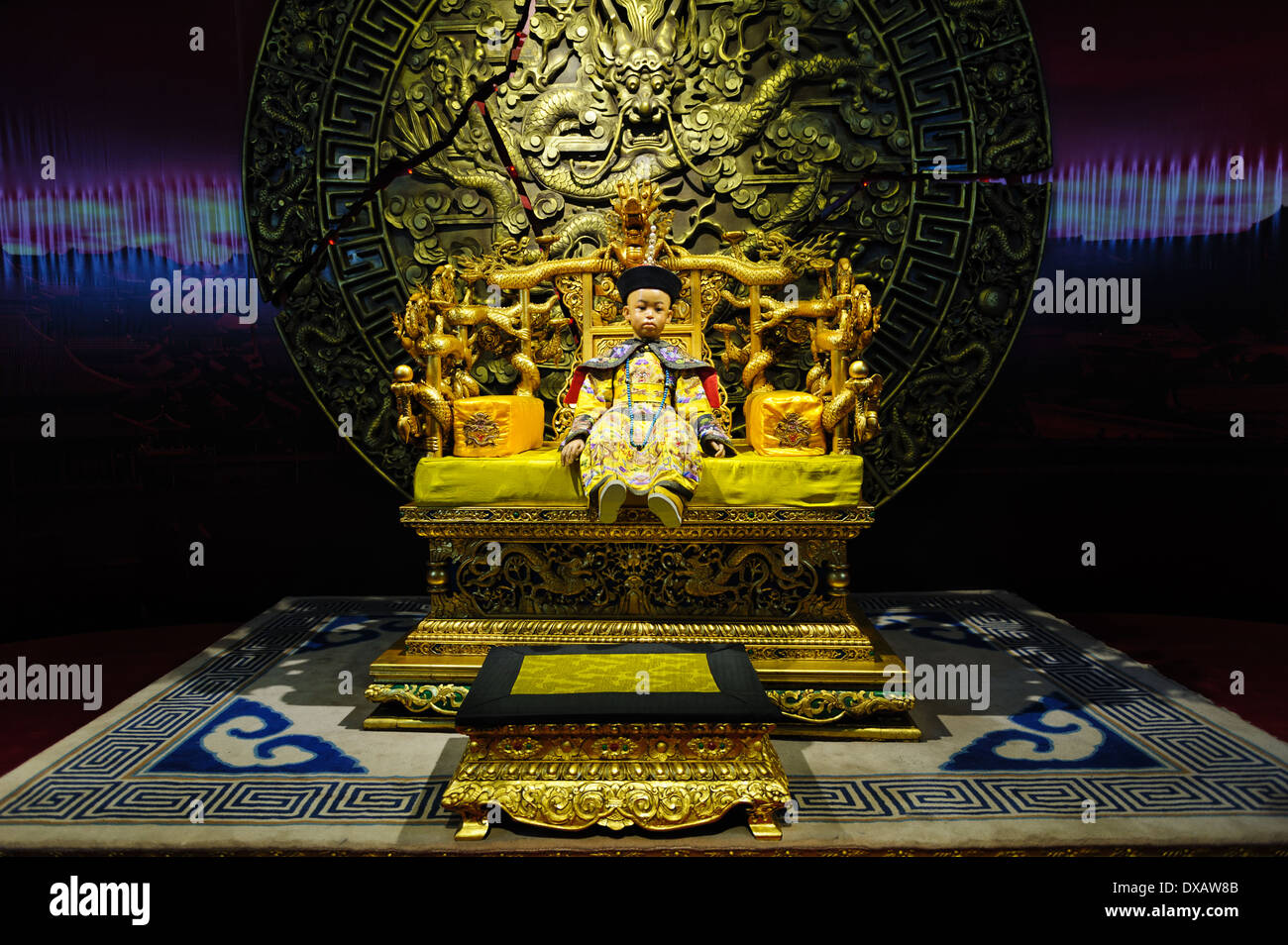 Display of the Last Qing Emperor Puyi as a young boy on his Throne . Puppet Emperor's Palace & Exhibition Hall .Changchun. China Stock Photohttps://www.alamy.com/image-license-details/?v=1https://www.alamy.com/display-of-the-last-qing-emperor-puyi-as-a-young-boy-on-his-throne-image67851515.html
Display of the Last Qing Emperor Puyi as a young boy on his Throne . Puppet Emperor's Palace & Exhibition Hall .Changchun. China Stock Photohttps://www.alamy.com/image-license-details/?v=1https://www.alamy.com/display-of-the-last-qing-emperor-puyi-as-a-young-boy-on-his-throne-image67851515.htmlRMDXAW8B–Display of the Last Qing Emperor Puyi as a young boy on his Throne . Puppet Emperor's Palace & Exhibition Hall .Changchun. China
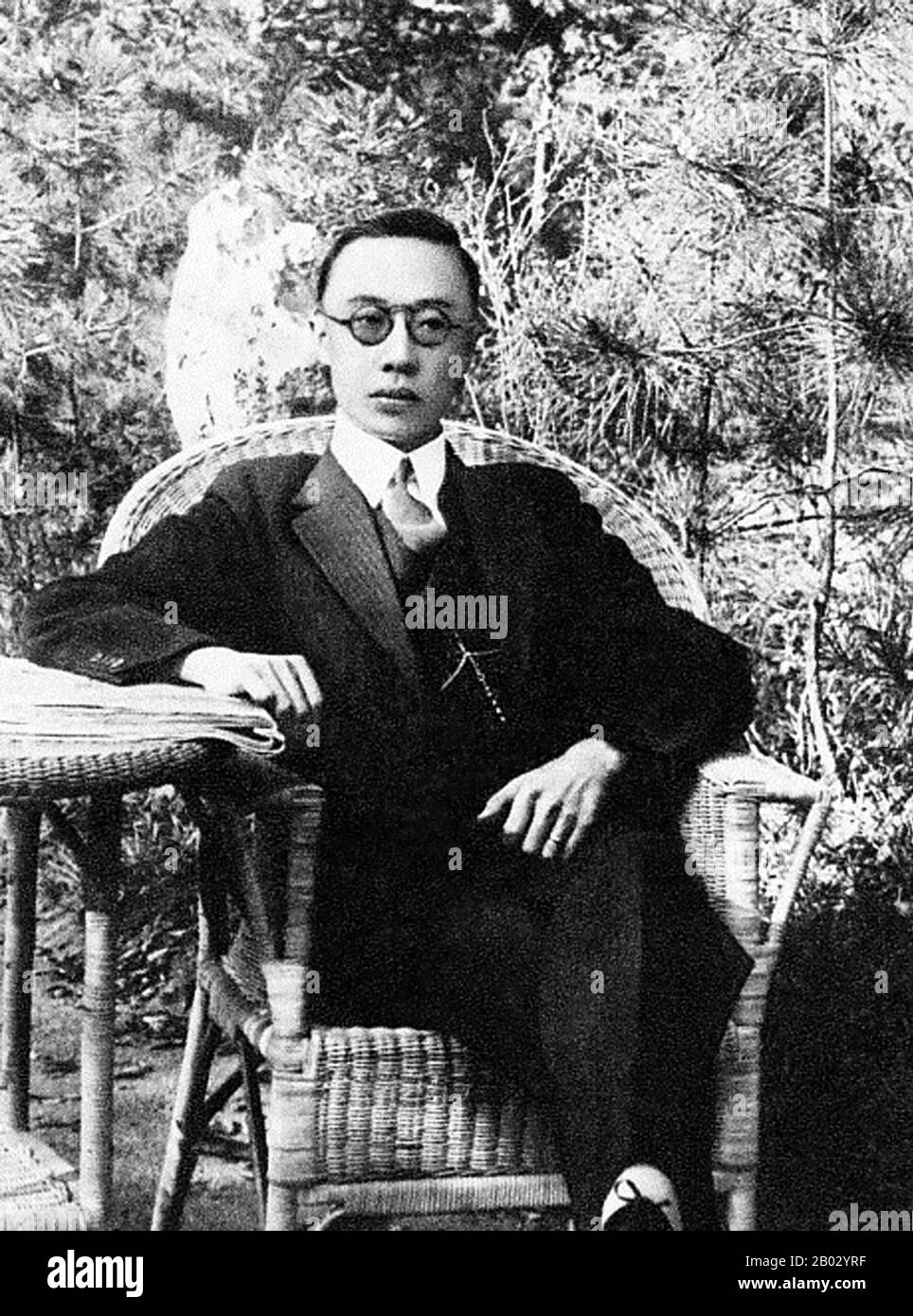 Aisin-Gioro Pu Yi (7 February 1906 – 17 October 1967), of the Manchu Aisin Gioro ruling family, was the last Emperor of China. He ruled in two periods between 1908 and 1917, firstly as the Xuantong Emperor from 1908 to 1912, and nominally as a non-ruling puppet emperor for twelve days in 1917. He was the twelfth and final member of the Qing Dynasty to rule over China proper. Stock Photohttps://www.alamy.com/image-license-details/?v=1https://www.alamy.com/aisin-gioro-pu-yi-7-february-1906-17-october-1967-of-the-manchu-aisin-gioro-ruling-family-was-the-last-emperor-of-china-he-ruled-in-two-periods-between-1908-and-1917-firstly-as-the-xuantong-emperor-from-1908-to-1912-and-nominally-as-a-non-ruling-puppet-emperor-for-twelve-days-in-1917-he-was-the-twelfth-and-final-member-of-the-qing-dynasty-to-rule-over-china-proper-image344273091.html
Aisin-Gioro Pu Yi (7 February 1906 – 17 October 1967), of the Manchu Aisin Gioro ruling family, was the last Emperor of China. He ruled in two periods between 1908 and 1917, firstly as the Xuantong Emperor from 1908 to 1912, and nominally as a non-ruling puppet emperor for twelve days in 1917. He was the twelfth and final member of the Qing Dynasty to rule over China proper. Stock Photohttps://www.alamy.com/image-license-details/?v=1https://www.alamy.com/aisin-gioro-pu-yi-7-february-1906-17-october-1967-of-the-manchu-aisin-gioro-ruling-family-was-the-last-emperor-of-china-he-ruled-in-two-periods-between-1908-and-1917-firstly-as-the-xuantong-emperor-from-1908-to-1912-and-nominally-as-a-non-ruling-puppet-emperor-for-twelve-days-in-1917-he-was-the-twelfth-and-final-member-of-the-qing-dynasty-to-rule-over-china-proper-image344273091.htmlRM2B02YRF–Aisin-Gioro Pu Yi (7 February 1906 – 17 October 1967), of the Manchu Aisin Gioro ruling family, was the last Emperor of China. He ruled in two periods between 1908 and 1917, firstly as the Xuantong Emperor from 1908 to 1912, and nominally as a non-ruling puppet emperor for twelve days in 1917. He was the twelfth and final member of the Qing Dynasty to rule over China proper.
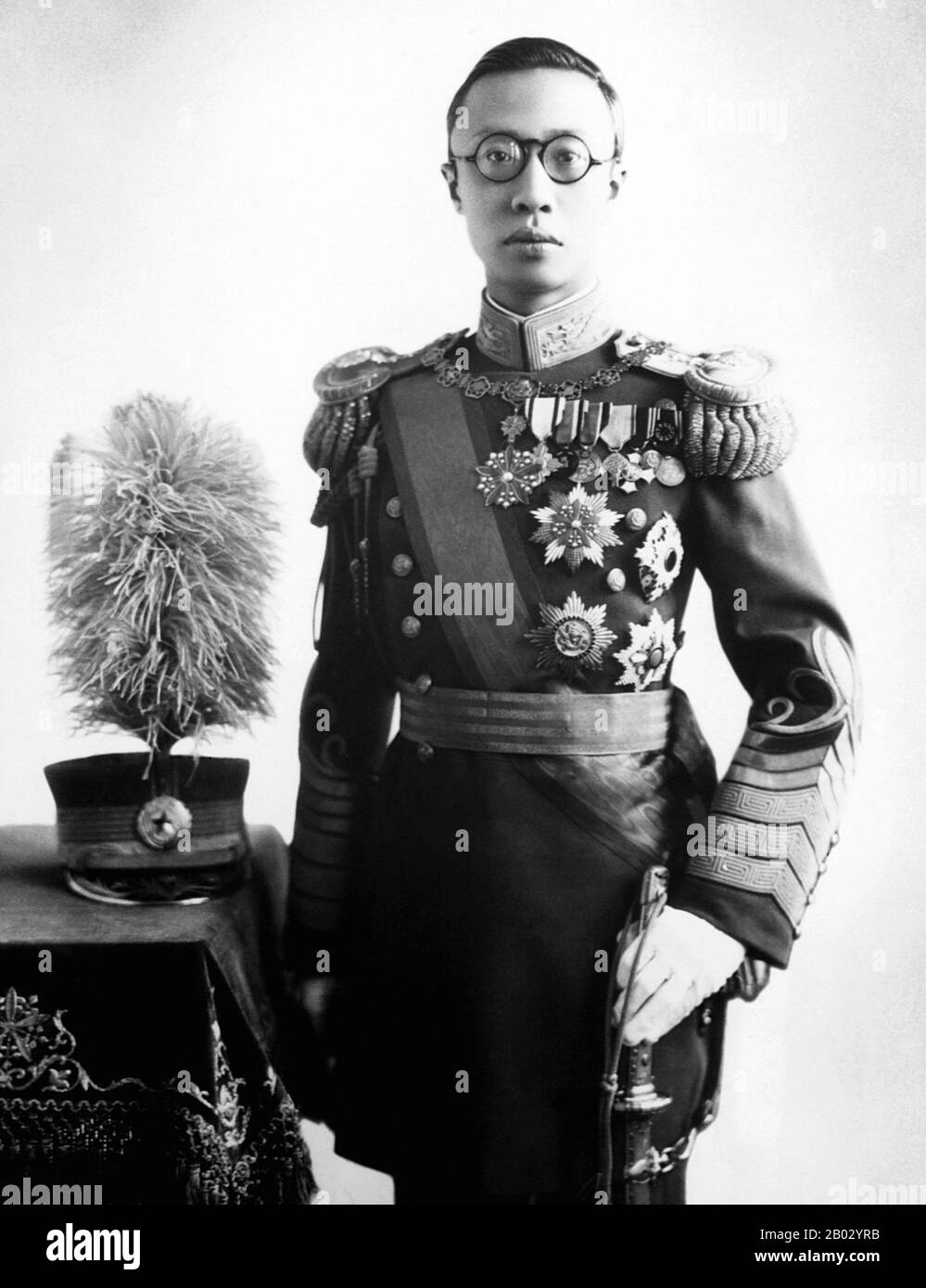 Aisin-Gioro Pu Yi (7 February 1906 – 17 October 1967), of the Manchu Aisin Gioro ruling family, was the last Emperor of China. He ruled in two periods between 1908 and 1917, firstly as the Xuantong Emperor from 1908 to 1912, and nominally as a non-ruling puppet emperor for twelve days in 1917. He was the twelfth and final member of the Qing Dynasty to rule over China proper. Stock Photohttps://www.alamy.com/image-license-details/?v=1https://www.alamy.com/aisin-gioro-pu-yi-7-february-1906-17-october-1967-of-the-manchu-aisin-gioro-ruling-family-was-the-last-emperor-of-china-he-ruled-in-two-periods-between-1908-and-1917-firstly-as-the-xuantong-emperor-from-1908-to-1912-and-nominally-as-a-non-ruling-puppet-emperor-for-twelve-days-in-1917-he-was-the-twelfth-and-final-member-of-the-qing-dynasty-to-rule-over-china-proper-image344273087.html
Aisin-Gioro Pu Yi (7 February 1906 – 17 October 1967), of the Manchu Aisin Gioro ruling family, was the last Emperor of China. He ruled in two periods between 1908 and 1917, firstly as the Xuantong Emperor from 1908 to 1912, and nominally as a non-ruling puppet emperor for twelve days in 1917. He was the twelfth and final member of the Qing Dynasty to rule over China proper. Stock Photohttps://www.alamy.com/image-license-details/?v=1https://www.alamy.com/aisin-gioro-pu-yi-7-february-1906-17-october-1967-of-the-manchu-aisin-gioro-ruling-family-was-the-last-emperor-of-china-he-ruled-in-two-periods-between-1908-and-1917-firstly-as-the-xuantong-emperor-from-1908-to-1912-and-nominally-as-a-non-ruling-puppet-emperor-for-twelve-days-in-1917-he-was-the-twelfth-and-final-member-of-the-qing-dynasty-to-rule-over-china-proper-image344273087.htmlRM2B02YRB–Aisin-Gioro Pu Yi (7 February 1906 – 17 October 1967), of the Manchu Aisin Gioro ruling family, was the last Emperor of China. He ruled in two periods between 1908 and 1917, firstly as the Xuantong Emperor from 1908 to 1912, and nominally as a non-ruling puppet emperor for twelve days in 1917. He was the twelfth and final member of the Qing Dynasty to rule over China proper.
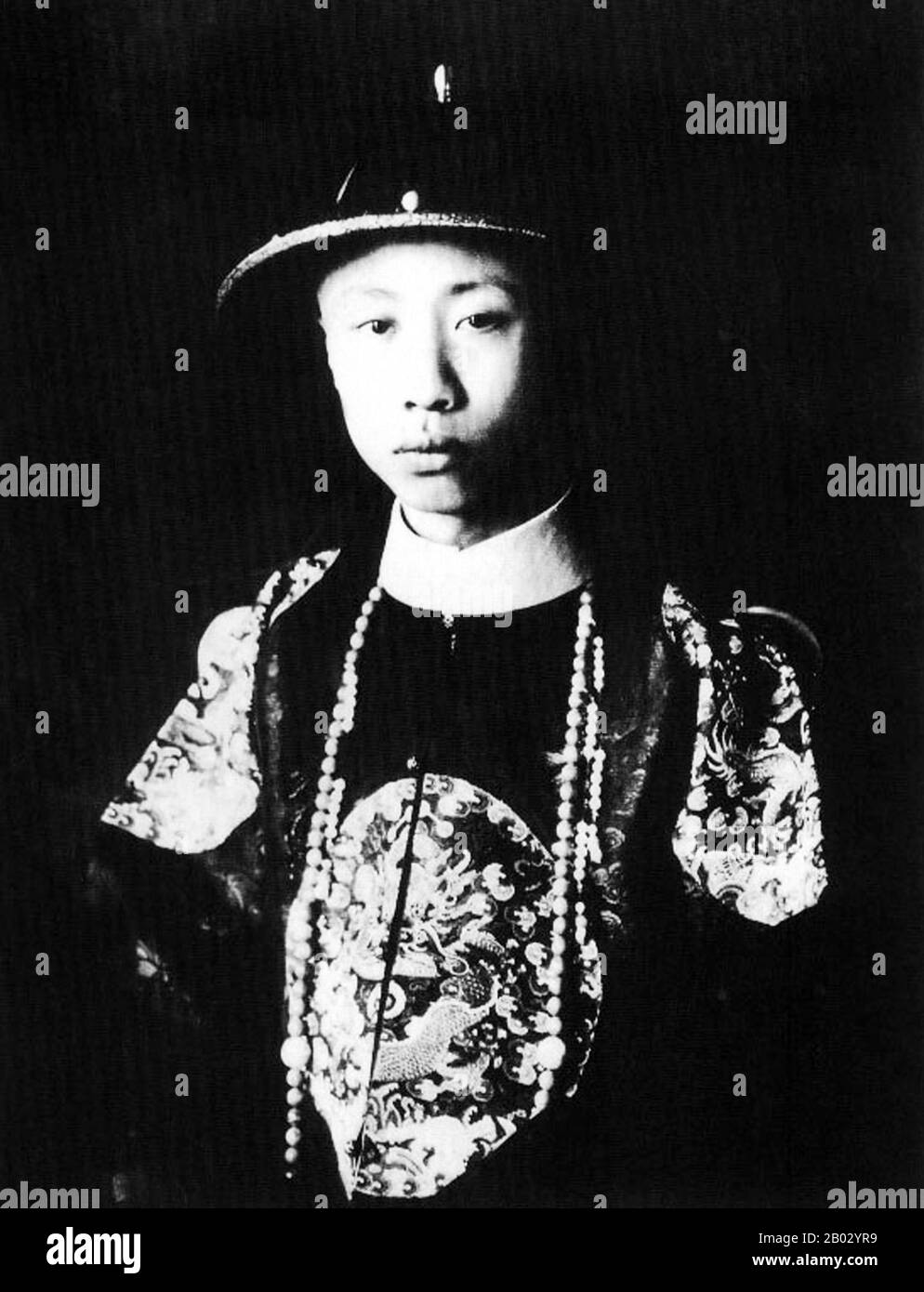 Aisin-Gioro Pu Yi (7 February 1906 – 17 October 1967), of the Manchu Aisin Gioro ruling family, was the last Emperor of China. He ruled in two periods between 1908 and 1917, firstly as the Xuantong Emperor from 1908 to 1912, and nominally as a non-ruling puppet emperor for twelve days in 1917. He was the twelfth and final member of the Qing Dynasty to rule over China proper. Stock Photohttps://www.alamy.com/image-license-details/?v=1https://www.alamy.com/aisin-gioro-pu-yi-7-february-1906-17-october-1967-of-the-manchu-aisin-gioro-ruling-family-was-the-last-emperor-of-china-he-ruled-in-two-periods-between-1908-and-1917-firstly-as-the-xuantong-emperor-from-1908-to-1912-and-nominally-as-a-non-ruling-puppet-emperor-for-twelve-days-in-1917-he-was-the-twelfth-and-final-member-of-the-qing-dynasty-to-rule-over-china-proper-image344273085.html
Aisin-Gioro Pu Yi (7 February 1906 – 17 October 1967), of the Manchu Aisin Gioro ruling family, was the last Emperor of China. He ruled in two periods between 1908 and 1917, firstly as the Xuantong Emperor from 1908 to 1912, and nominally as a non-ruling puppet emperor for twelve days in 1917. He was the twelfth and final member of the Qing Dynasty to rule over China proper. Stock Photohttps://www.alamy.com/image-license-details/?v=1https://www.alamy.com/aisin-gioro-pu-yi-7-february-1906-17-october-1967-of-the-manchu-aisin-gioro-ruling-family-was-the-last-emperor-of-china-he-ruled-in-two-periods-between-1908-and-1917-firstly-as-the-xuantong-emperor-from-1908-to-1912-and-nominally-as-a-non-ruling-puppet-emperor-for-twelve-days-in-1917-he-was-the-twelfth-and-final-member-of-the-qing-dynasty-to-rule-over-china-proper-image344273085.htmlRM2B02YR9–Aisin-Gioro Pu Yi (7 February 1906 – 17 October 1967), of the Manchu Aisin Gioro ruling family, was the last Emperor of China. He ruled in two periods between 1908 and 1917, firstly as the Xuantong Emperor from 1908 to 1912, and nominally as a non-ruling puppet emperor for twelve days in 1917. He was the twelfth and final member of the Qing Dynasty to rule over China proper.
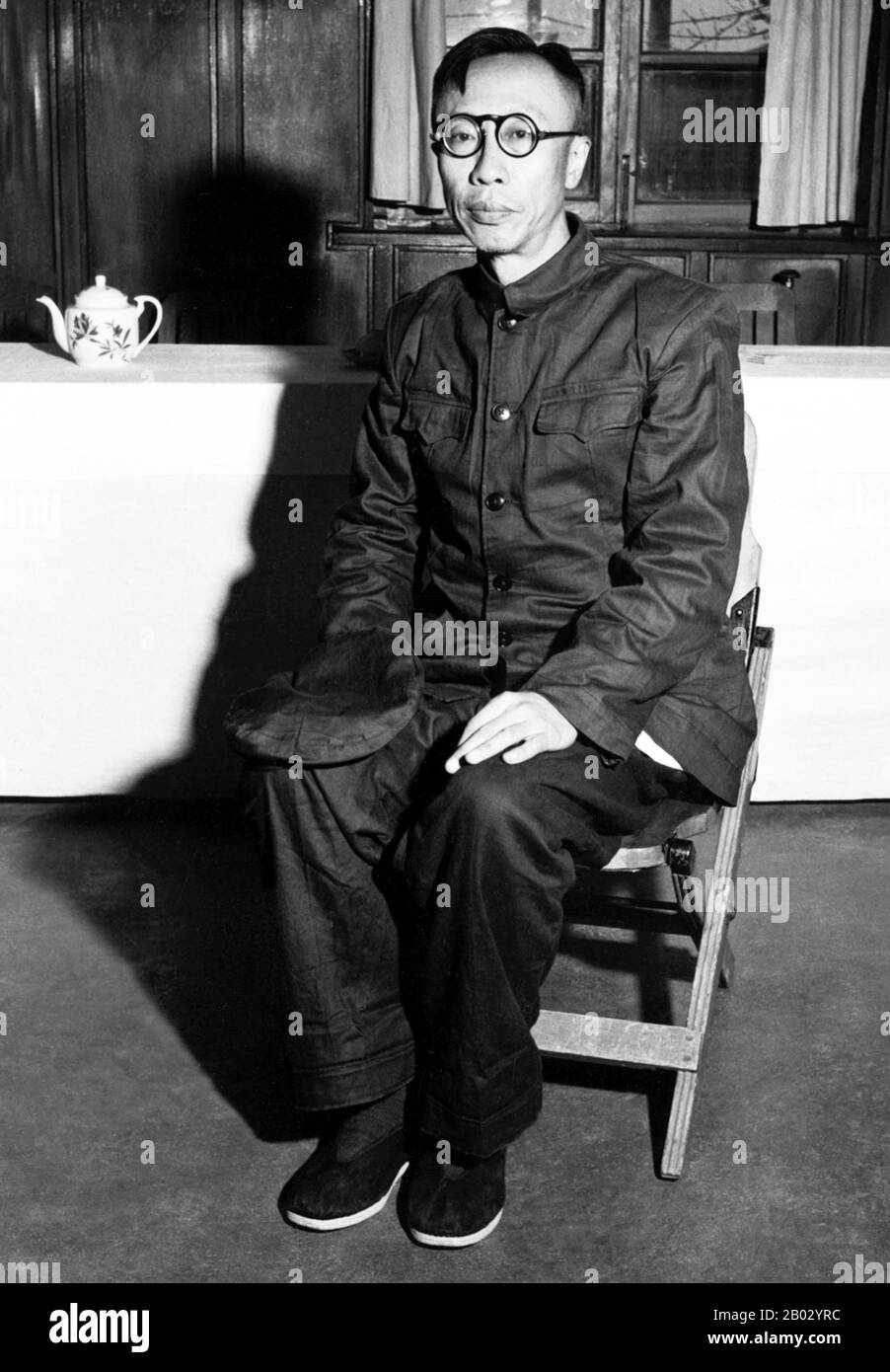 Aisin-Gioro Pu Yi (7 February 1906 – 17 October 1967), of the Manchu Aisin Gioro ruling family, was the last Emperor of China. He ruled in two periods between 1908 and 1917, firstly as the Xuantong Emperor from 1908 to 1912, and nominally as a non-ruling puppet emperor for twelve days in 1917. He was the twelfth and final member of the Qing Dynasty to rule over China proper. Stock Photohttps://www.alamy.com/image-license-details/?v=1https://www.alamy.com/aisin-gioro-pu-yi-7-february-1906-17-october-1967-of-the-manchu-aisin-gioro-ruling-family-was-the-last-emperor-of-china-he-ruled-in-two-periods-between-1908-and-1917-firstly-as-the-xuantong-emperor-from-1908-to-1912-and-nominally-as-a-non-ruling-puppet-emperor-for-twelve-days-in-1917-he-was-the-twelfth-and-final-member-of-the-qing-dynasty-to-rule-over-china-proper-image344273088.html
Aisin-Gioro Pu Yi (7 February 1906 – 17 October 1967), of the Manchu Aisin Gioro ruling family, was the last Emperor of China. He ruled in two periods between 1908 and 1917, firstly as the Xuantong Emperor from 1908 to 1912, and nominally as a non-ruling puppet emperor for twelve days in 1917. He was the twelfth and final member of the Qing Dynasty to rule over China proper. Stock Photohttps://www.alamy.com/image-license-details/?v=1https://www.alamy.com/aisin-gioro-pu-yi-7-february-1906-17-october-1967-of-the-manchu-aisin-gioro-ruling-family-was-the-last-emperor-of-china-he-ruled-in-two-periods-between-1908-and-1917-firstly-as-the-xuantong-emperor-from-1908-to-1912-and-nominally-as-a-non-ruling-puppet-emperor-for-twelve-days-in-1917-he-was-the-twelfth-and-final-member-of-the-qing-dynasty-to-rule-over-china-proper-image344273088.htmlRM2B02YRC–Aisin-Gioro Pu Yi (7 February 1906 – 17 October 1967), of the Manchu Aisin Gioro ruling family, was the last Emperor of China. He ruled in two periods between 1908 and 1917, firstly as the Xuantong Emperor from 1908 to 1912, and nominally as a non-ruling puppet emperor for twelve days in 1917. He was the twelfth and final member of the Qing Dynasty to rule over China proper.
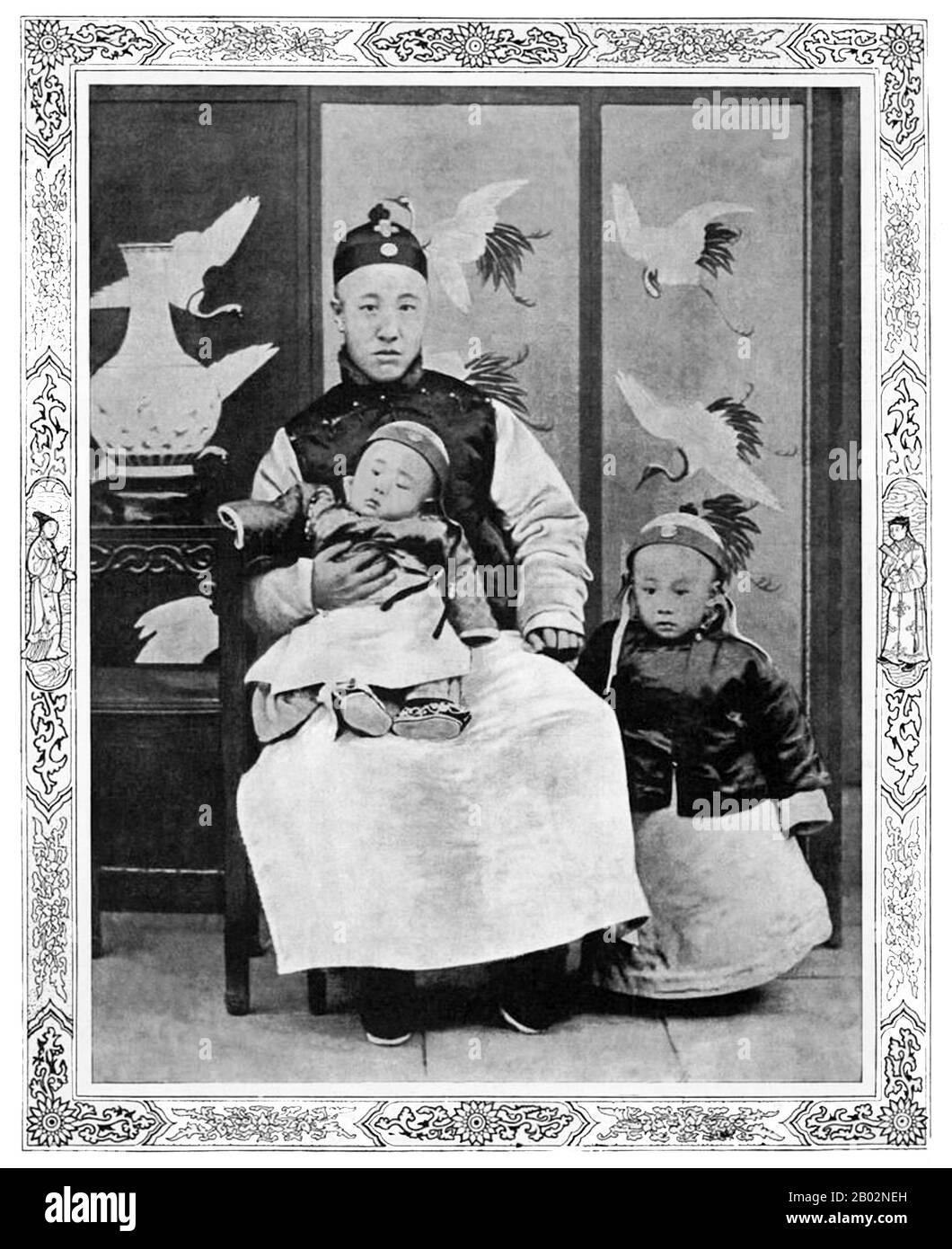 Aisin-Gioro Pu Yi (7 February 1906 – 17 October 1967), of the Manchu Aisin Gioro ruling family, was the last Emperor of China. He ruled in two periods between 1908 and 1917, firstly as the Xuantong Emperor from 1908 to 1912, and nominally as a non-ruling puppet emperor for twelve days in 1917. He was the twelfth and final member of the Qing Dynasty to rule over China proper. Stock Photohttps://www.alamy.com/image-license-details/?v=1https://www.alamy.com/aisin-gioro-pu-yi-7-february-1906-17-october-1967-of-the-manchu-aisin-gioro-ruling-family-was-the-last-emperor-of-china-he-ruled-in-two-periods-between-1908-and-1917-firstly-as-the-xuantong-emperor-from-1908-to-1912-and-nominally-as-a-non-ruling-puppet-emperor-for-twelve-days-in-1917-he-was-the-twelfth-and-final-member-of-the-qing-dynasty-to-rule-over-china-proper-image344268137.html
Aisin-Gioro Pu Yi (7 February 1906 – 17 October 1967), of the Manchu Aisin Gioro ruling family, was the last Emperor of China. He ruled in two periods between 1908 and 1917, firstly as the Xuantong Emperor from 1908 to 1912, and nominally as a non-ruling puppet emperor for twelve days in 1917. He was the twelfth and final member of the Qing Dynasty to rule over China proper. Stock Photohttps://www.alamy.com/image-license-details/?v=1https://www.alamy.com/aisin-gioro-pu-yi-7-february-1906-17-october-1967-of-the-manchu-aisin-gioro-ruling-family-was-the-last-emperor-of-china-he-ruled-in-two-periods-between-1908-and-1917-firstly-as-the-xuantong-emperor-from-1908-to-1912-and-nominally-as-a-non-ruling-puppet-emperor-for-twelve-days-in-1917-he-was-the-twelfth-and-final-member-of-the-qing-dynasty-to-rule-over-china-proper-image344268137.htmlRM2B02NEH–Aisin-Gioro Pu Yi (7 February 1906 – 17 October 1967), of the Manchu Aisin Gioro ruling family, was the last Emperor of China. He ruled in two periods between 1908 and 1917, firstly as the Xuantong Emperor from 1908 to 1912, and nominally as a non-ruling puppet emperor for twelve days in 1917. He was the twelfth and final member of the Qing Dynasty to rule over China proper.
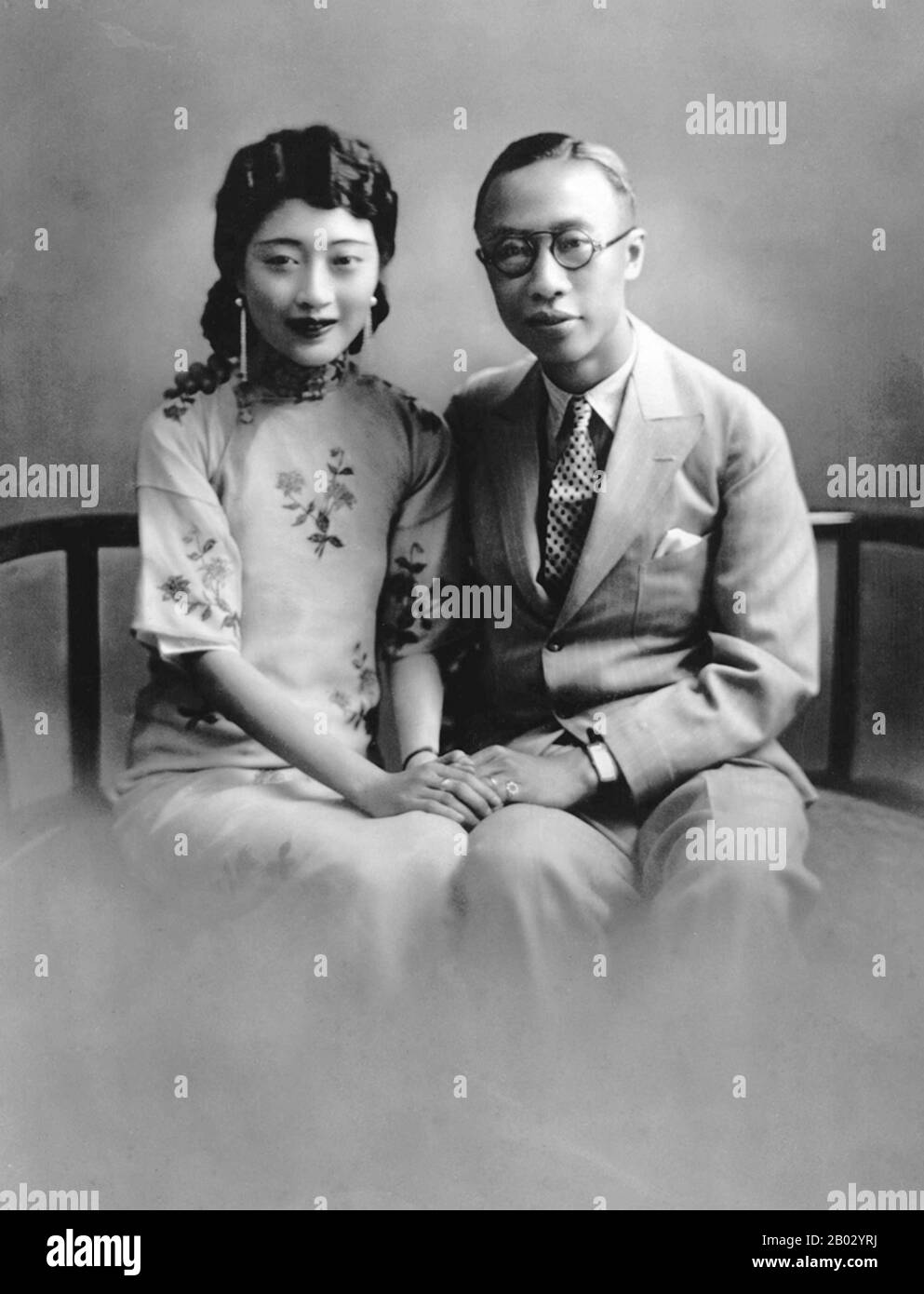 Aisin-Gioro Pu Yi (7 February 1906 – 17 October 1967), of the Manchu Aisin Gioro ruling family, was the last Emperor of China. He ruled in two periods between 1908 and 1917, firstly as the Xuantong Emperor from 1908 to 1912, and nominally as a non-ruling puppet emperor for twelve days in 1917. He was the twelfth and final member of the Qing Dynasty to rule over China proper. Gobulo Wan Rong ('Beautiful Countenance') was the daughter of Rong Yuan, the Minister of Domestic Affairs of the Qing Government and head of one of Manchuria's most prominent, richest families. At the age of 17, Wan Rong Stock Photohttps://www.alamy.com/image-license-details/?v=1https://www.alamy.com/aisin-gioro-pu-yi-7-february-1906-17-october-1967-of-the-manchu-aisin-gioro-ruling-family-was-the-last-emperor-of-china-he-ruled-in-two-periods-between-1908-and-1917-firstly-as-the-xuantong-emperor-from-1908-to-1912-and-nominally-as-a-non-ruling-puppet-emperor-for-twelve-days-in-1917-he-was-the-twelfth-and-final-member-of-the-qing-dynasty-to-rule-over-china-proper-gobulo-wan-rong-beautiful-countenance-was-the-daughter-of-rong-yuan-the-minister-of-domestic-affairs-of-the-qing-government-and-head-of-one-of-manchurias-most-prominent-richest-families-at-the-age-of-17-wan-rong-image344273094.html
Aisin-Gioro Pu Yi (7 February 1906 – 17 October 1967), of the Manchu Aisin Gioro ruling family, was the last Emperor of China. He ruled in two periods between 1908 and 1917, firstly as the Xuantong Emperor from 1908 to 1912, and nominally as a non-ruling puppet emperor for twelve days in 1917. He was the twelfth and final member of the Qing Dynasty to rule over China proper. Gobulo Wan Rong ('Beautiful Countenance') was the daughter of Rong Yuan, the Minister of Domestic Affairs of the Qing Government and head of one of Manchuria's most prominent, richest families. At the age of 17, Wan Rong Stock Photohttps://www.alamy.com/image-license-details/?v=1https://www.alamy.com/aisin-gioro-pu-yi-7-february-1906-17-october-1967-of-the-manchu-aisin-gioro-ruling-family-was-the-last-emperor-of-china-he-ruled-in-two-periods-between-1908-and-1917-firstly-as-the-xuantong-emperor-from-1908-to-1912-and-nominally-as-a-non-ruling-puppet-emperor-for-twelve-days-in-1917-he-was-the-twelfth-and-final-member-of-the-qing-dynasty-to-rule-over-china-proper-gobulo-wan-rong-beautiful-countenance-was-the-daughter-of-rong-yuan-the-minister-of-domestic-affairs-of-the-qing-government-and-head-of-one-of-manchurias-most-prominent-richest-families-at-the-age-of-17-wan-rong-image344273094.htmlRM2B02YRJ–Aisin-Gioro Pu Yi (7 February 1906 – 17 October 1967), of the Manchu Aisin Gioro ruling family, was the last Emperor of China. He ruled in two periods between 1908 and 1917, firstly as the Xuantong Emperor from 1908 to 1912, and nominally as a non-ruling puppet emperor for twelve days in 1917. He was the twelfth and final member of the Qing Dynasty to rule over China proper. Gobulo Wan Rong ('Beautiful Countenance') was the daughter of Rong Yuan, the Minister of Domestic Affairs of the Qing Government and head of one of Manchuria's most prominent, richest families. At the age of 17, Wan Rong